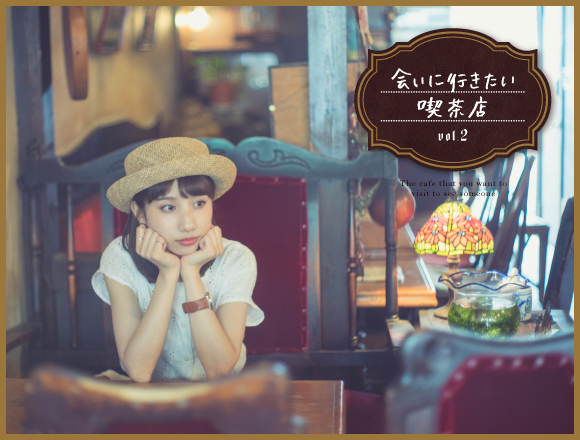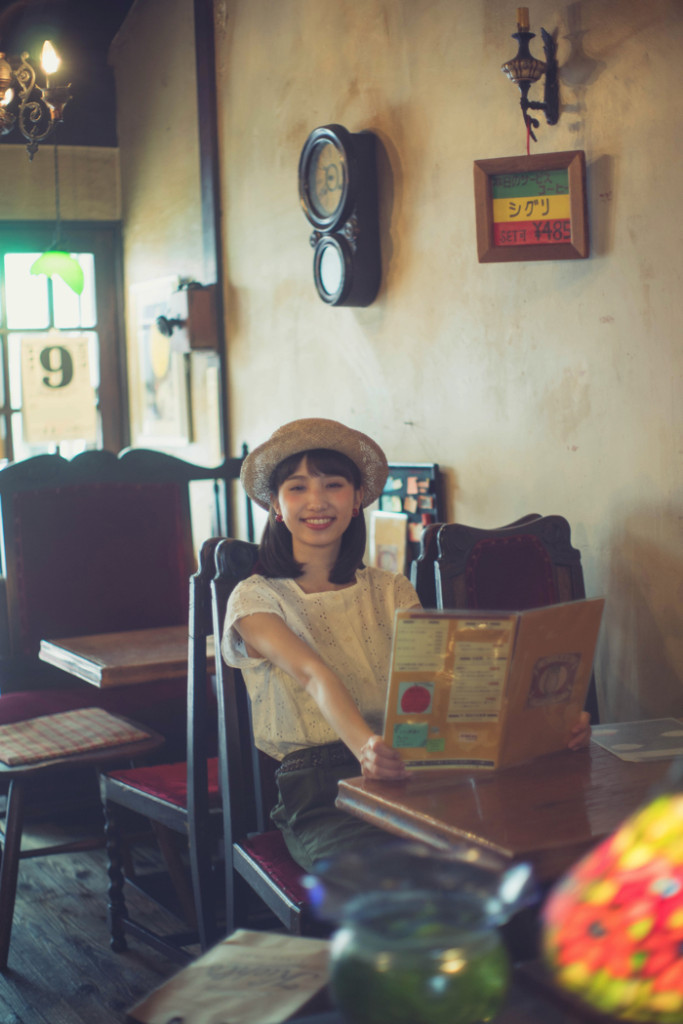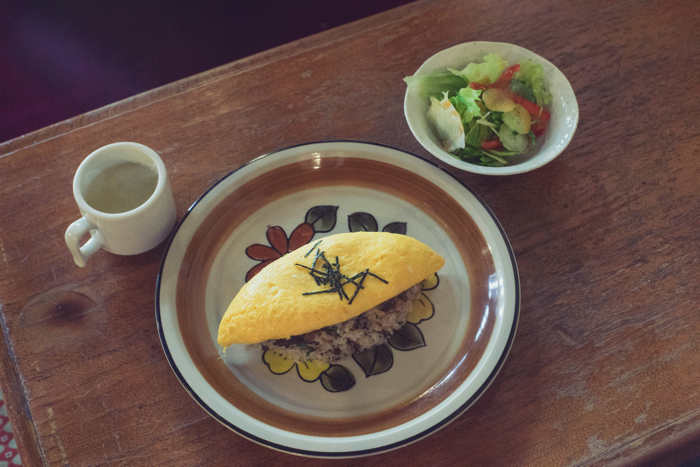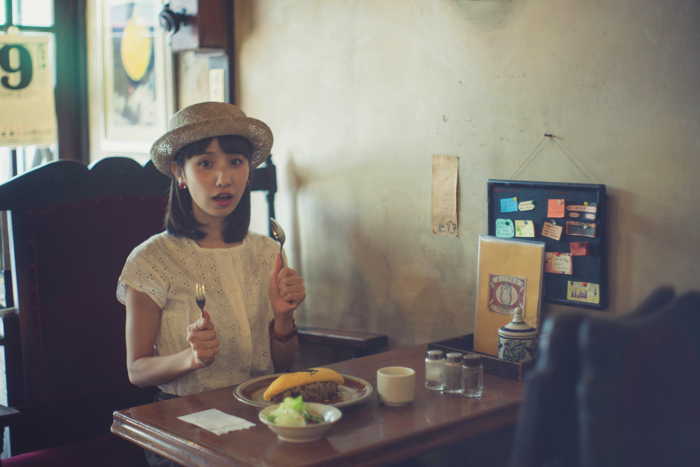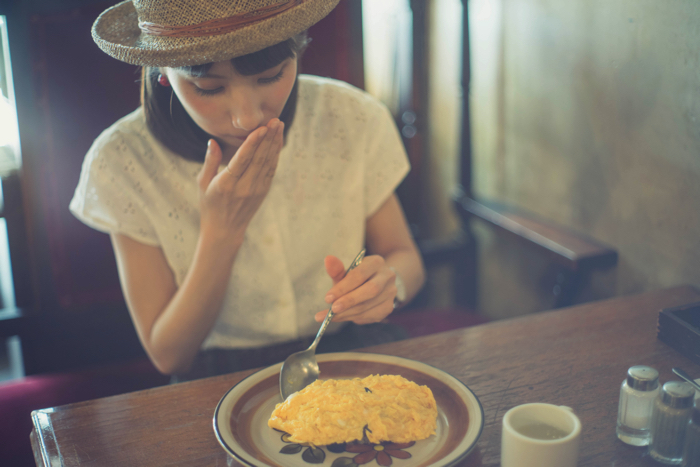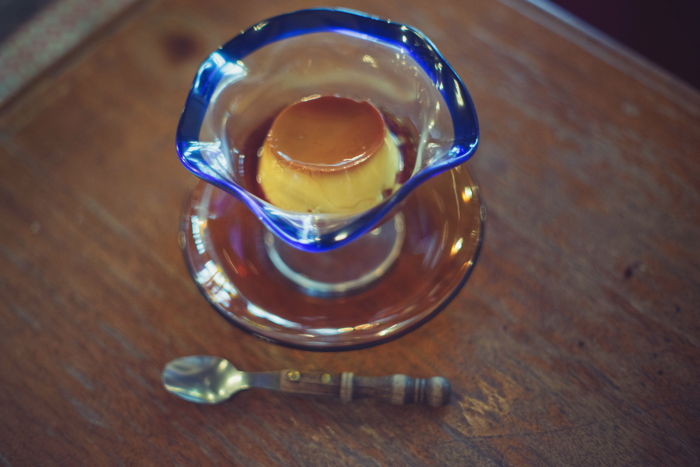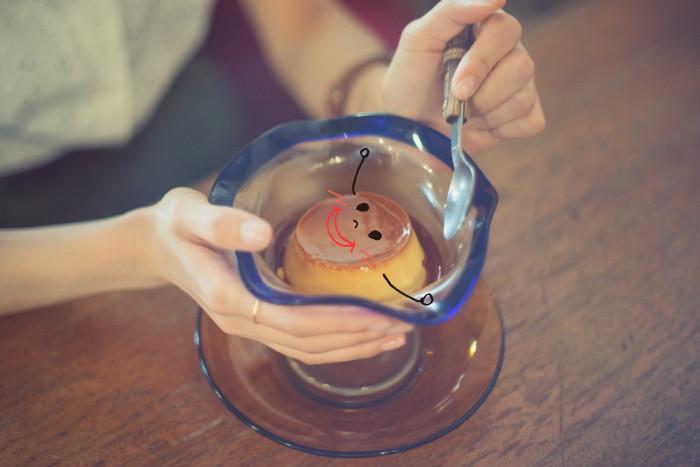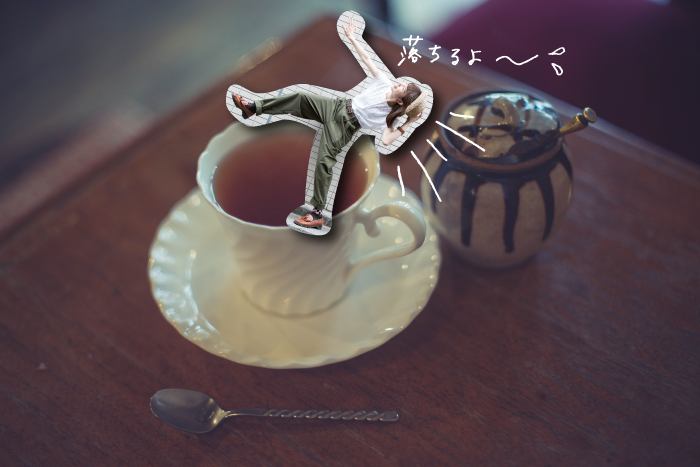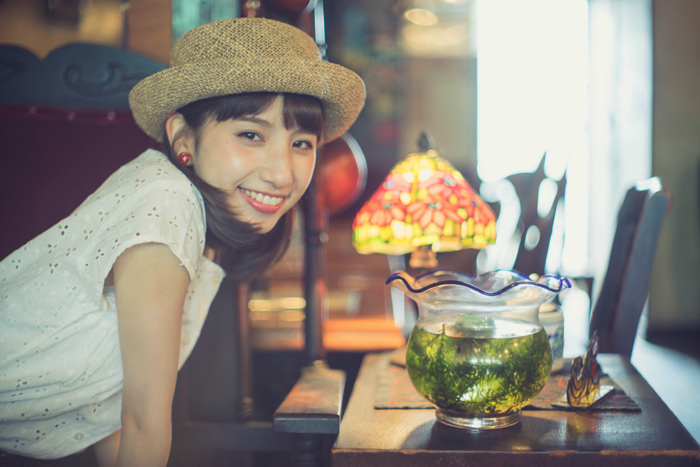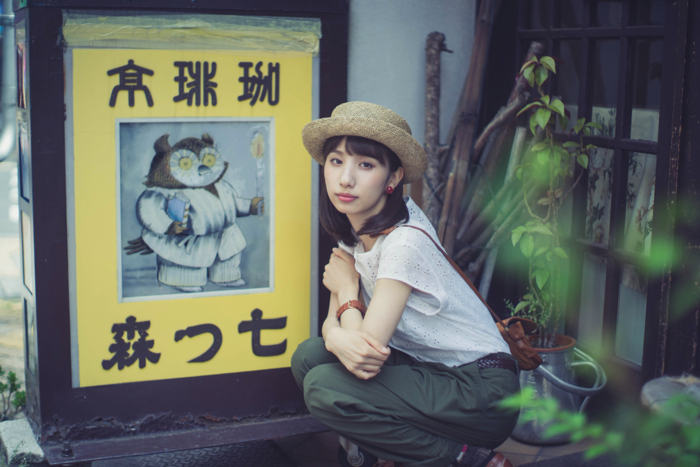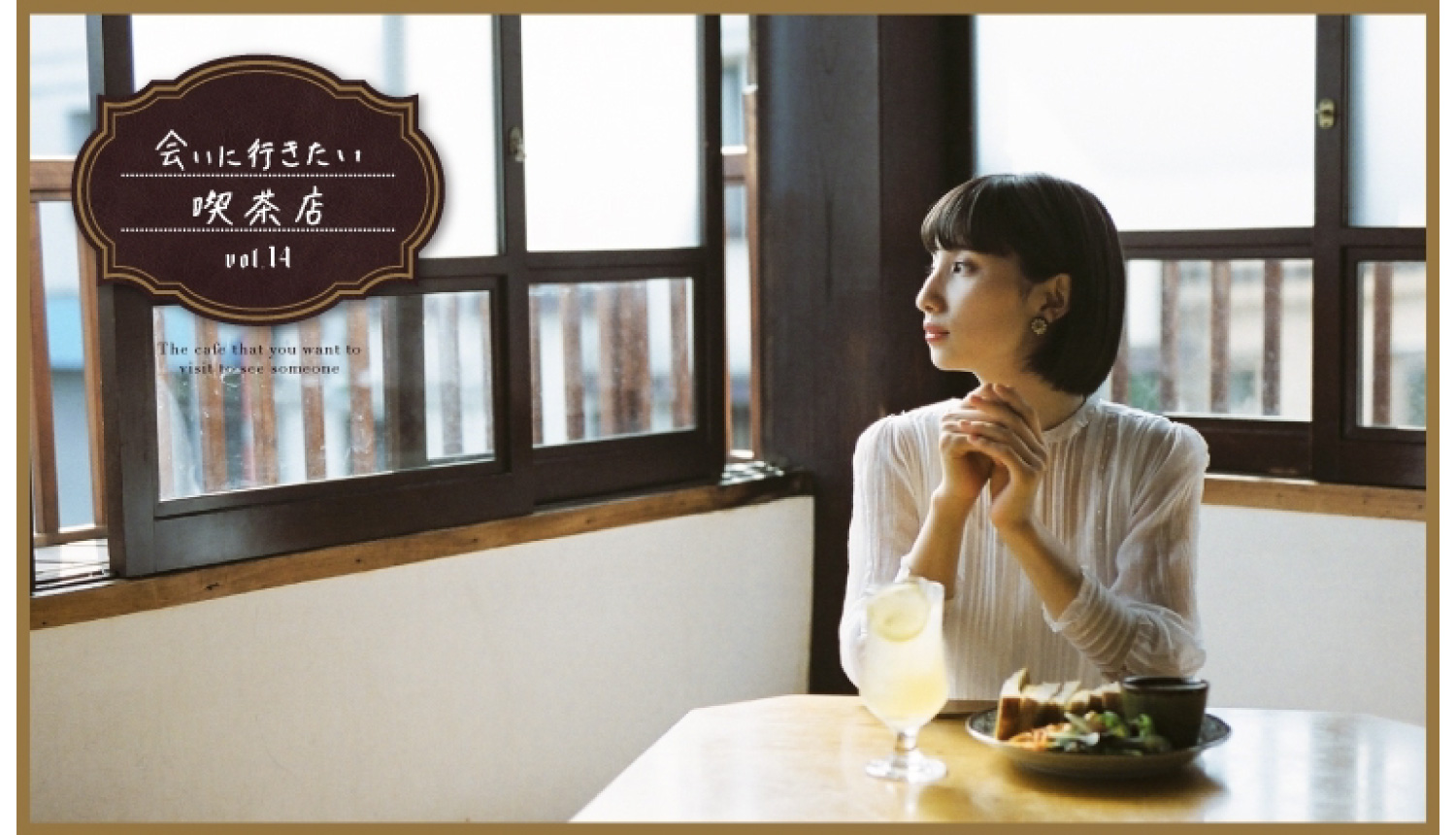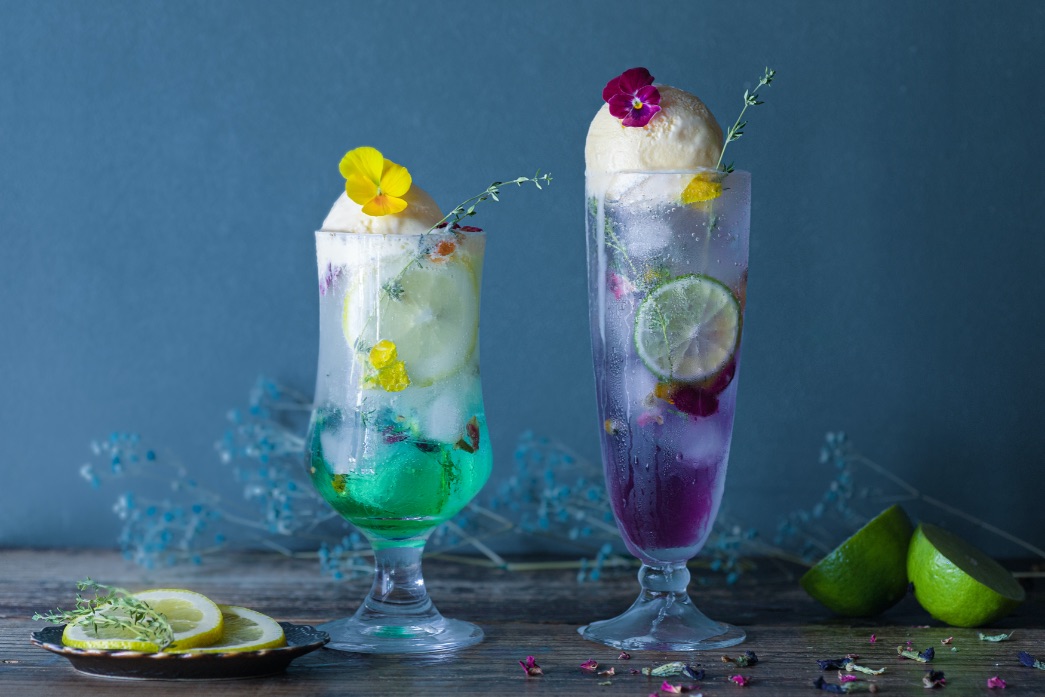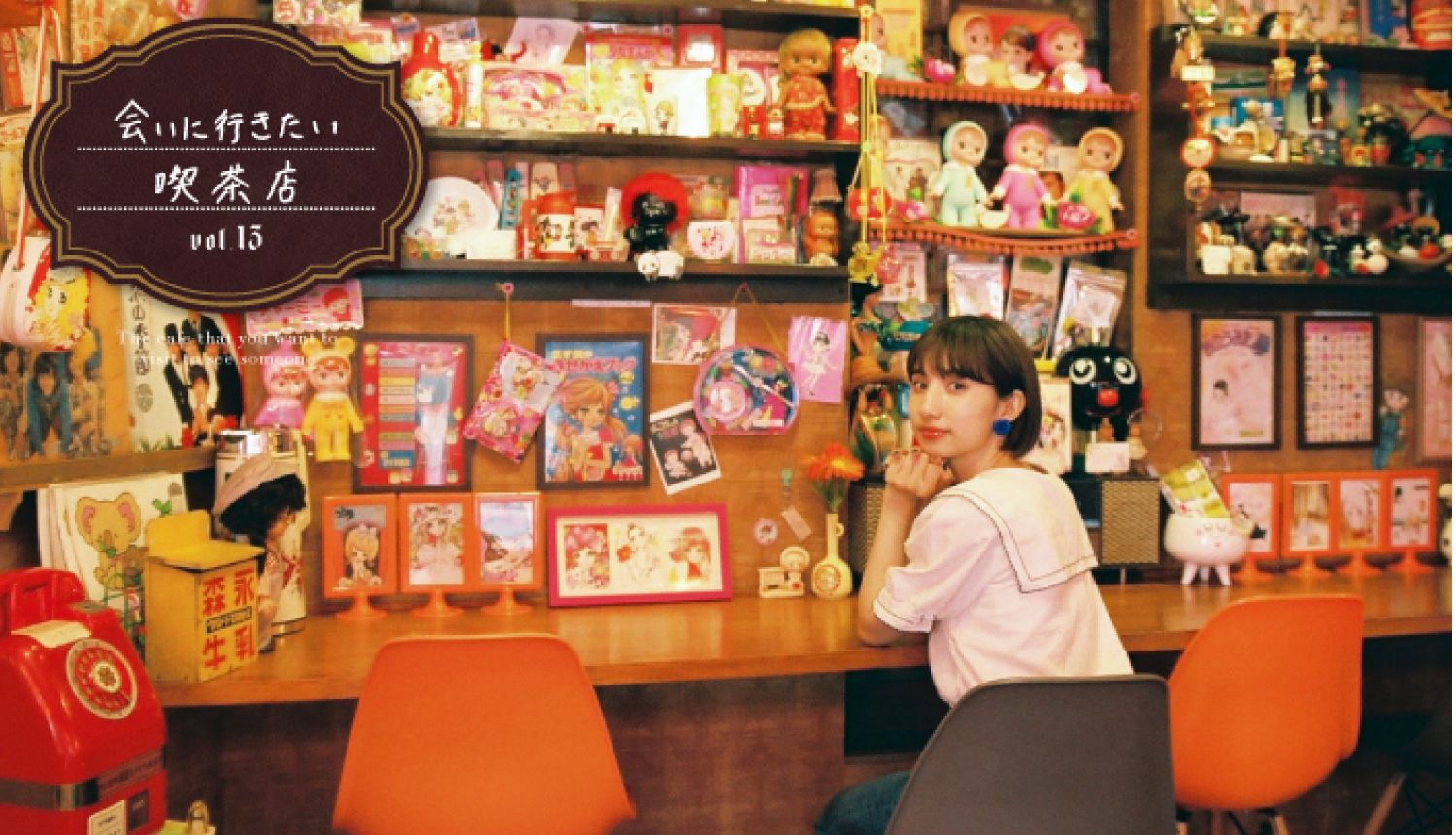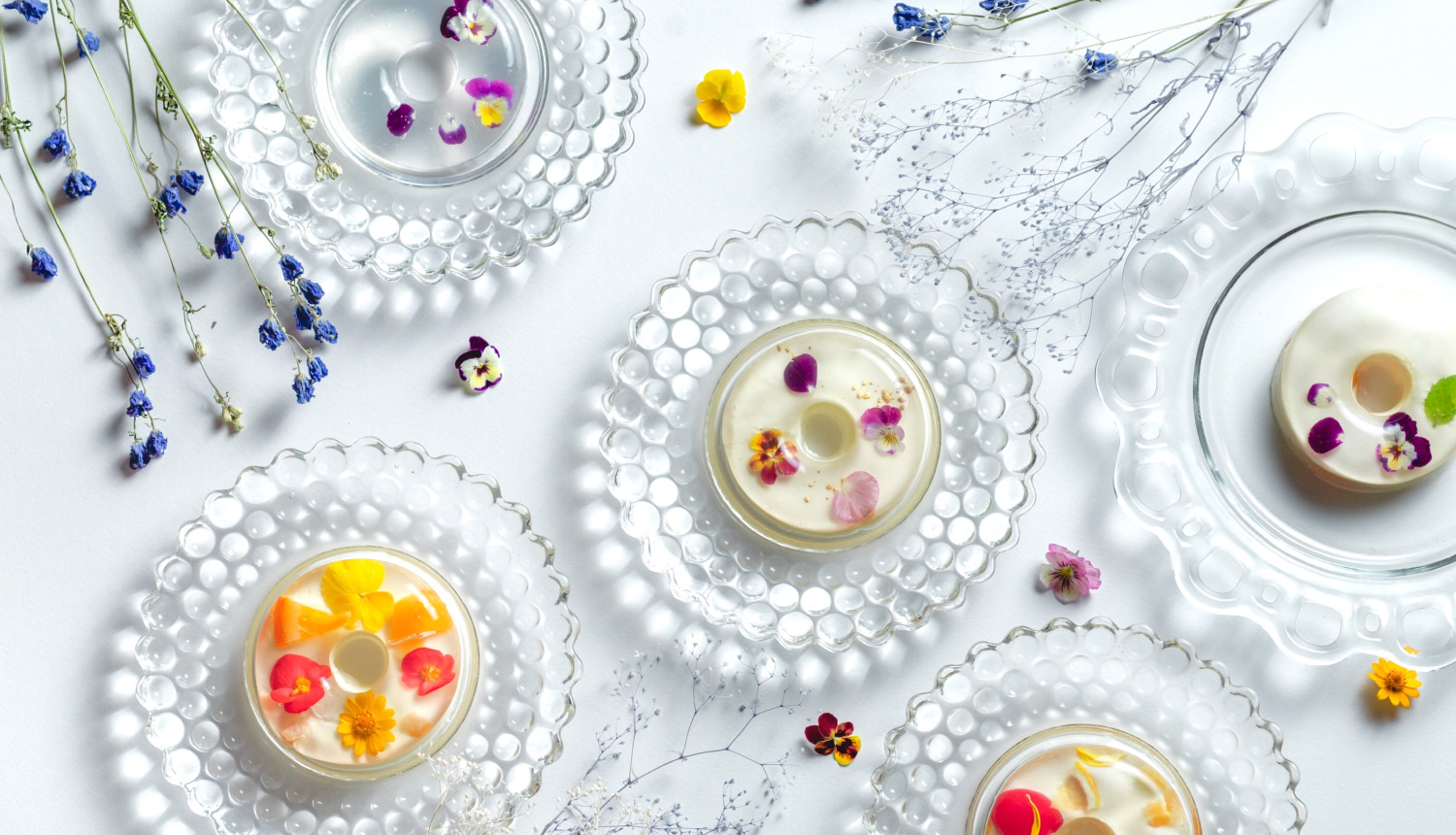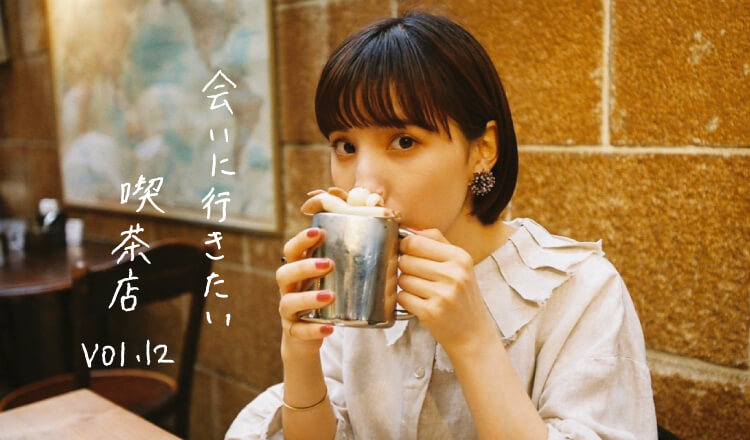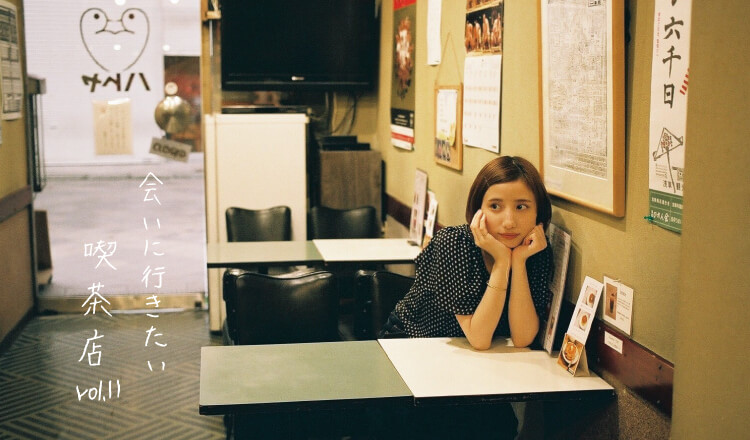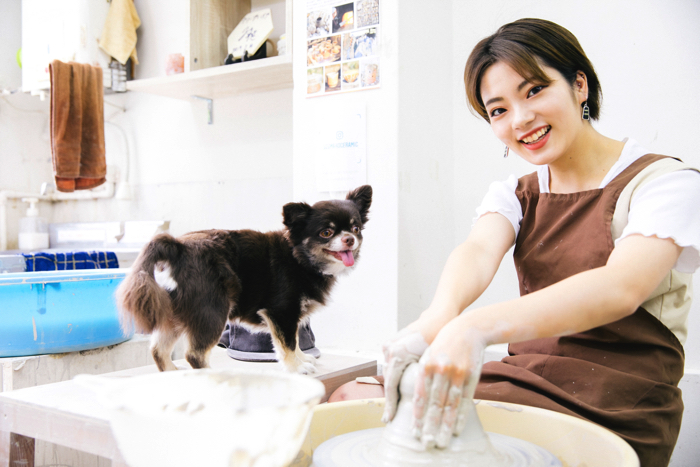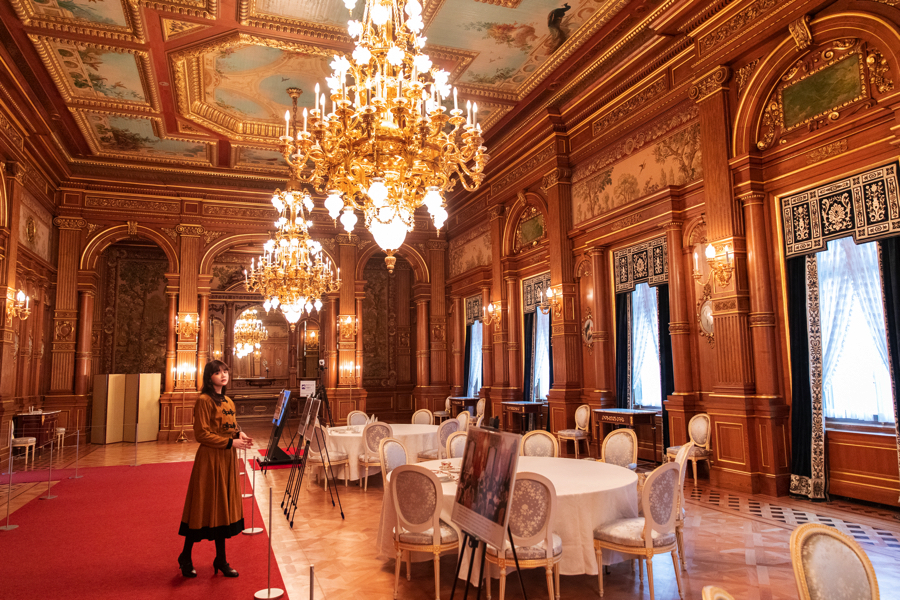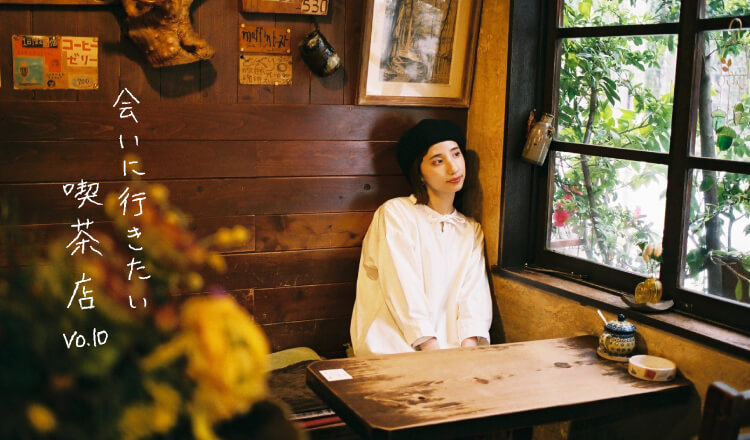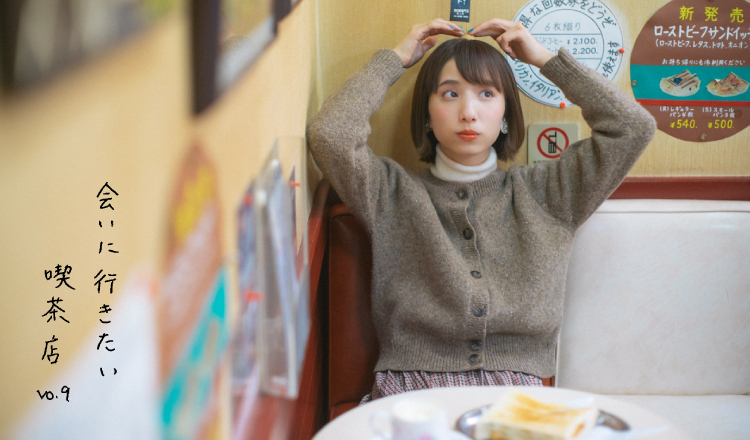【Tokyo Stroll】The cafe that you want to visit to see someone #2 “Nanatsumori”—An Attractive Cafe in Kōenji
I ordered Omurice (¥1,185 w/tax) and a Jumbo Purin (¥625 w/tax) for this visit.
I tucked into my omurice first. But you don’t eat omurice with ketchup here. Instead, it comes with a traditional style seasoning. The rice was mixed with beef, burdock, and enoki mushrooms, as well as a salty-sweet seasoning that tasted like shigureni.
On top of the rice was an omelette that had fresh cream inside. It was wonderful.
The traditional style rice and the sweet-tasting egg went perfectly together! I cleared my plate very quickly.
For dessert, I went with my absolute favourite—custard purin♪
It was served in a cute plate that looked like a goldfish bowl. It looked very photogenic. The purin itself wasn’t the soft kind. It was an old-style purin with elasticity and a gentle flavour.
The caramel sauce was delicious too with its ever so slightly bitter taste. I could have eaten more than one. I also ordered black tea to go with it.
The menu has plenty of other homemade sweets too! I definitely want to try ordering something else the next time I go.
Time passes slowly and restfully at “Nanatsumori,” with its retro atmosphere. You can spend a happy time there surrounded by its gorgeous interior that makes it seem as if you’ve stepped back in time.
It made me think “I want to spend some luxurious time here together with someone special.”
The next time you head on out to Kōenji, be sure to visit here.
■Information
Nanatsumori
Address: 2 Chome-20-20 Kōenjiminami, Suginami, Tokyo
Business Hours: 10:30-24:00 (Last orders at 23:30)
Holidays: None
Access: 3-minutes’ walk from Shin-Kōenji Station / 7-minutes’ walk from Kōenji Station
Writer&Model: Ema Tanioku
Profile:Ema and Eri Tanioku are well-known Aomoji-kei twin models that go by their duo name “EmaEri.” Their twin-like fashion co-ordination and cute looks have earned them a fast growing fan base. They are officially appointed tourism ambassadors and work both in Japan and overseas to promote Harajuku culture. They work as fashion models in a wide range of areas and have appeared in fashion magazines as well as on TV, in dramas, movies and more. Instagram:@ematanioku
Photograph:Haruka Yamamoto
Design:Yuko Abe(ASOBISYSTEM)
Editor:Sayuri Mizuno(ASOBISYSTEM)
Translation:Joshua Kitosi-Isanga
Related Article:【Tokyo Cafe】Yonchome, Kouenji – reasonable prices, comfortable atmosphere and great lunch.
RELATED ENTRIES
-
Tokyo Stroll: The Café That You Want to Visit to See Someone #14 – ‘Kayaba Coffee’ in Yanaka
In this edition of The Café That You Want to Visit to See Someone, I visited Kayaba Coffee, a coffee shop in Yanaka, Tokyo, which is a perfect example of the old and traditional shitamachi neighbourhoods.
Kayaba Coffee is just a 10-minute walk from both Nezu Station and Nippori Station.
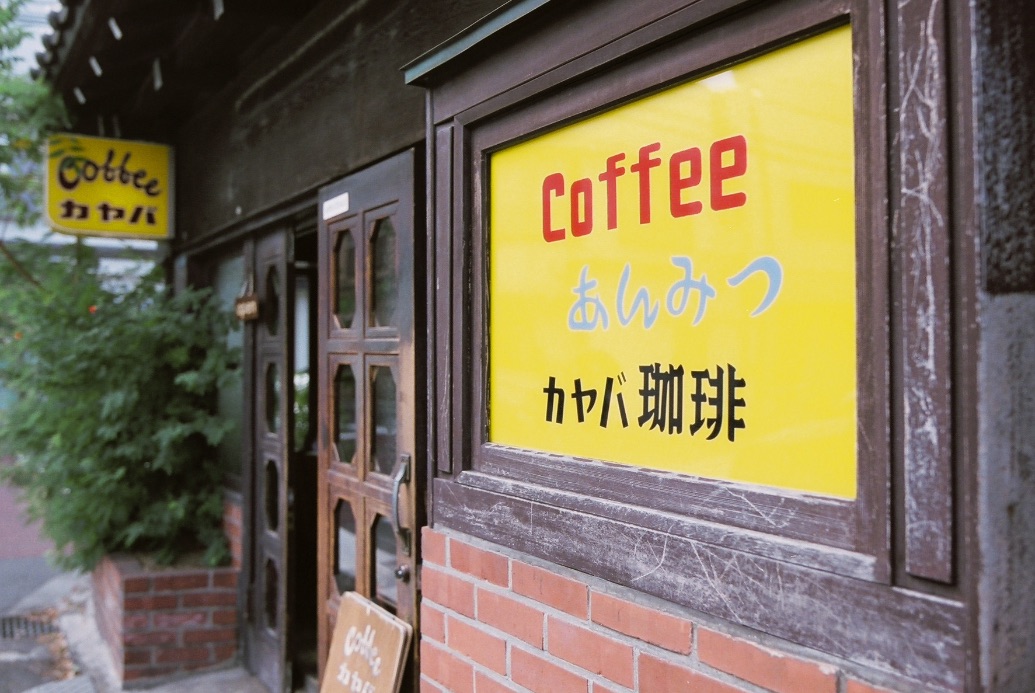
This is a place I’ve visited in my private time out of work and I’m always excited to go. Kayaba Coffee was established in 1938, and actually closed in 2006. But due to public demand, the cafe reopened just two years later in 2008. It’s a popular coffee shop loved by people of all generations.Time to head on in.
The first floor houses the counter and table seats, while the seating on the second floor is traditional zashiki style on tatami flooring. Although it’s a cafe, you I feel so relaxed in there that it’s like I’m visiting my grandma’s house. The sun shines through the big windows, making you all warm and want to take a nap.
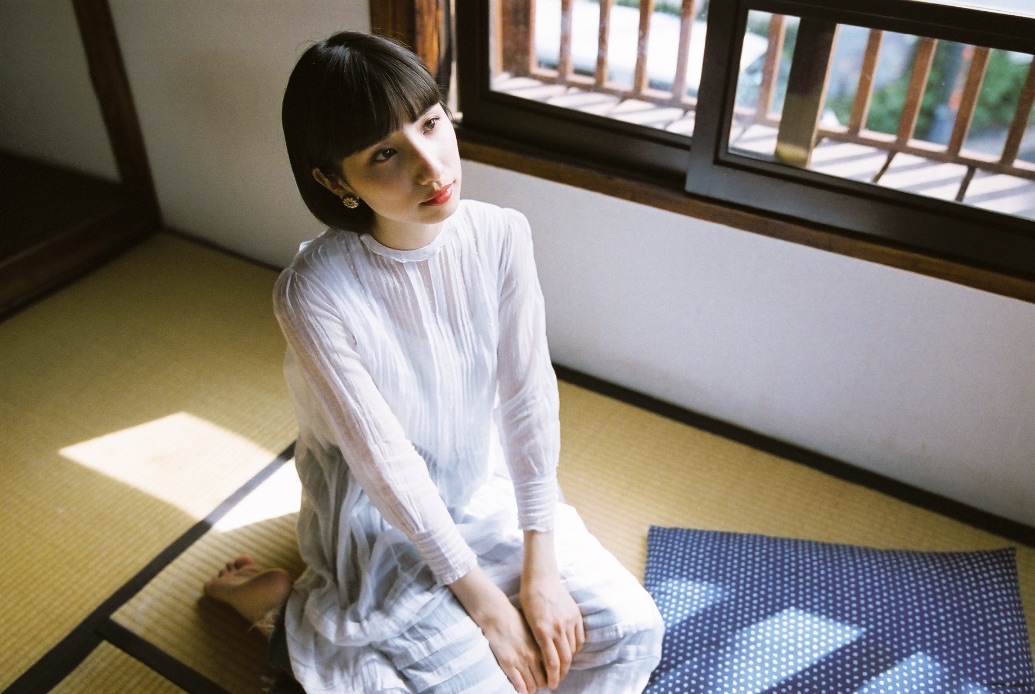
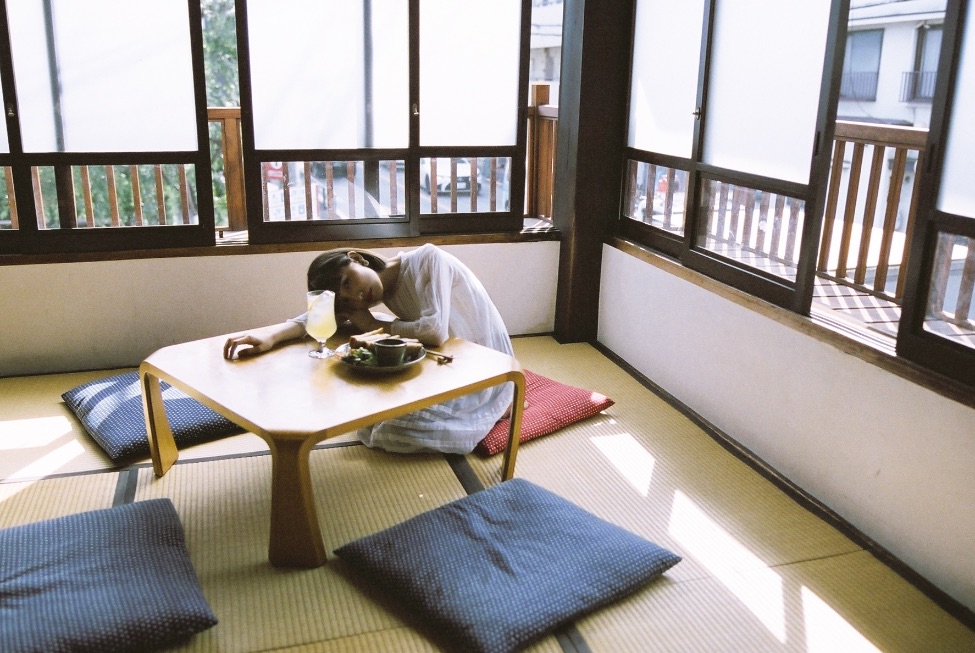
I ordered their super popular egg sandwich! The menu was changed in May this year, and a new and improved version of their egg sandwich was put on there. It’s made using sourdough bread from VANER, a local bakery in Uenosakuragi not far from the cafe.
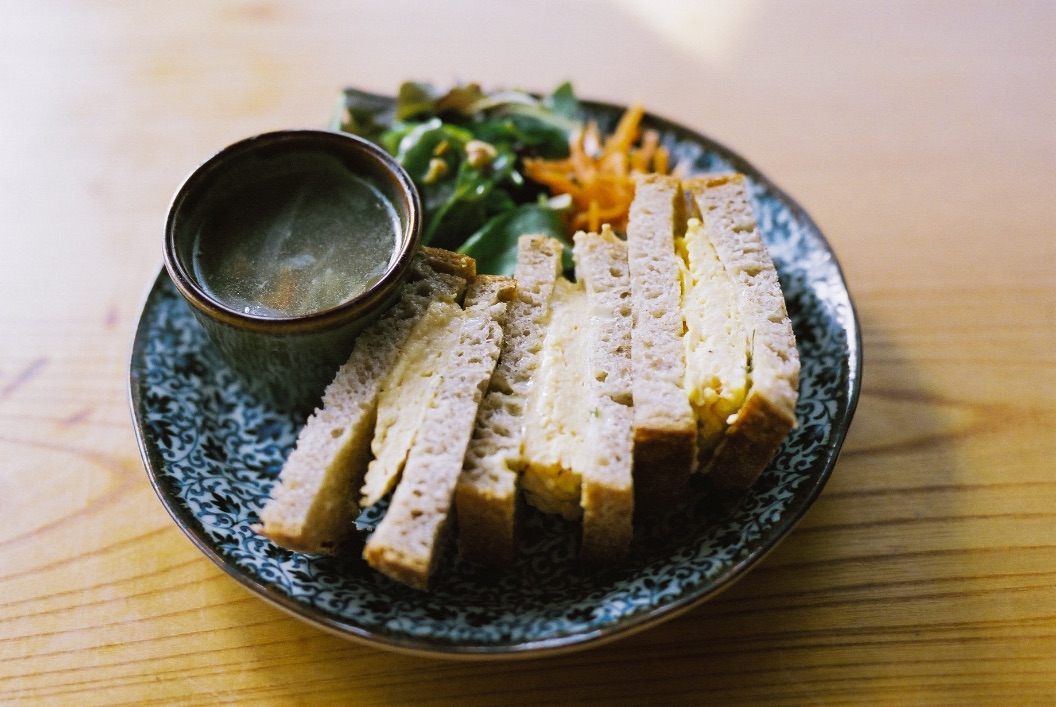
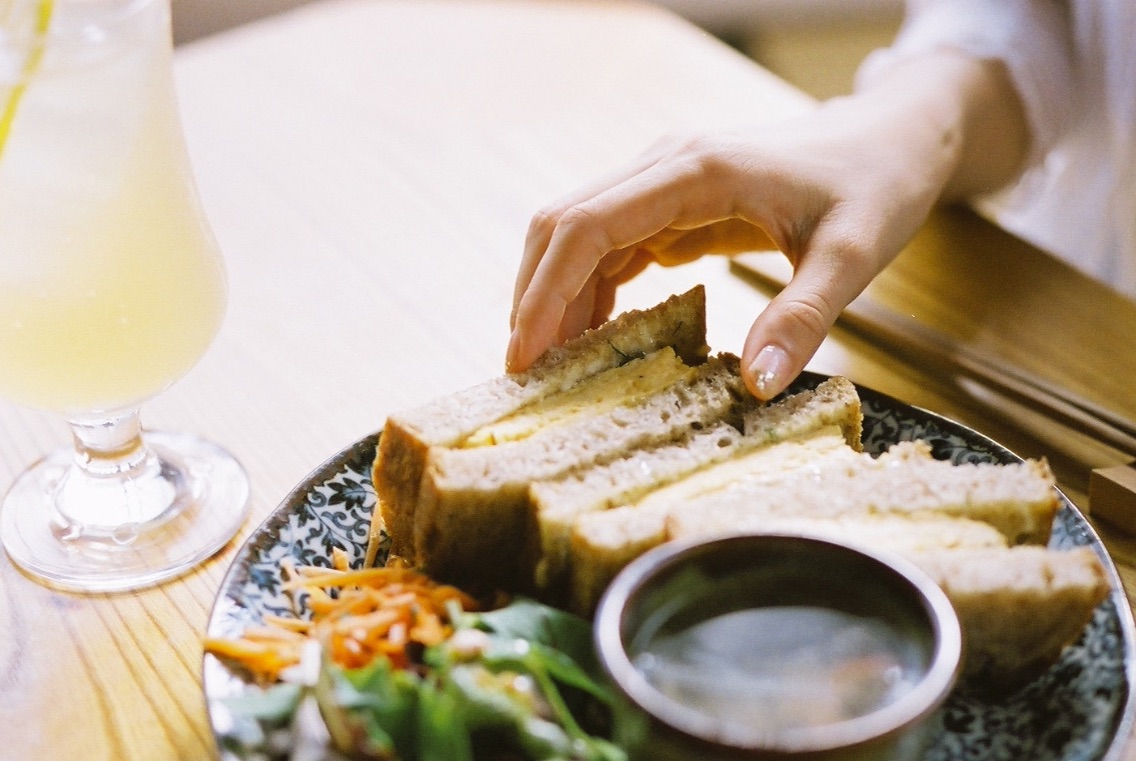
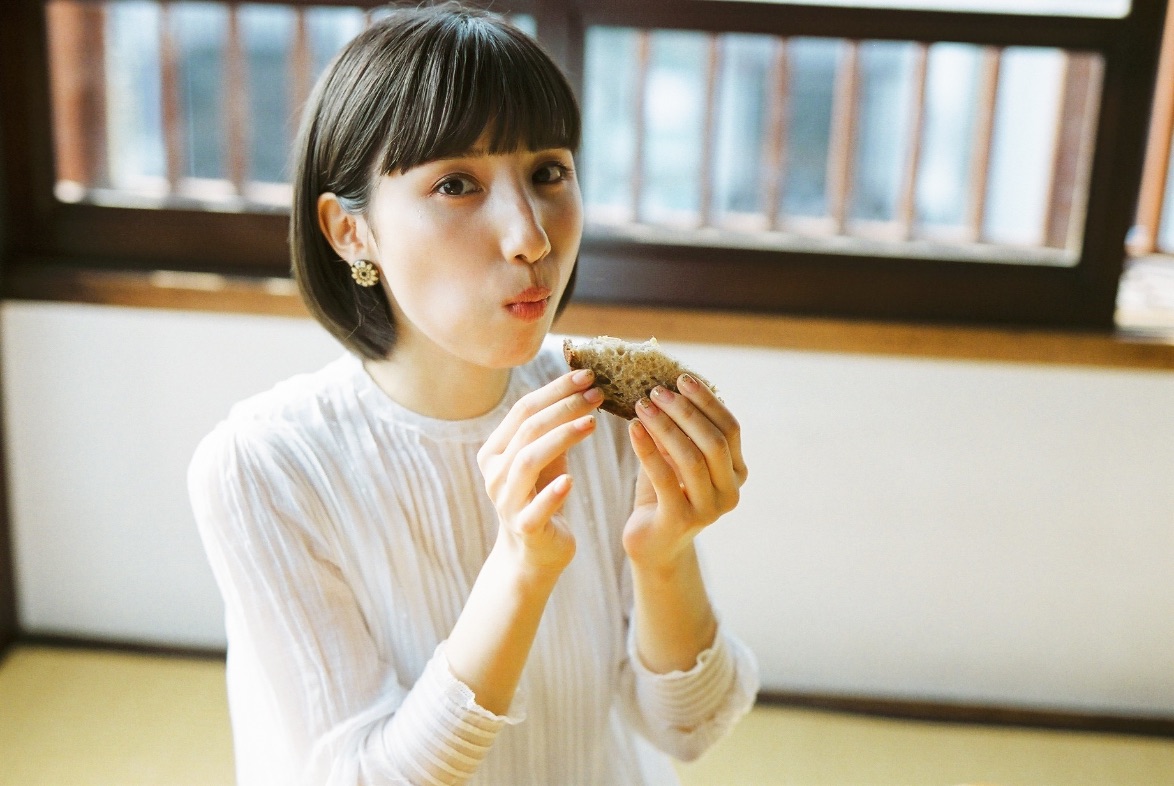
Breakfast Menu – Egg Sandwich | ¥1,000
The chewy, sour bread is the perfect combination with the fluffy eggs.
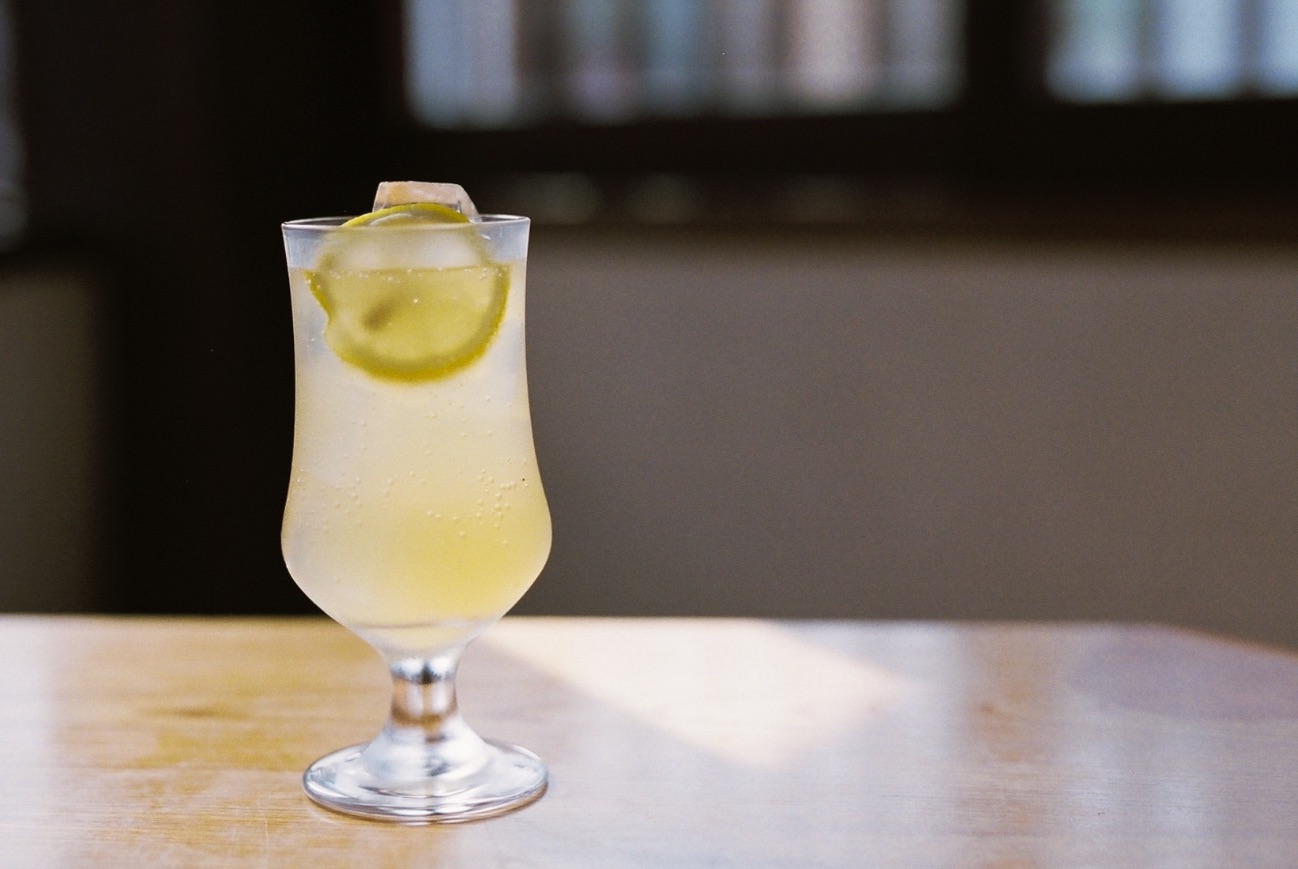
Lemon Squash | ¥600
The lemon squash has a cinnamon aftertaste. Everything on the menu is made with love and perfection; before I realised it, I was hooked on going there.
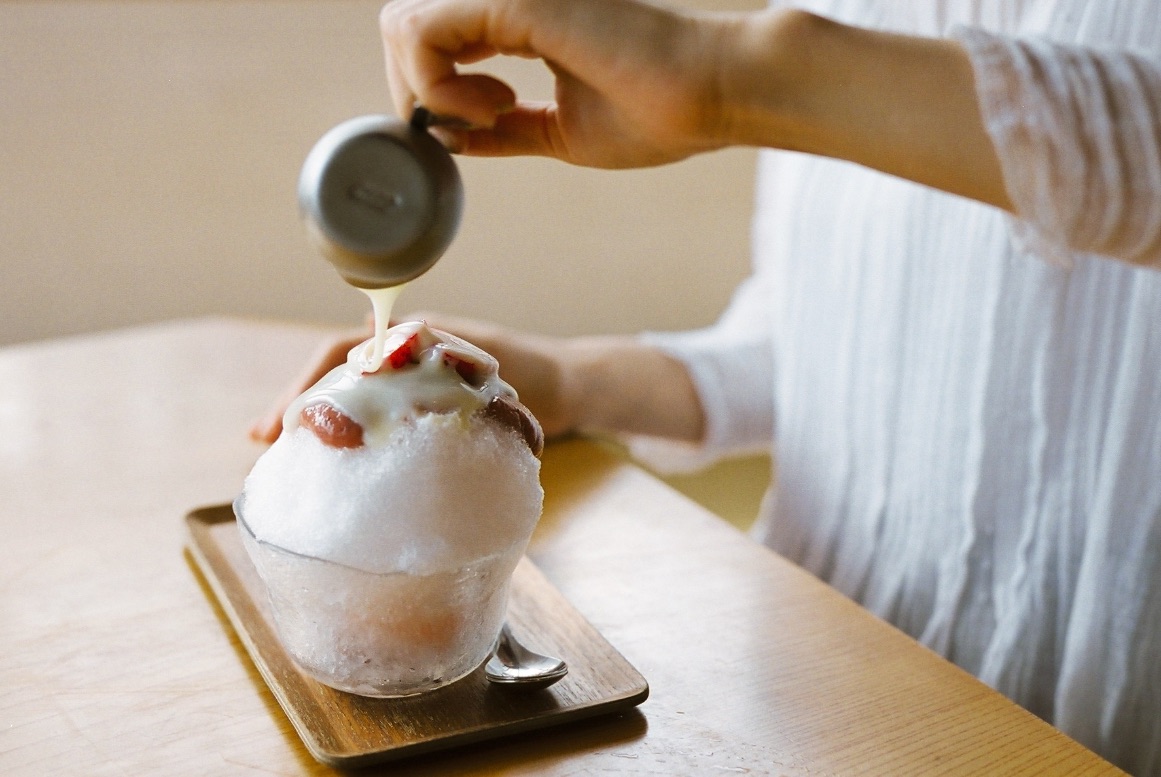
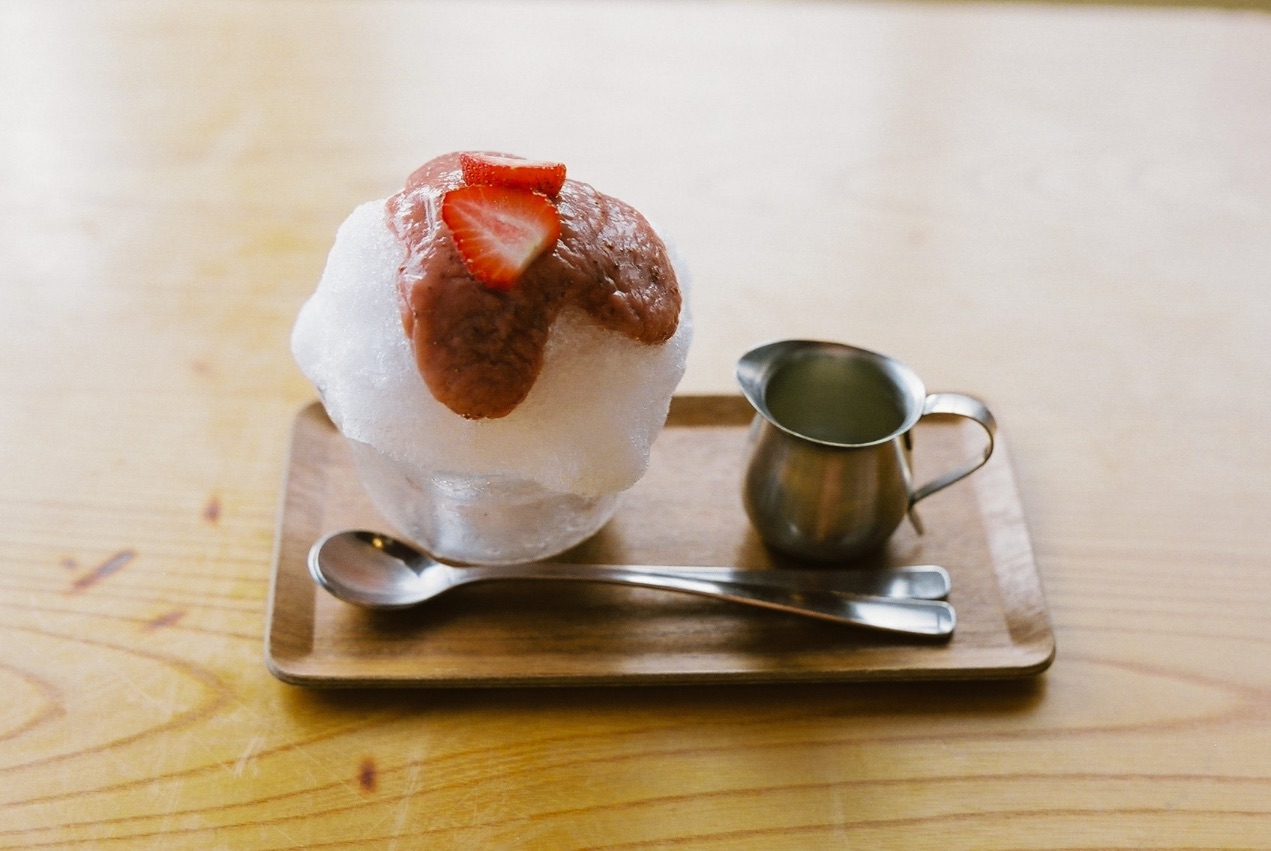
Strawberry Shaved Ice | ¥800
This was my first shaved ice of the year! I went with the classic strawberry flavour. The syrup is super juicy and nearly collapsed the fluffy shaved ice the moment I put it on. It has a syrupy texture and the strawberry juice has a sweet and sour kick that’s just simply delightful♡
And you can make it even sweeter by pouring over your desired amount of condensed milk. It was really tasty.
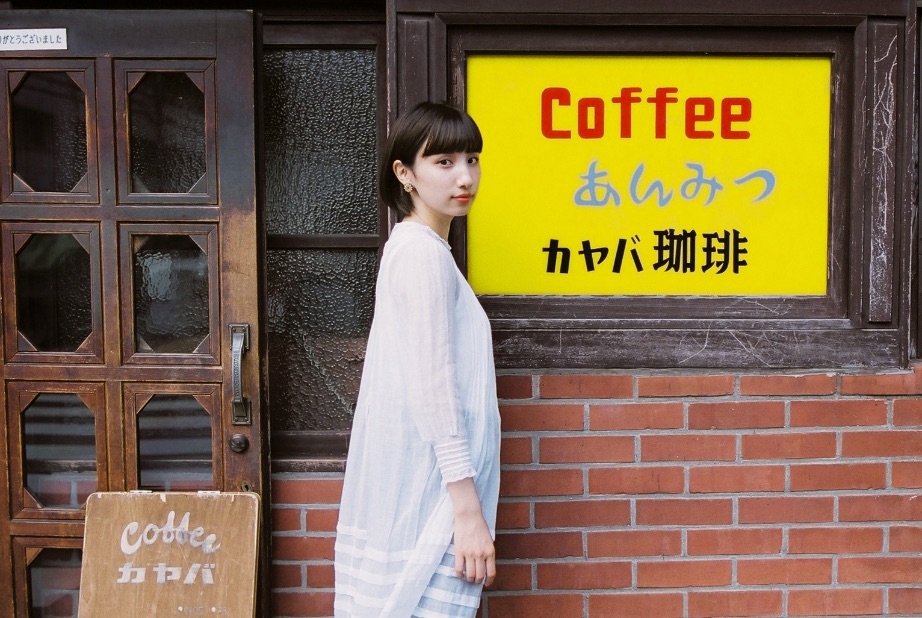
Kayaba Coffee is the same as it was back in the day, and continues to be loved dearly. I think even people who visit it for the first time will feel a sense of nostalgia. If you have a place you can go to relax on bad days or when you’re feeling down, it’s sure to give you the strength to work hard again. This cafe is a wonderful place that’s close to people’s hearts.
I want to visit there again already.
Writer/Model: Ema Tanioku
Photographer: Haruka Yamamoto
Design: Yuko Takayama (ASOBISYSTEM)Translator: Joshua Kitosi-Isanga
Information
Kabaya Coffee
Address: 6-1-29 Yanaka, Taito-ku, TokyoOpening Hours: [Tue-Fri] 8:00-18:00 (Last Orders 17:30) / [Weekends] 8:00-19:00 (Last Orders 18:30)
Closed: Mondays
-
Autumn Flower Topped Cream Sodas Served at Floral Cafe and Bar HANABAR in Koenji
31.August.2020 | FOOD
HANABAR, a floral themed cafe and bar in Koenji, Tokyo, released two breathtaking new cream sodas on Friday which capture the sentimental feeling of summer transitioning to autumn.
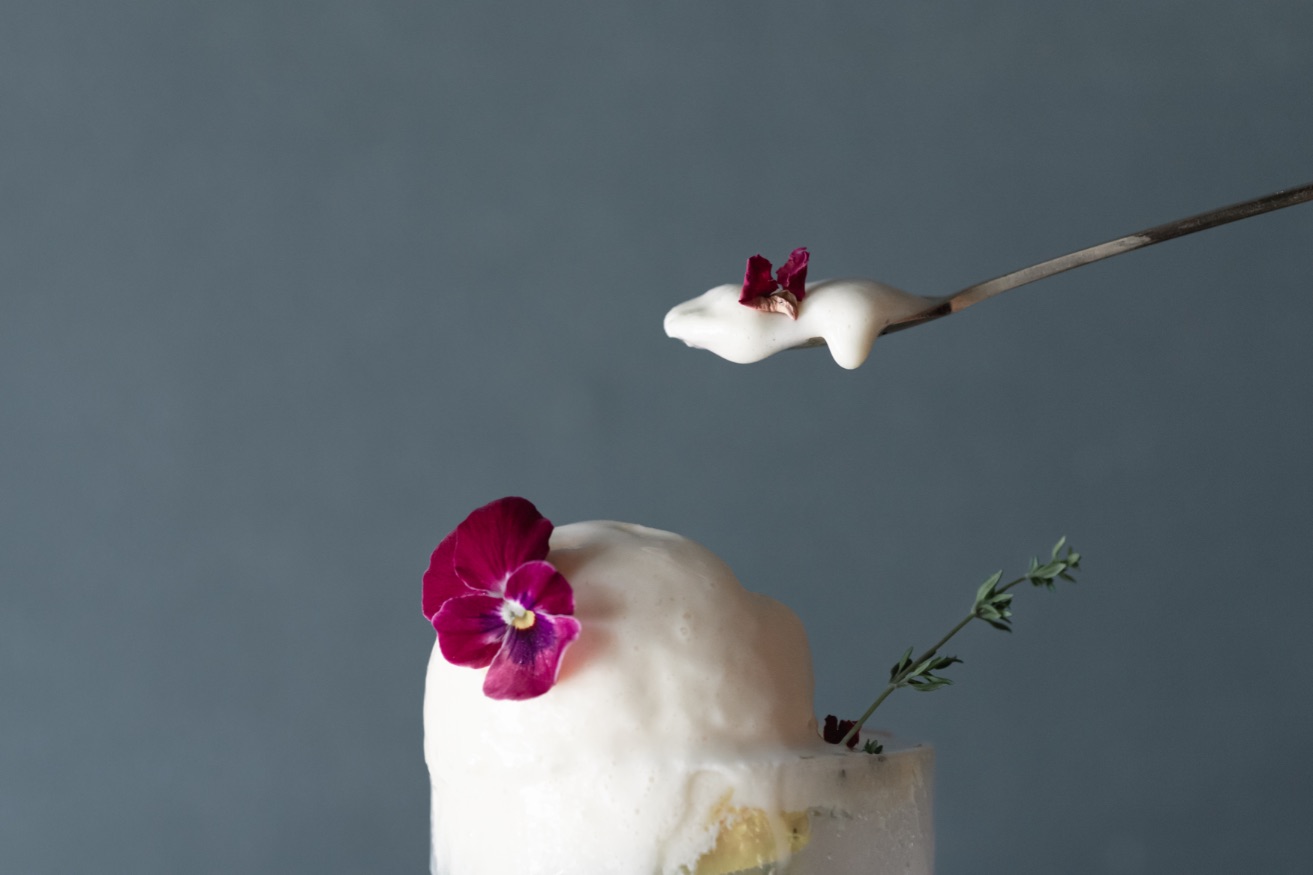
HANABAR opened in September 2017 as Japan’s “first dried flower cafe.” A sister store, gmgm, opened last year selling gorgeously gourmet doughnuts topped with dried flowers. Both stores as produced by Nana Yui, a dried flower artist.
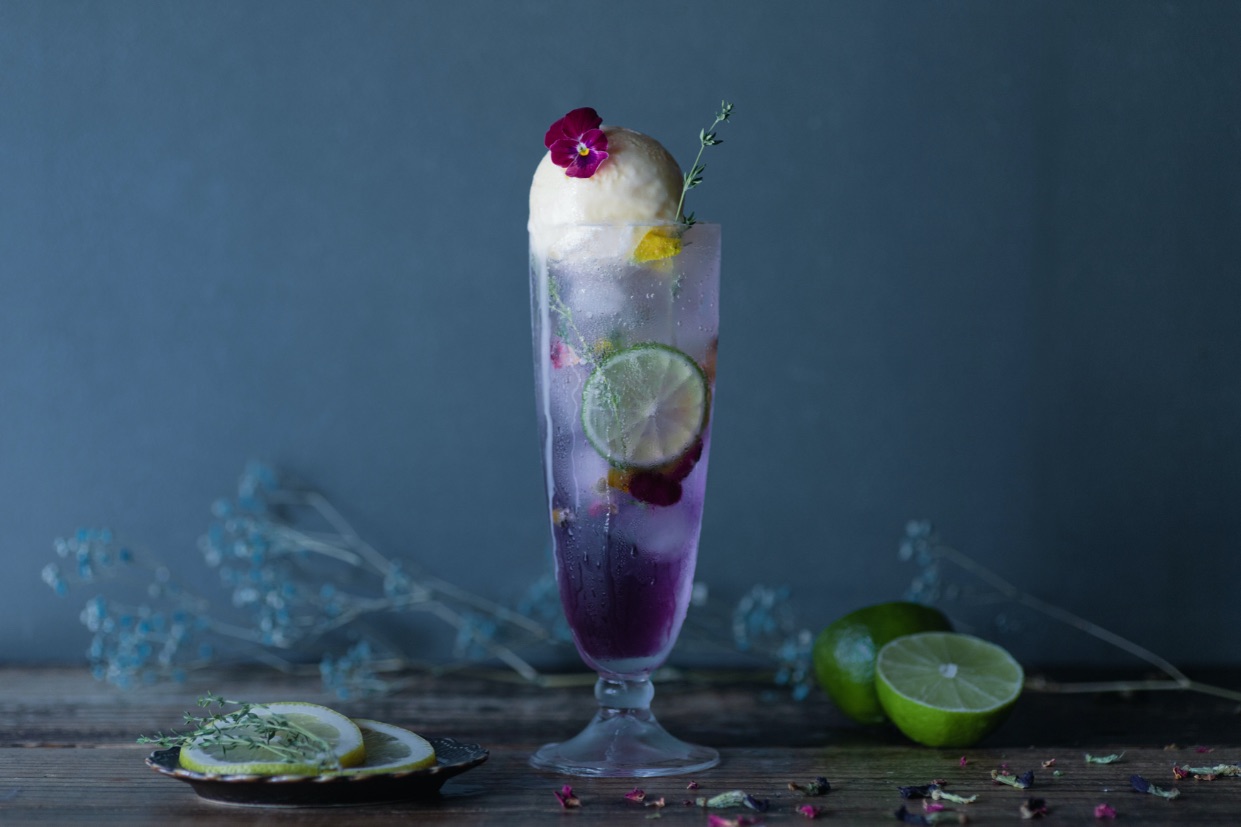
Lavendel | ¥1,100
Coloured an eye-catching purple, this autumn-time cream soda is made with lavender, butterfly pea, and lime.
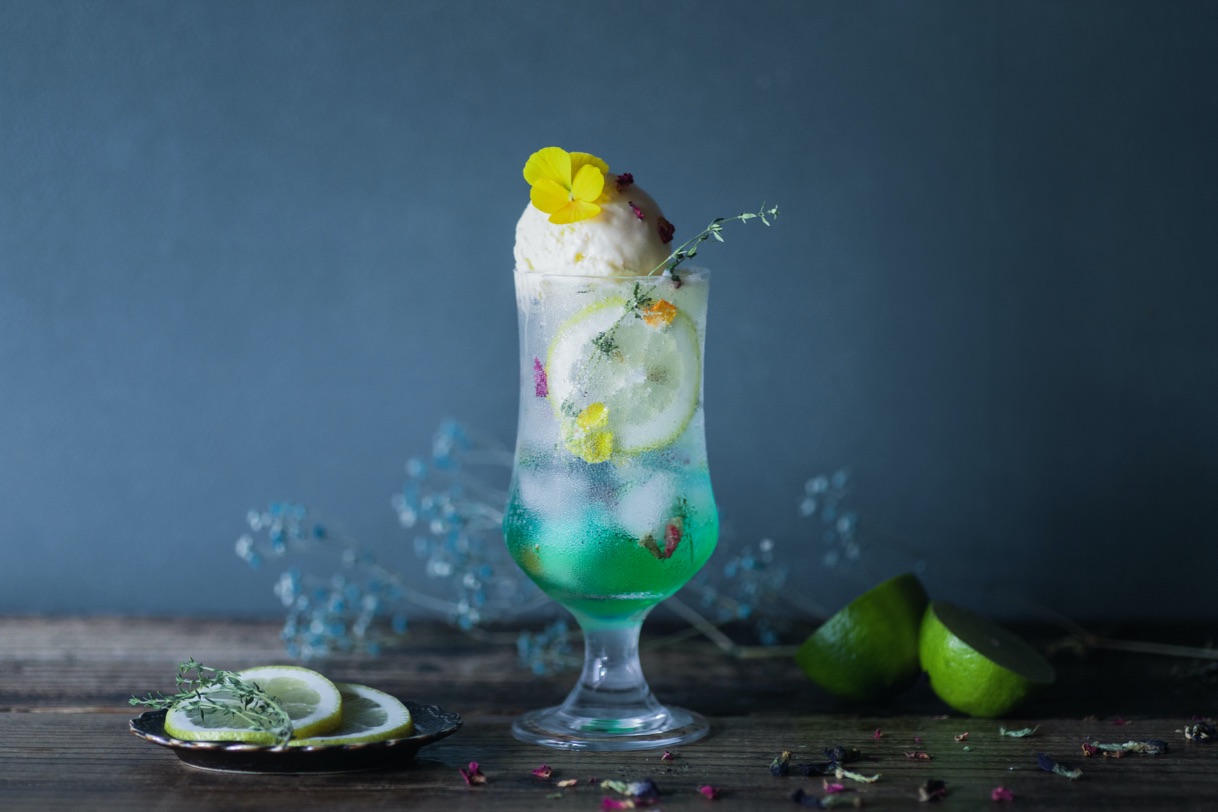
Aimatsurika | ¥1,100
A refreshing mix of jasmine, grapefruit, and lemon topped with sweet ice cream that has a citrus fruit aftertaste.
The flowers draped inside the ice are all elderflower which has high nutritional value.
Beat the Japanese heat this summer in Tokyo with one of these tantalising cream sodas.
Information
Floral Autumn Colour Cream Sodas
Serving: August 28, 2020 – Late October 2020HANABAR
Address: 3-30-6 Nishi-Ikebukuro, Toshima-ku, Tokyo
Opening Hours: 12:00-22:00
No Fixed HolidaysOfficial Website: https://www.hanabar.tokyo/
-
Tokyo Stroll: The Café That You Want to Visit to See Someone #13 – ‘Sepia’ in Shibamata
In this edition of The Café That You Want to Visit to See Someone, I visited Sepia in Shibamata, a Showa-retro style cafe which I’ve always wanted to visit.
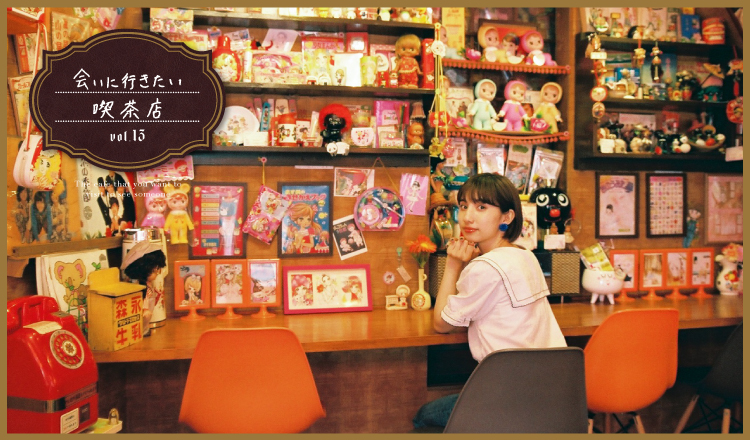
The cafe is just a 2-minute stroll from Shibamata Station which appears in the Japanese film Otoko wa Tsurai yo. The walk along the road that leads to Sepia, which is nearby the Buddhist temple Shibamata Taishakuten, is a pleasant one. Tokyo is a city consistently perceived as one that is cutting-edge in every aspect, but what I felt from each and every building surrounding Shibamata Station was a kind of warmth that you feel when something has history to it.
It’s been seven years since I came to Tokyo. Visiting Shibamata made me me realised how many places there are which I still don’t know about. It invigorated me. As my mind wandered with these pondering thoughts, I finally spotted the sign outside the cafe, and it sure is a cute one!
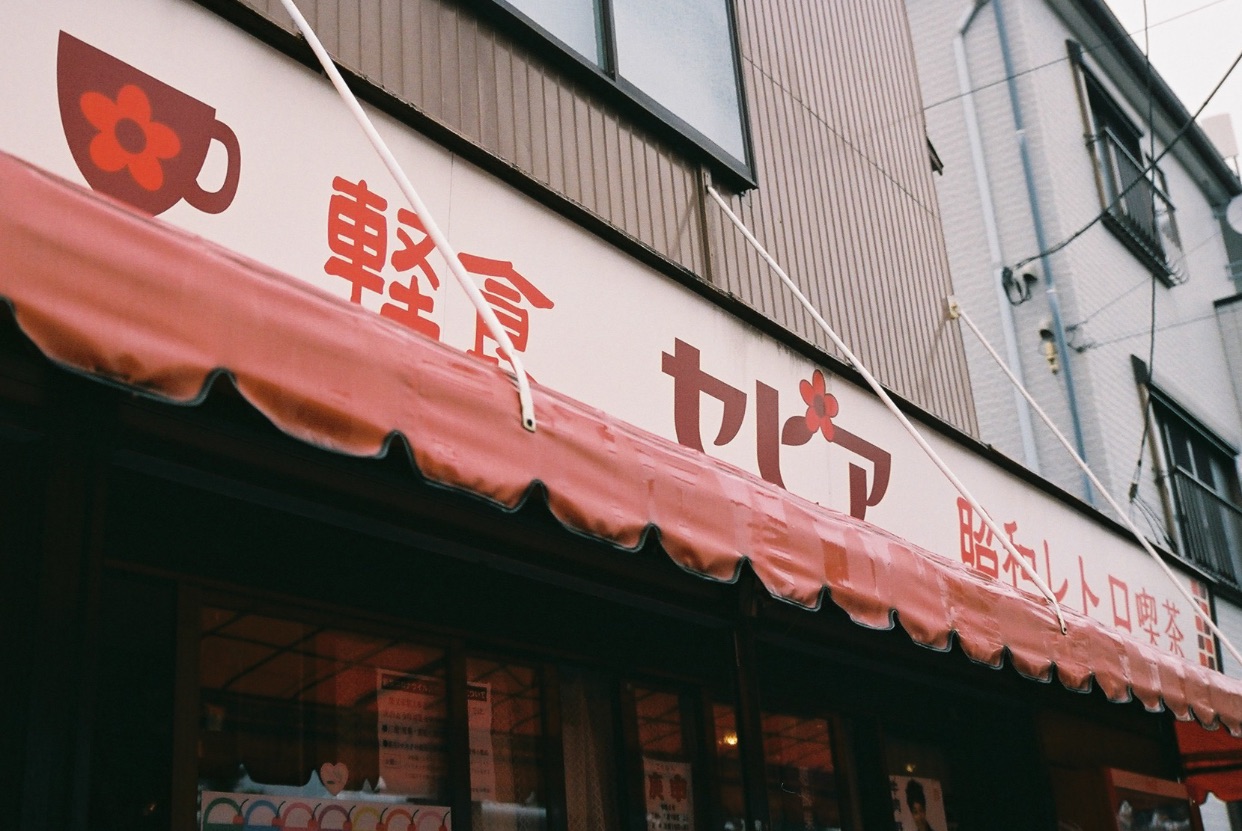
The moment I stepped inside, I stood, my mouth agape, and looked at my surroundings. It’s the first time I’ve entered such a bright, shining cafe. It was littered with characters I’ve never seen before, manga, magazines, and more.
When you hear the word kira kira (“glitter,” “sparkle”), the first thing that comes to mind for a lot of people is probably Harajuku and the Harajuku style, but Sepia’s version of kira kira is a nostalgic one betwixt 1965 and 1975 during the Showa Period. The cafe is incredibly delicate in every spot and corner, like I’m looking inside some grand treasure chest.
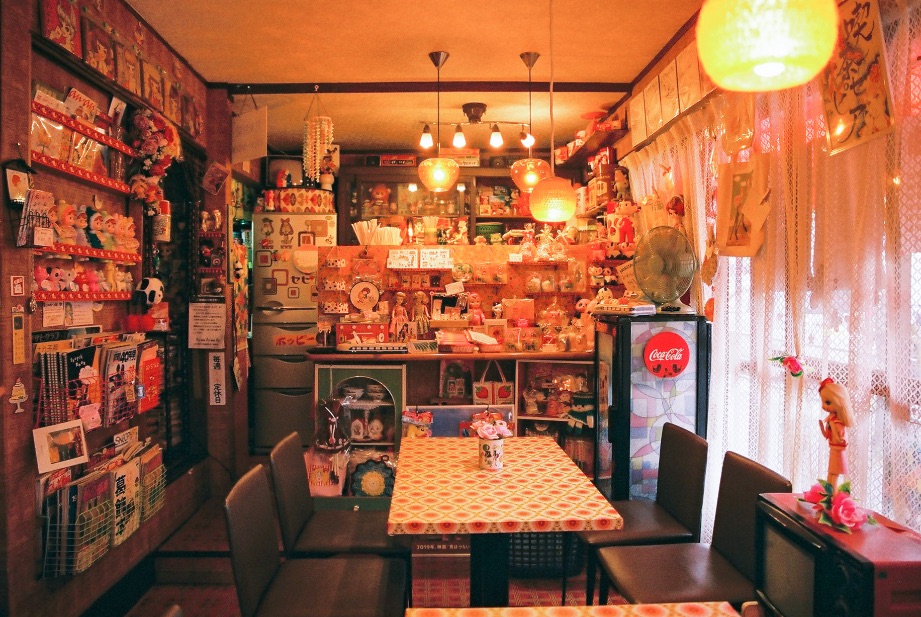
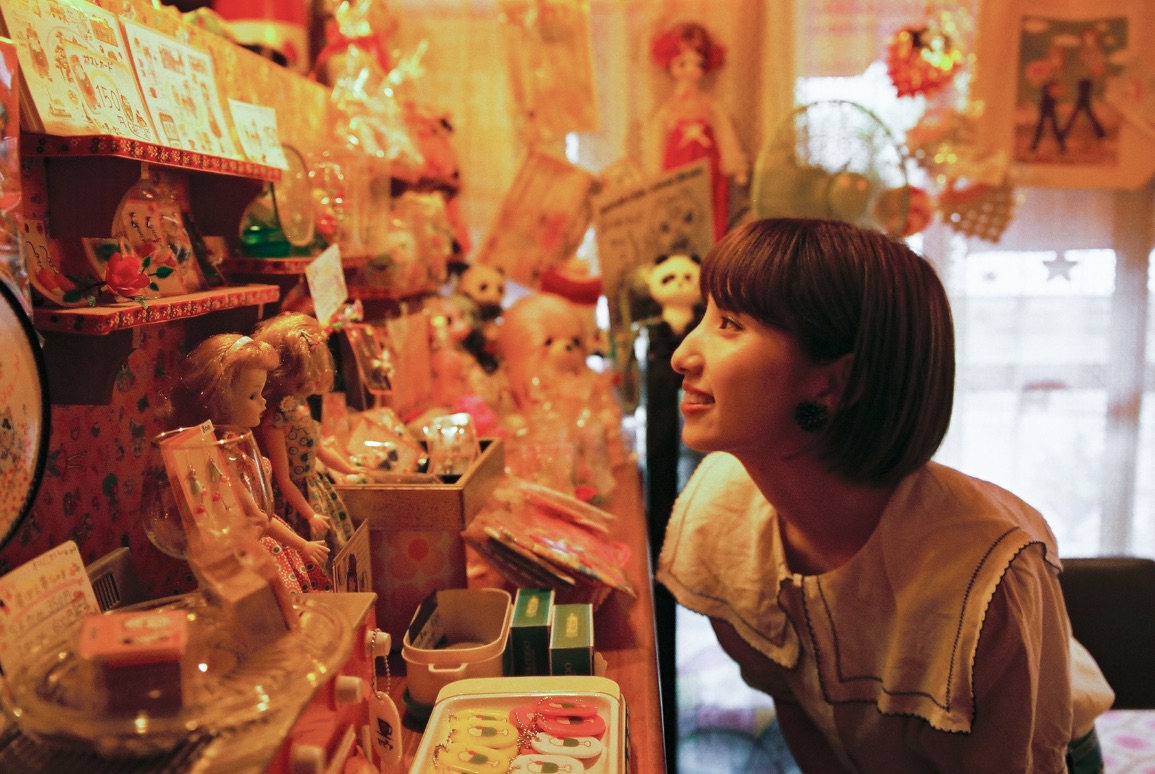
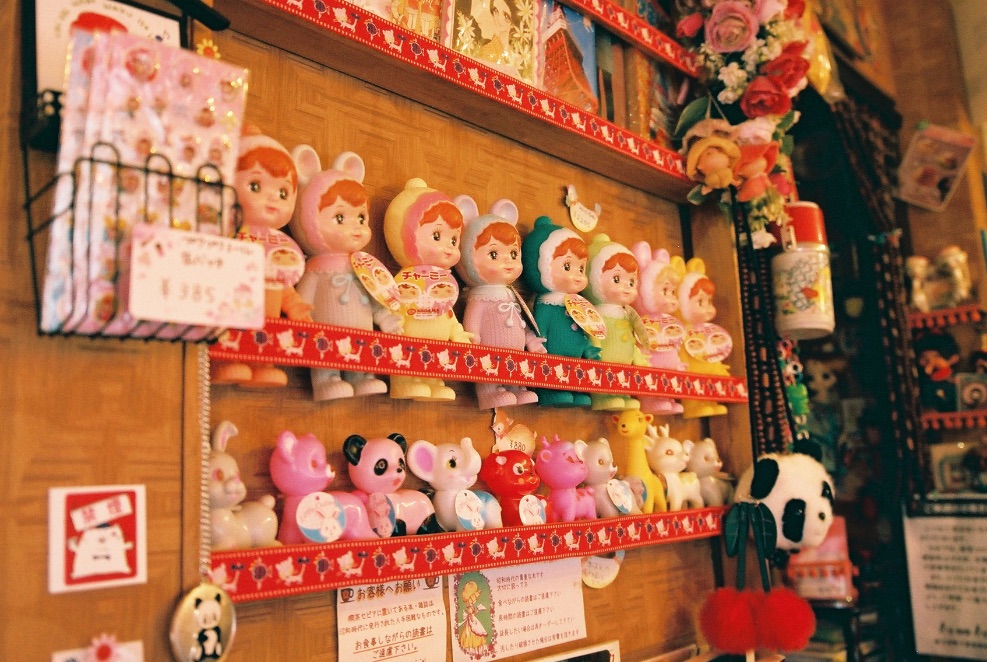
The owner of Sepia is Kiyoko Hasezawa. The cafe gets its name from the manga Milky Sepia Monogatari by Ako Mutsu. Ms. Hasezawa said that she wanted to bring to life the world of the manga she loved. The cafe is full of her dreams and is enjoyed by everyone, both children and adults alike.
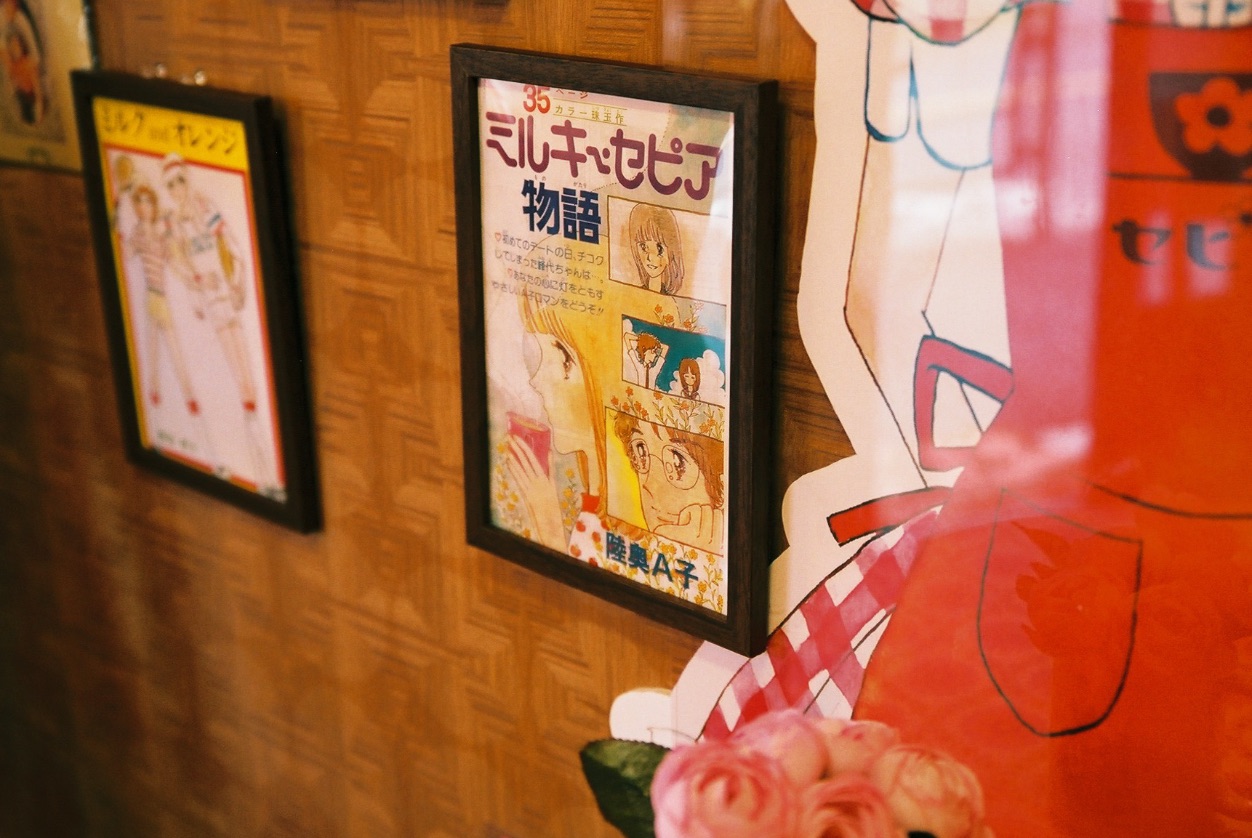
The cafe menu is even inspired by the food that appears in the Milky Sepia Monogatari manga. The hard pudding I had, which combined caramel sauce and cream, was an absolute delight.
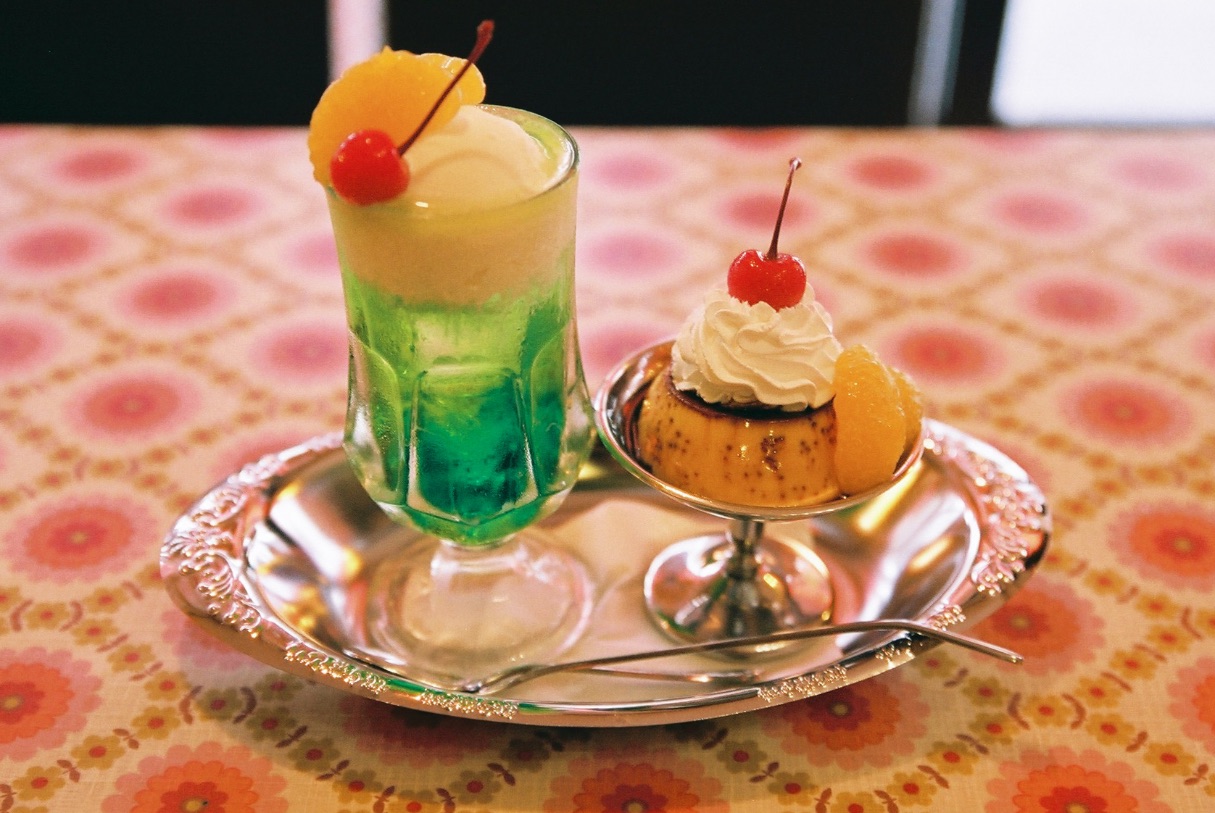
Homemade Showa Pudding & Cream Soda Set: ¥1,200
If we’re talking cafes, then you can’t go wrong with cream soda. The cream soda served at Sepia comes in seven different flavours and colours: melon, Blue Hawaii, strawberry, lemon, peach, grape, and orange. I was spoilt for choice on which to go for, but in the end I went with the pink-coloured strawberry. It had a sweet flavour and was really delicious.
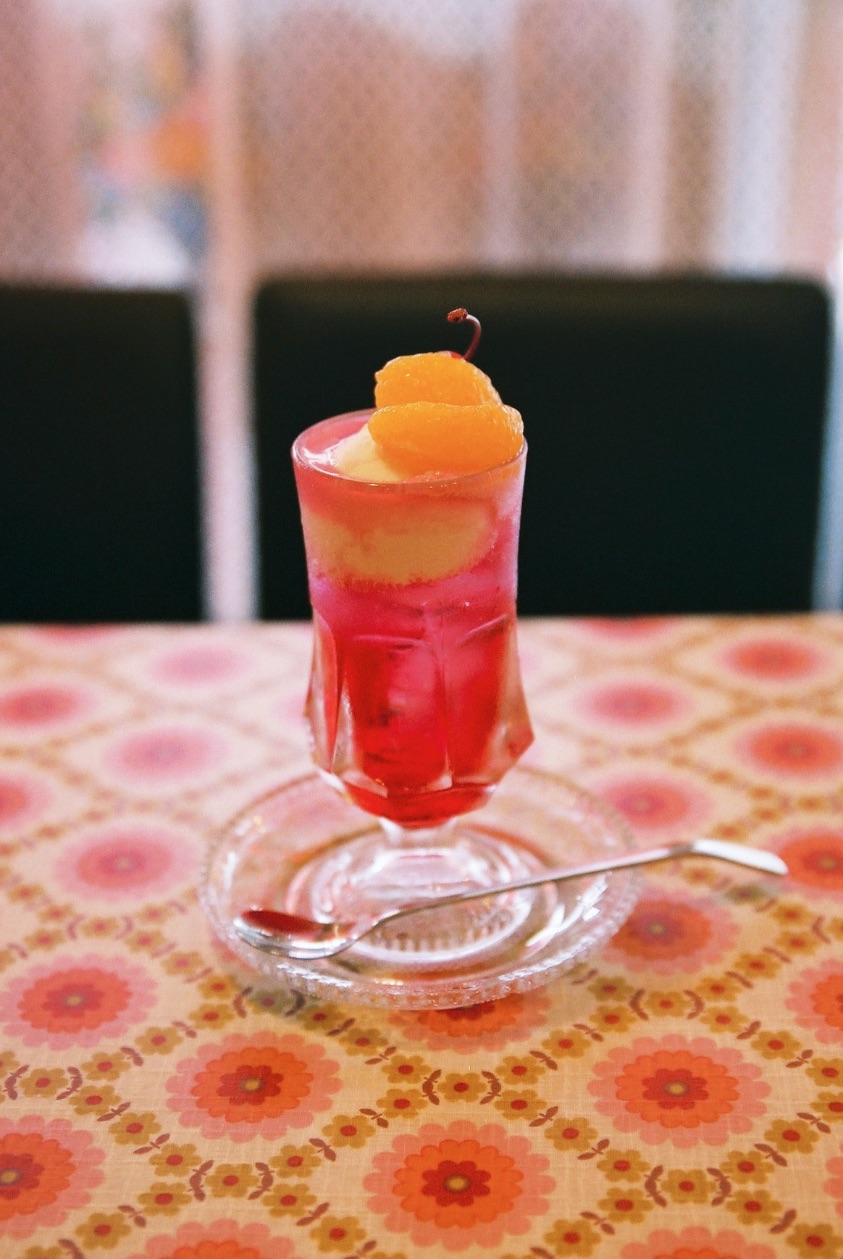
Strawberry Cream Soda: ¥750
I devoured the hotcakes too. The pastry was so fluffy and tasty – I could have eaten a hundred of them. The second one I ate with honey.
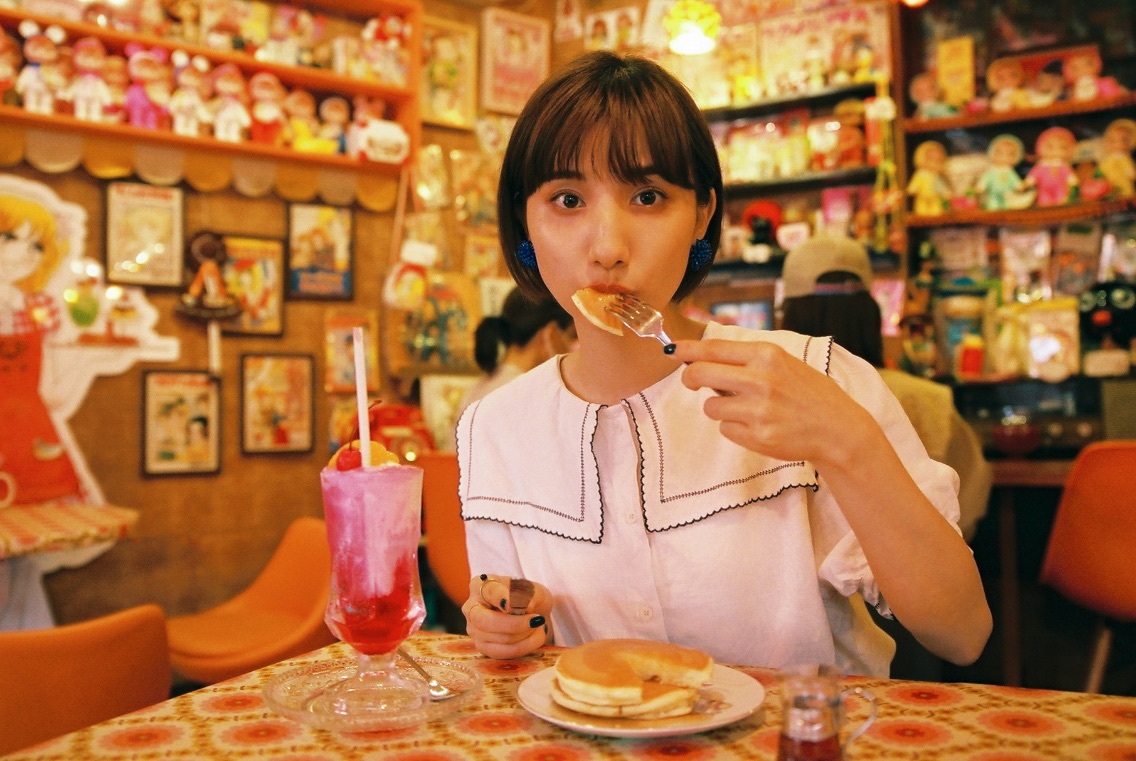

Hotcakes: ¥600
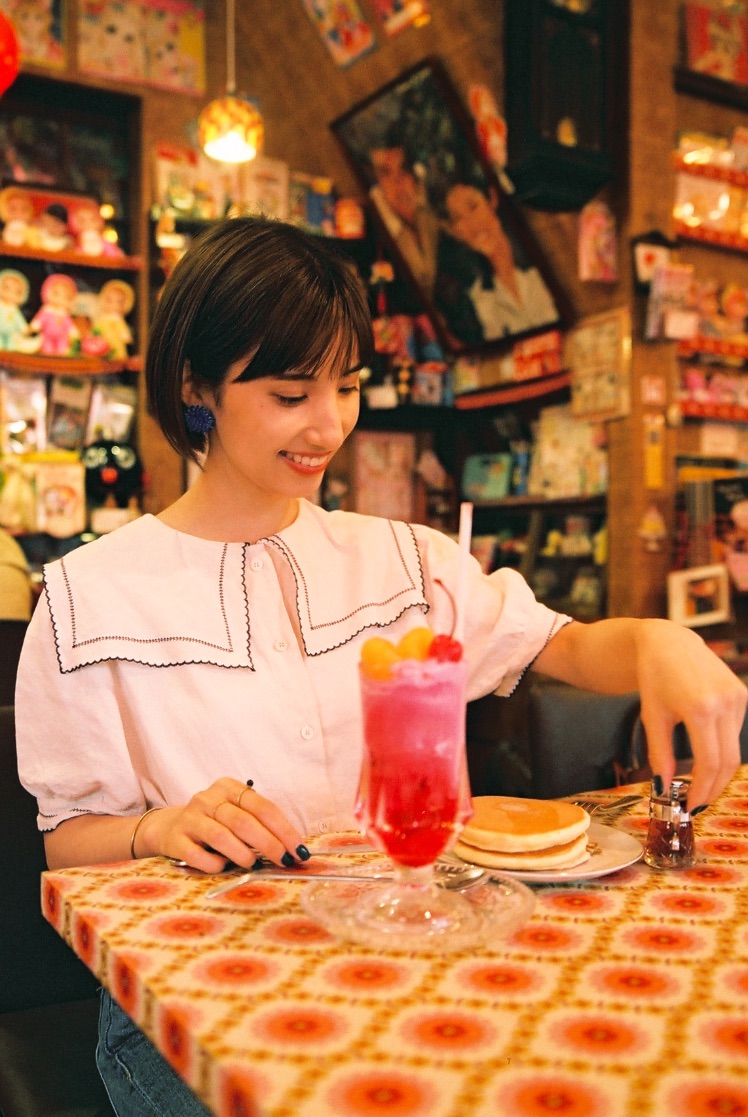
At the back of the cafe, they also have the “Candy Candy Museum.” There’s a personal collection of items from Candy H Milky, a female fashion enthusiastic who used to be a customer at Sepia. There’s a photo spot for snapping a photo in the cafe too.
It’s a great time getting to go and look at the displays after eating. I recommend going to see the collection yourself with your own eyes. Entry to the museum is ¥300.
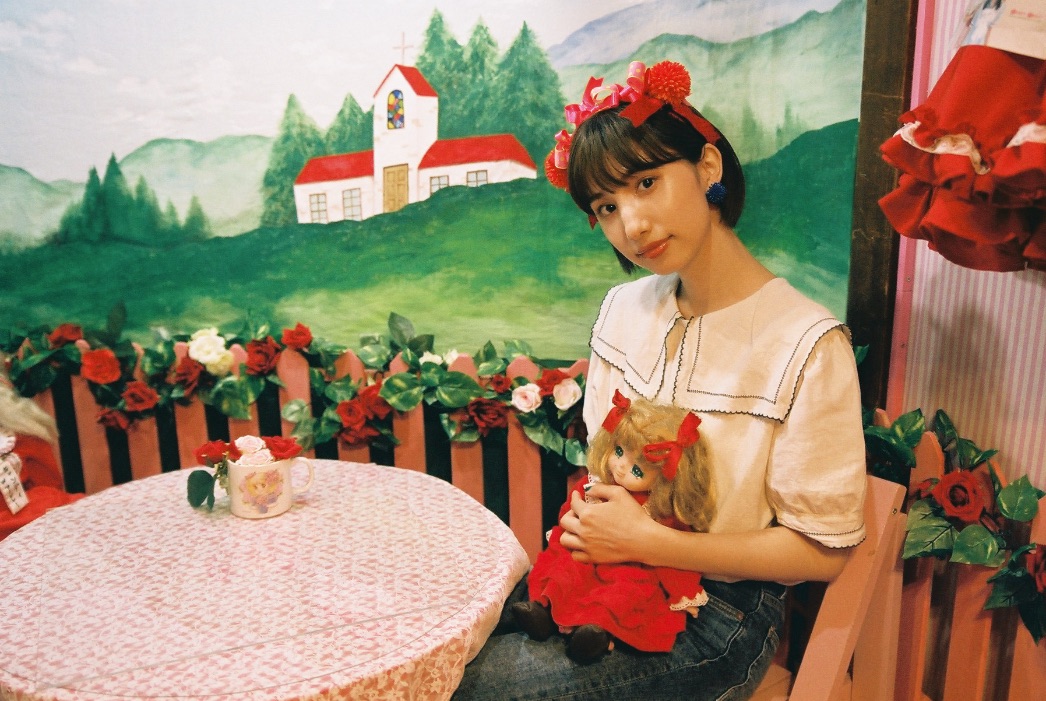
There’s a tearoom up on the second floor which has a nostalgic vibe to it. I felt warm and relaxed, like I’d been transported to my grandma’s house.
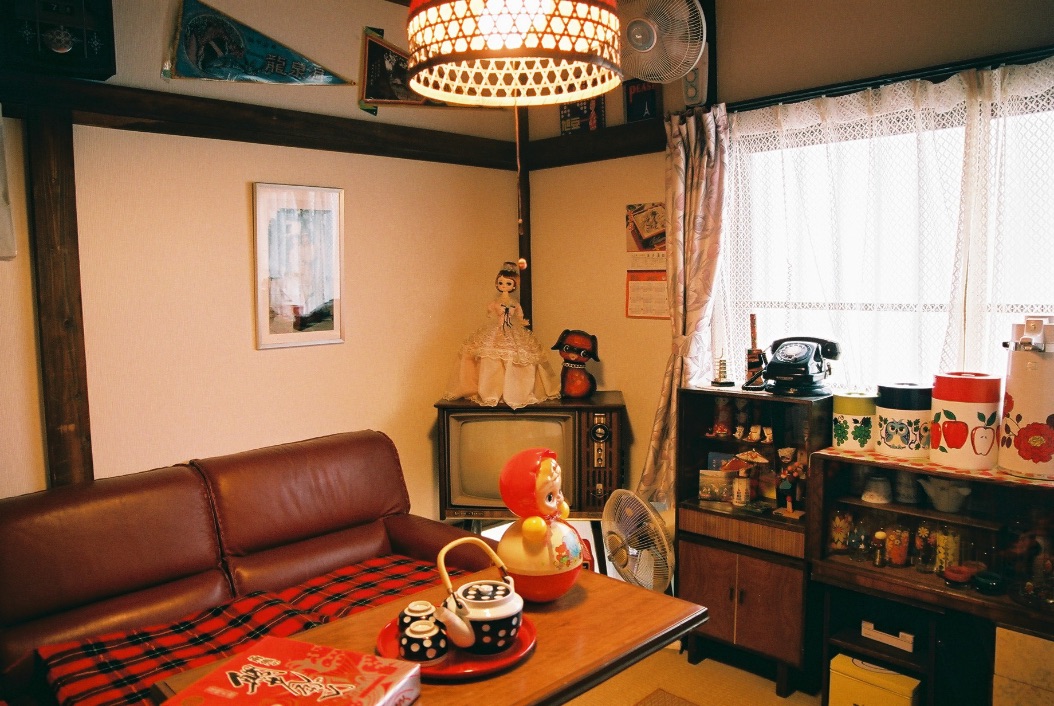
Humans can’t travel back in time, but if we look after mementos properly, we can go back there in our minds and memories. Sepia, a place that continues to be cherished and loved, is everybody’s treasure trove.
My oh my, I really want to go back there again.
Writer/Model:Ema Tanioku
Photographer:Haruka Yamamoto
Design:Yuko Takayama(ASOBISYSTEM)Information
Sepia
Address: 7-4-11 Shibamata, Katsushika-ku, Tokyo
Days Open: Fridays, Saturdays, Mondays
Business Hours: 12:00-17:00 (Last Orders 16:30)
For the latest information, visit Sepia’s official Twitter page @sepia_mama -
Gourmet Flower Doughnuts Released at gmgm in Tokyo’s Koenji District
18.July.2020 | FOOD
gmgm released a new collection of “Cold Flower Doughnuts” on July 17 for the summer season which you need to scoop up to eat.
gmgm is a cosy cafe and doughnut shop in Koenji, Tokyo which serves beautiful doughnuts topped with edible flowers.
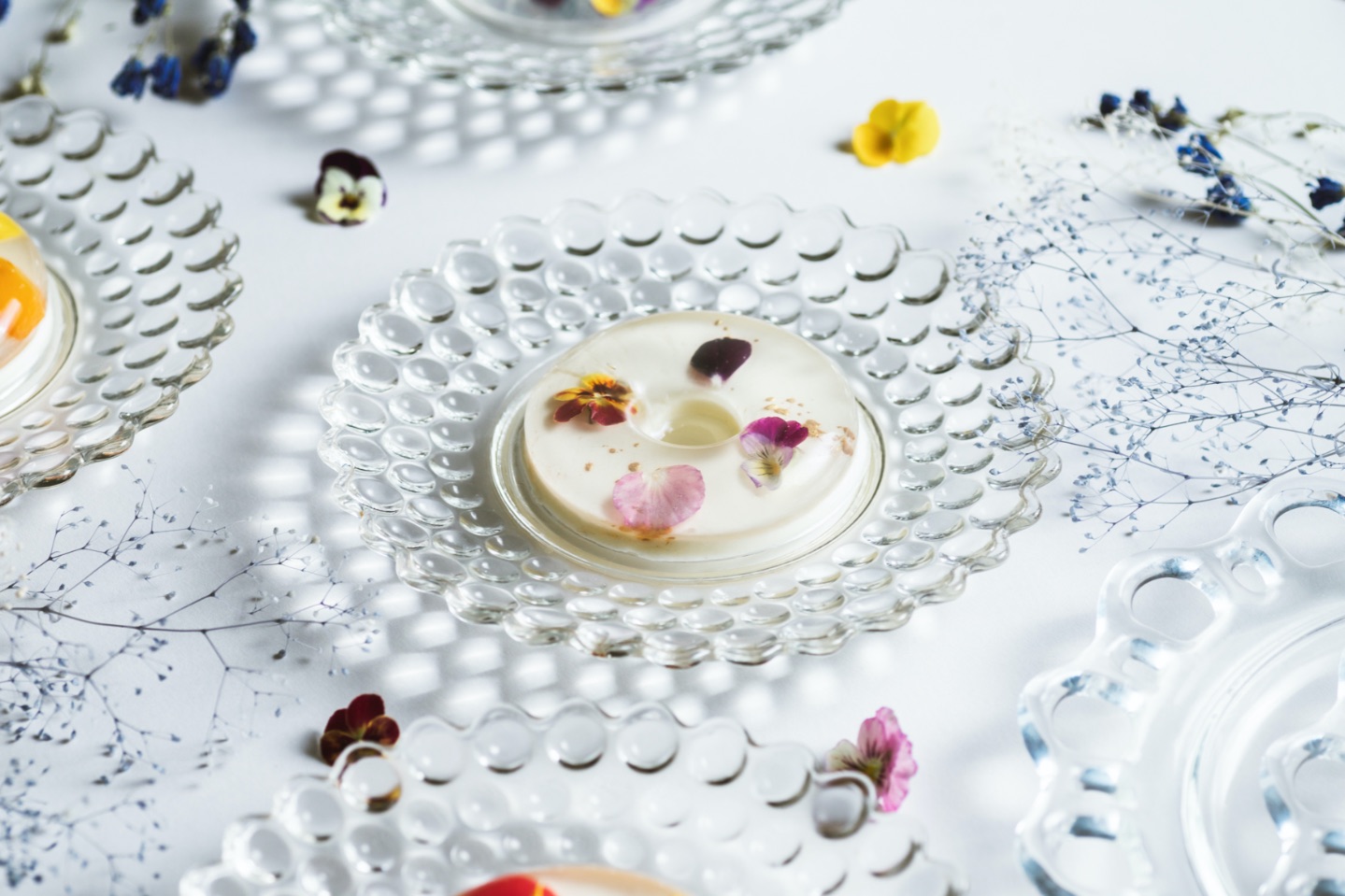
Scoopable “Cold Flower Doughnuts” – ¥450 (Before Tax)
Combined with refreshing summertime lemon jelly is a creamy panna cotta filled with lumps of fresh fruit.
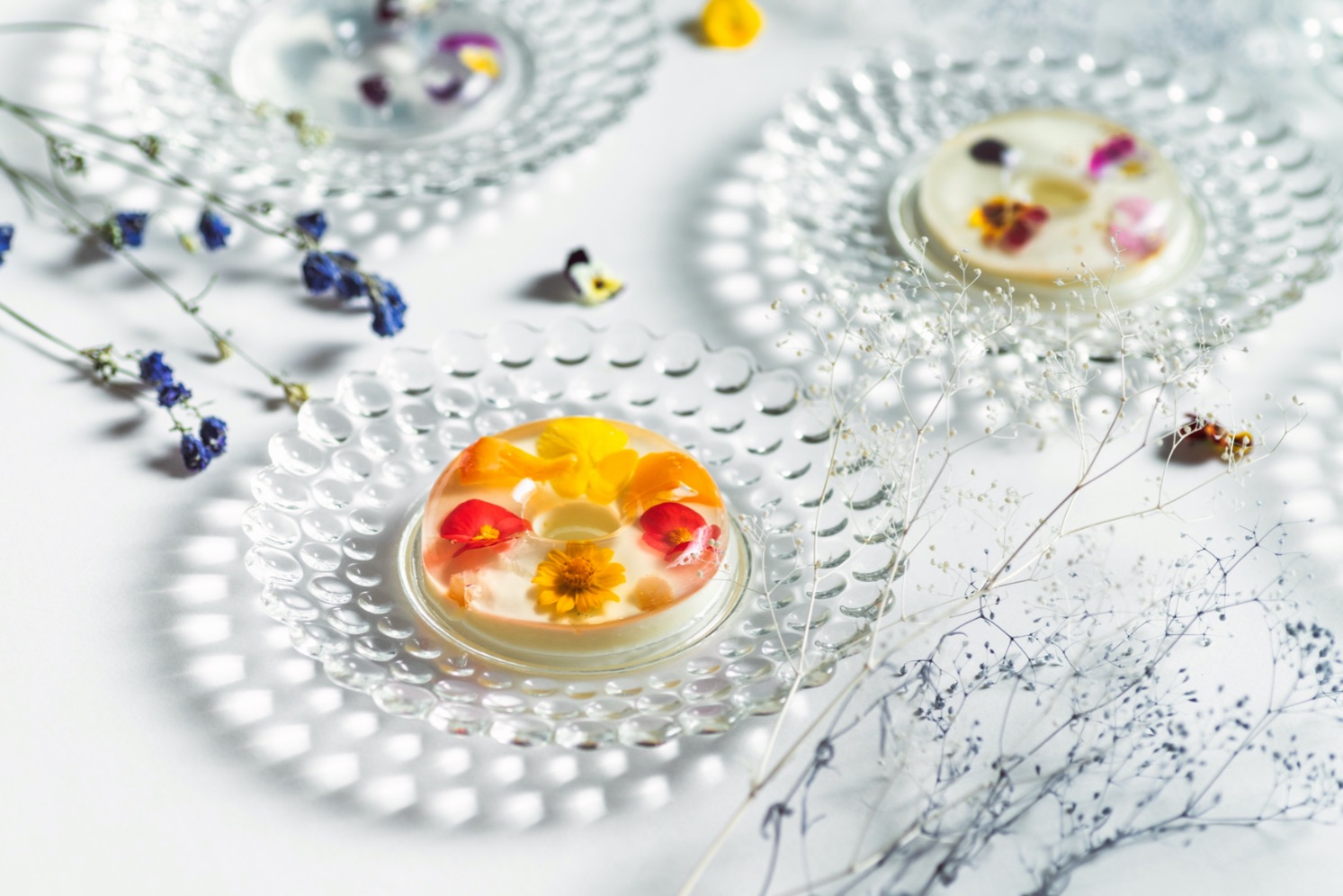
On the surface of the jelly is colourful and elegant seasonal edible flowers.
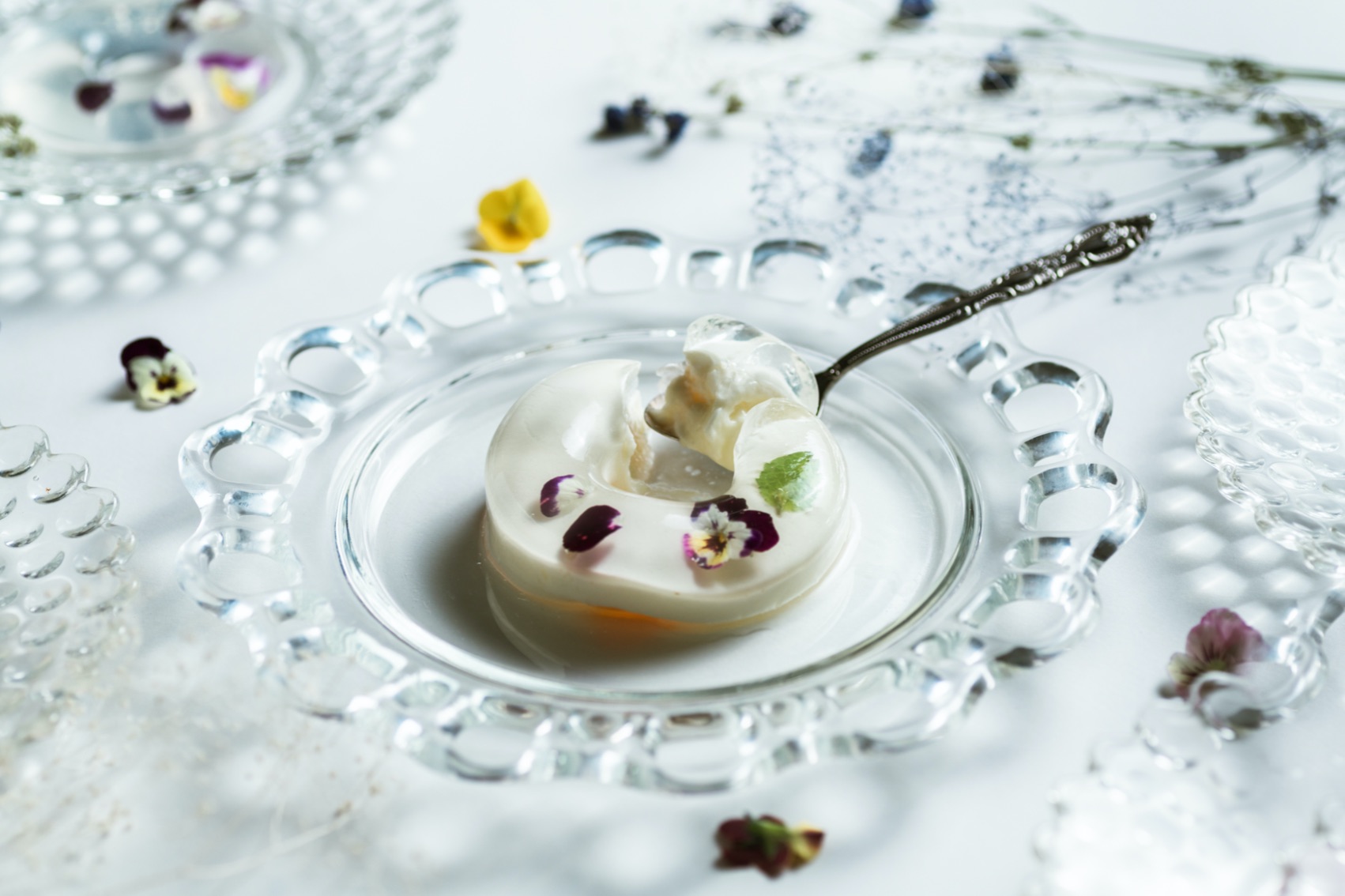
The bottom layer is the super soft panna cotta which enjoys the richness of the fresh cream and the juiciness of the fruits.
Information
gmgm
Address: 3-60-10 Koenjiminami, Suginami-ku, TokyoOpen: Fridays, Weekends, National Festival Days
Business Hours: 12:00〜19:00
*Flower doughnuts available online 7 days a weekOfficial Website: https://www.gmgm.info/shop
-
Tokyo Stroll: The Café That You Want to Visit to See Someone #12 – ‘J-COOK’ in Gaiemmae
In this edition of The Café That You Want to Visit to See Someone, I visited J-COOK in Gaiemmae, a place I visited one time while off work which ended up in me wanting to absolutely feature it in the series!
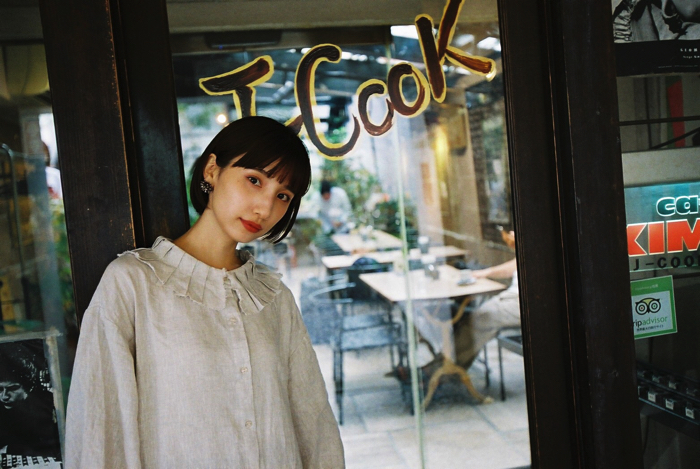
It’s just a 5-minute stroll from Gaiemmae Station.
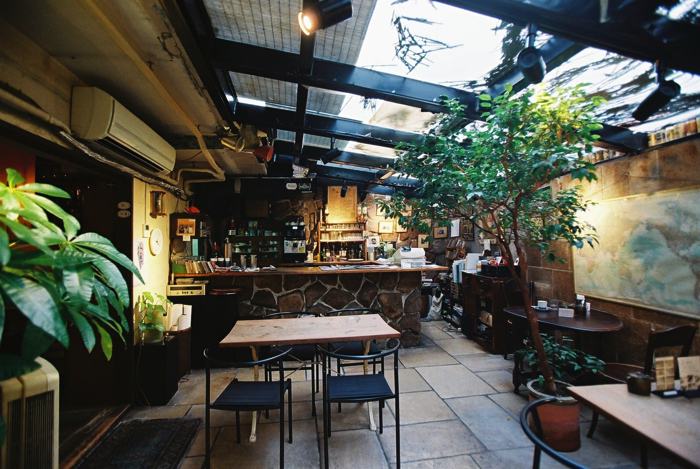
The cafe enjoys lots of sunlight, which is brightened further by all the plants scattered through the shop. The cafes I have visited to date are often a little darker with only a little light seeping through the windows to create a certain atmosphere, and they are wonderful, but this was the first I have ever visited with so might light and so many plants. The air felt clear, adding to the level of comfort in the cafe, perhaps because there are so many plants adorning the interior.
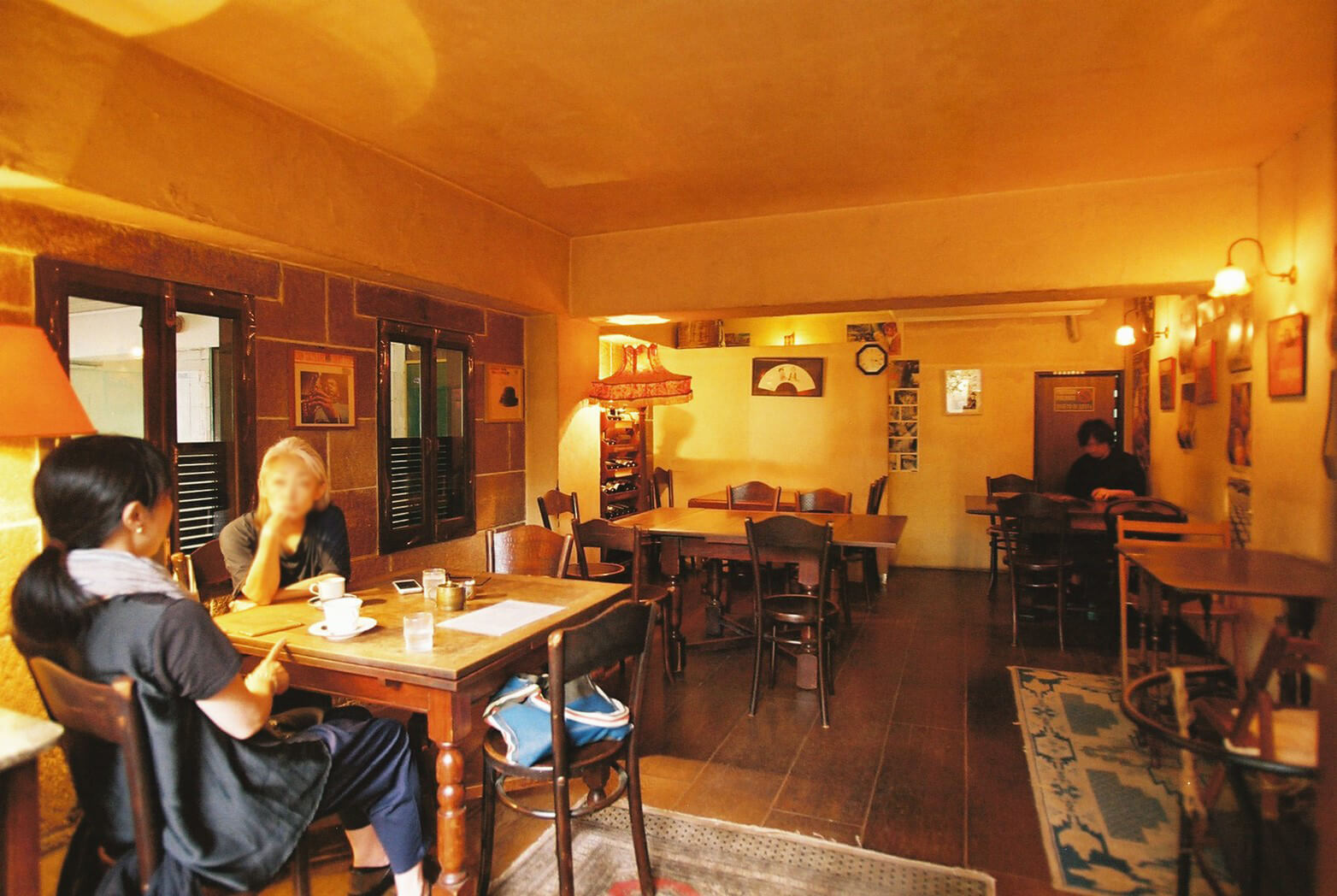
The cafe also has a space with a slightly more darker light and atmosphere on the left side. I haven’t sat in that area yet, so I think I’ll try it out on my next visit.
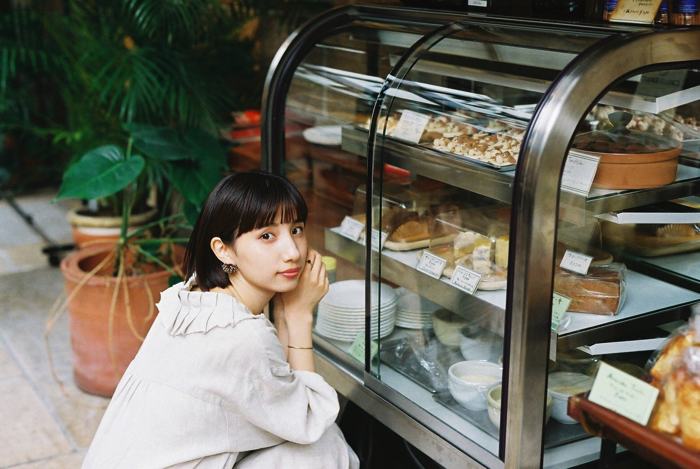
When I come to J-COOK, my eyes always wander over to the marzipan creations (¥450).
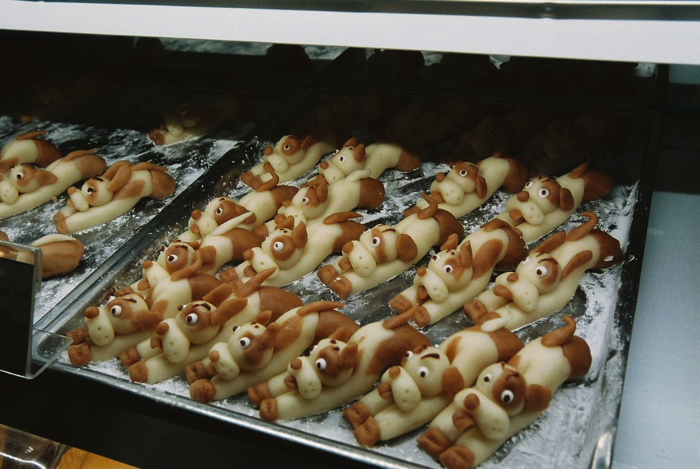
These ones here were actually all individually handmade by the owner’s husband from the early morning.
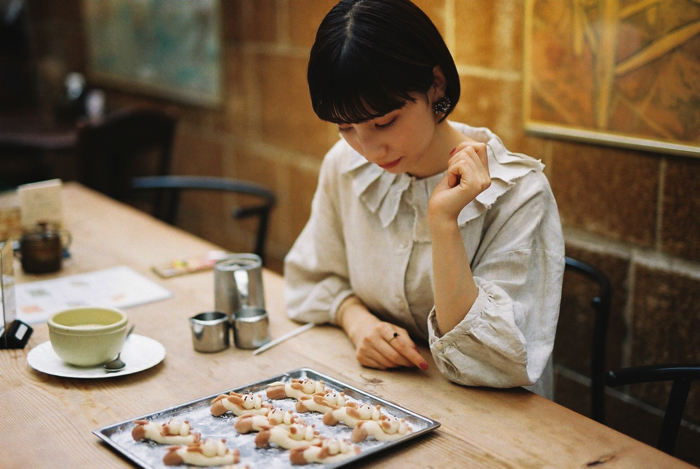
If you look really closely, you’ll notice all the dog designs are different. When ordering, get to pick out which one you want, so try finding your perfect pup!
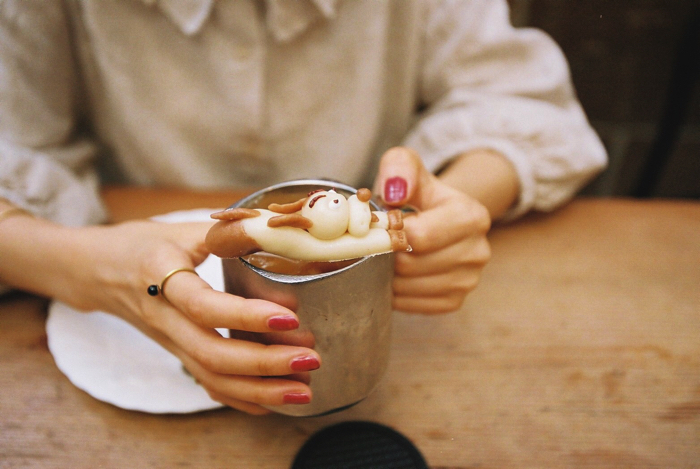
I had mine together with an iced coffee (¥450). The sweet marzipan is a delicious combination with the bitterness of the coffee.
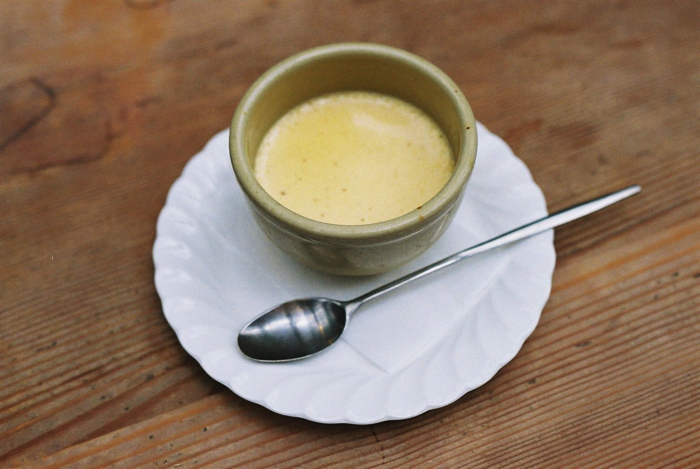
I also got some potted cream (¥450). It’s kind of like a Japanese custard pudding with just a moderate amount of sweetness.
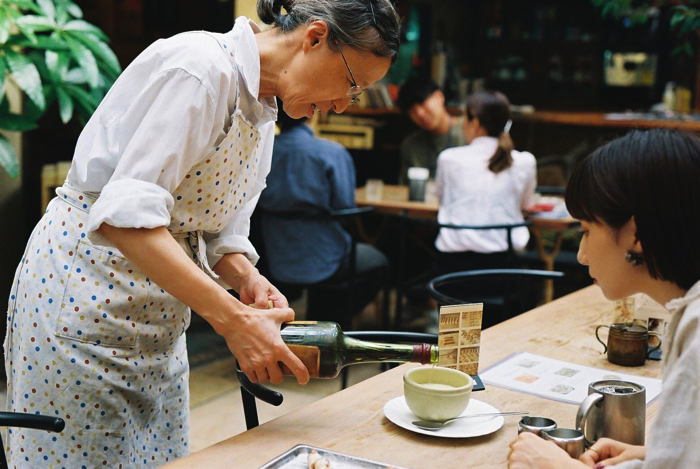
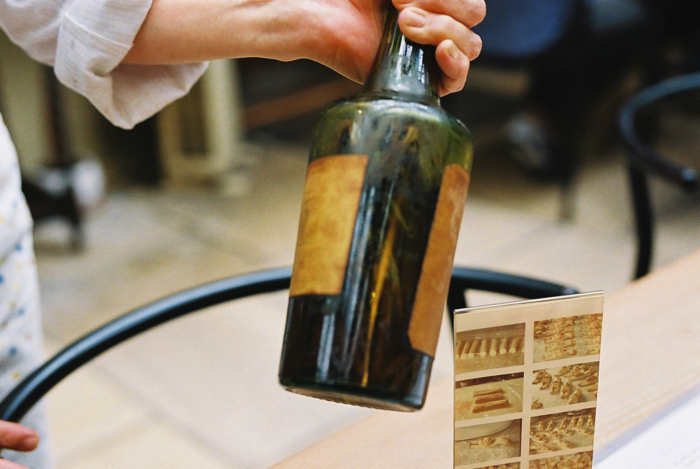
I had mine with a bit of brandy which had fragrant vanilla notes. They’ve had this brandy for 33 years since the store first opened.
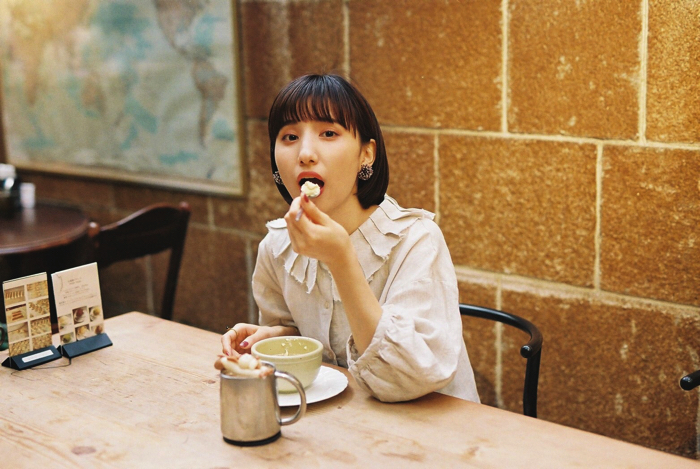
The cream was sensational, and the gentle notes linger afterwards.
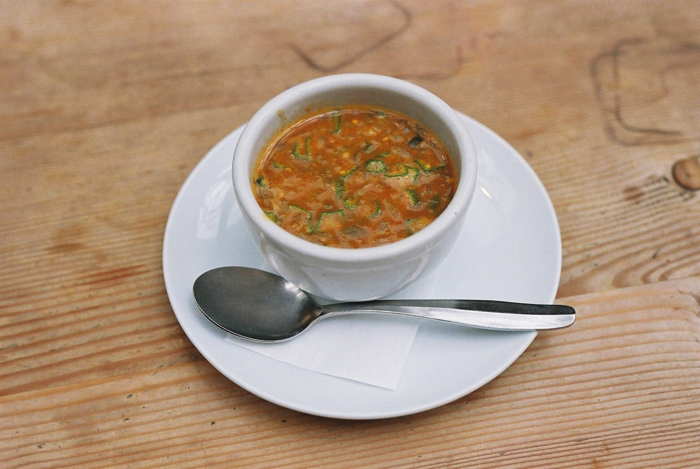
They have a lot of different homemade soups too which are perfect for the coming cold weather. I got the New Orleans-style gumbo soup. It’s spicy with clam and okra in it.
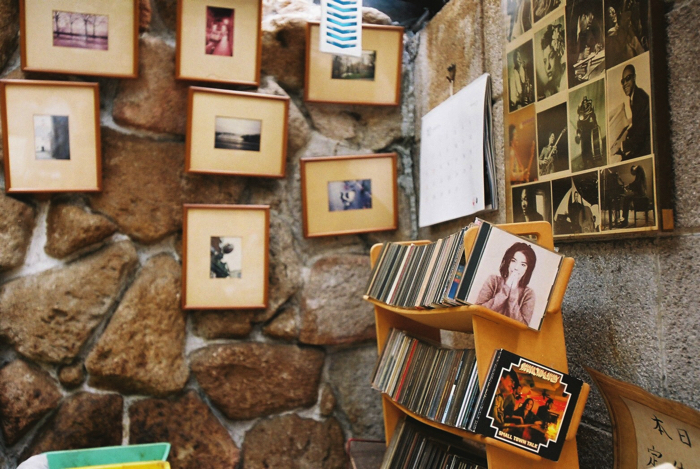
Relaxing jazz music plays in the cafe while you sit and enjoy your drink and meal.
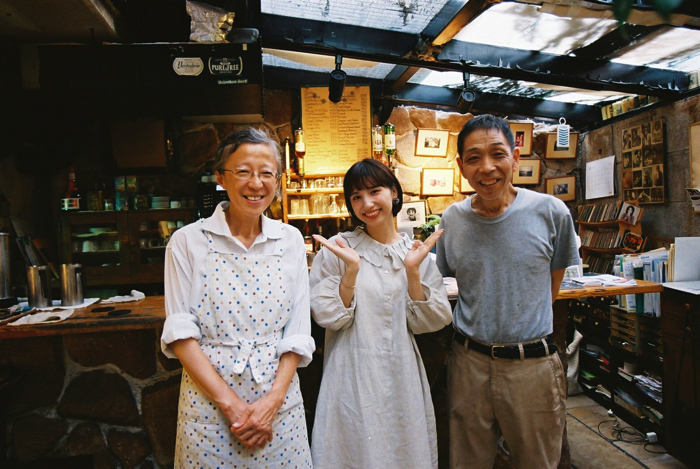
J-COOK is a wonderful little cafe run by a husband and wife. When I first came, the wife came and talked to me. She’s super friendly, and although it was our first meeting, she made me feel really comfortable and welcome. She must be full of happiness, which in turn naturally gives people who visit the strength to be positive and work hard.
I reckon their smiles have saved a lot of people.
I can’t wait to visit again!
Writer/Model: Ema Tanioku
Photographer: Haruka Yamamoto
Design: Yuko Abe (ASOBISYSTEM)
Translator: Joshua Kitosi-Isanga
Information
J-COOK
Address: 3-36-26 Jingumae, Shibuya, Tokyo
Opening Hours: [Tue-Sat] 8:00-22:00 (Last Orders) / [Sun] 11:00-18:00 (Last Orders 17:30)
Closed: Mondays
Official Twitter: @jcookjp
-
A Date With Yutaro: Soaking Up the Japanese Summer Sun & Visiting the Art Aquarium | Tokyo Stroll
It’s been a while since our last date with Yutaro. He’s been very busy with film shoots. He had some spare time today so we paid a visit to Nihonbashi for our next date. “ECO EDO Nihonbashi: Enjoy Cool Edo With All Five Senses” is an event held every year in the Nihonbashi area which takes the Edo period cultural idea of “coolness”―an in, to enjoy being cool during the summer-and puts a modern spin on it. There are many exciting things to look forward to, including the art aquarium which proves massively popular every year.
We gave ourselves more time to arrive at the meeting place to be in the safe side, but it seems Yutaro-kun was already there waiting for us!
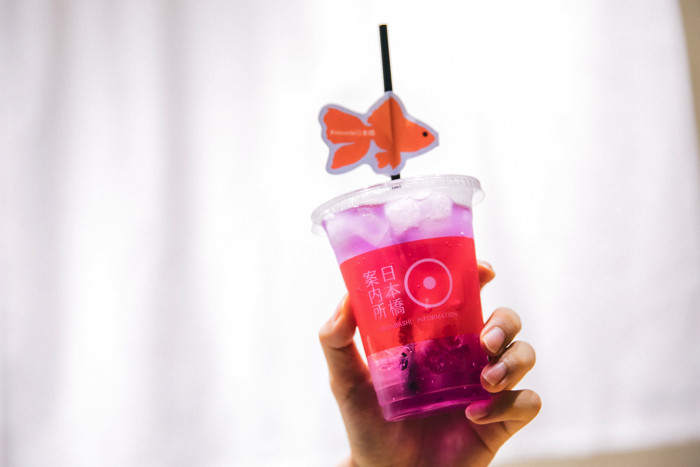
Nihonbashi Information Center | IPPIN CAFÉ “Sparkling Herb Tea” – ¥518 (Tax Included)
“Here, you must be boiling.” Yutaro-kun kindly offers a cup of IPPIN CAFE’s limited-edition sparkling herb tea. It’s a delicious mix of fizzy soda and lemon, a perfect refreshment for the summer. Since he ordered takeout the drink came with a goldfish straw. Goldfish are a staple sight during Japanese summer festivals so it’s very fitting for the occasion!
With our drinks in hand, it’s time to head to Nihonbashi for our Edo summer date!
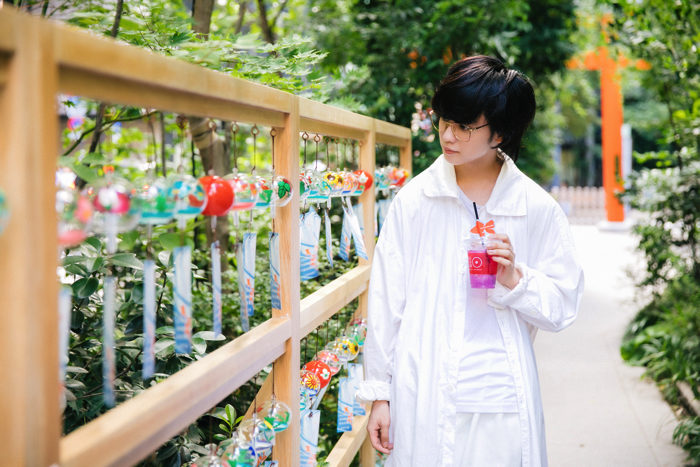
Wind-Chime Forest Path
Lining the path between Fukutoku Shrine and Fukutoku Garden is the Wind-Chime Forest Path where around 200 Edo-style wind chimes dangled. This year, during the evenings, the path is illuminated with beautiful lighting.
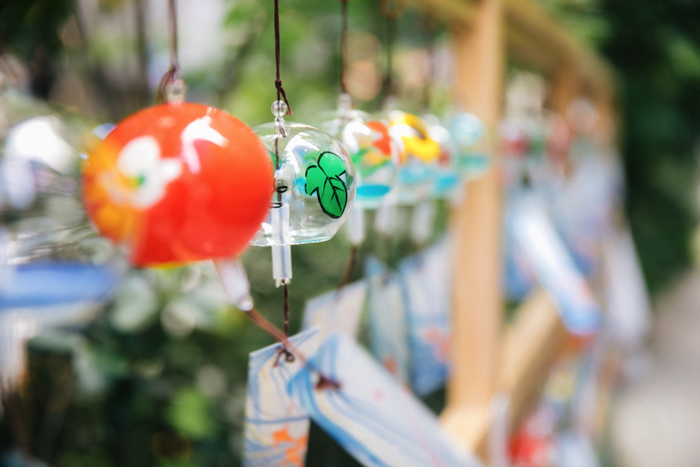
When the breeze rolls past the wind chimes ring one by one-a cool and refreshing sound.
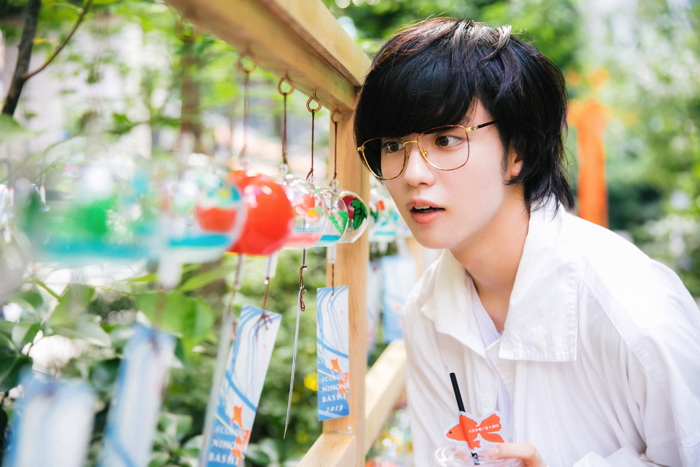
“I hear each one of these Edo wind chimes are individually handmade by craftsmen.”
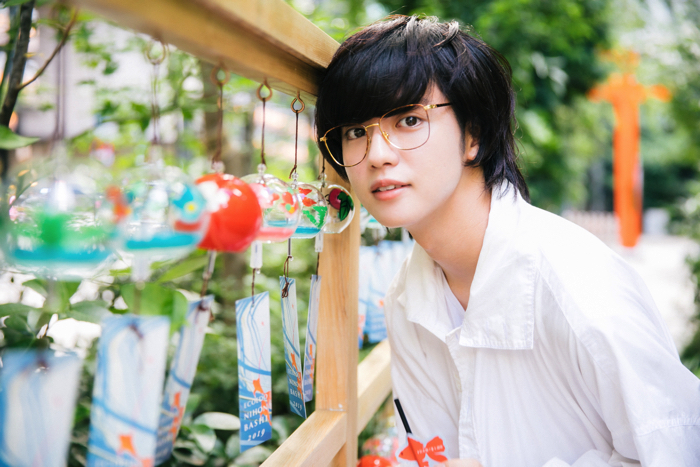
When you hear the sound of the wind chimes it makes you feel cool like a gentle breeze of the wind.
After strolling along the Wind-Chime Forest Path we make our way towards this year’s ECO EDO Art Aquarium event.
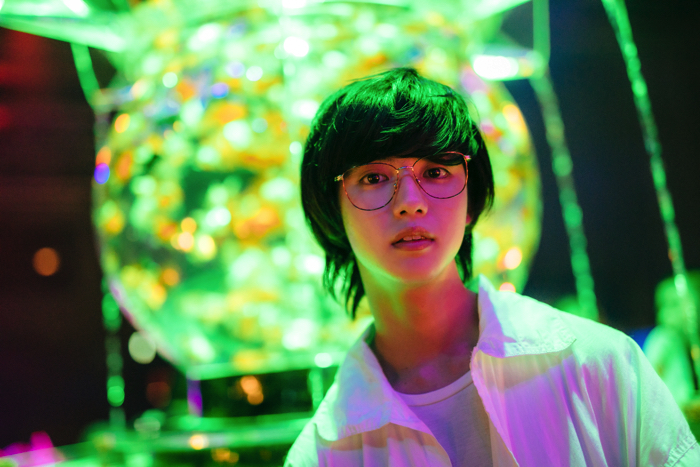
The moment we step instead Yutaro is already dazzled by all the goldfish: “Wow! I knew about this place from what I’d seen online, but this my first time here! This art aquarium really is something!”
The full title of the event is “ECO EDO Nihonbashi ART AQUARIUM 2019 ~Edo, Coolness of Kingyo~ & Night Aquarium.” Goldfish were a huge part of the common culture in Nihonbashi during the Edo period. This event recreates that and brings that “coolness” aspect while combining it with contemporary art by having people observe the fish in lots of different artistic environments.
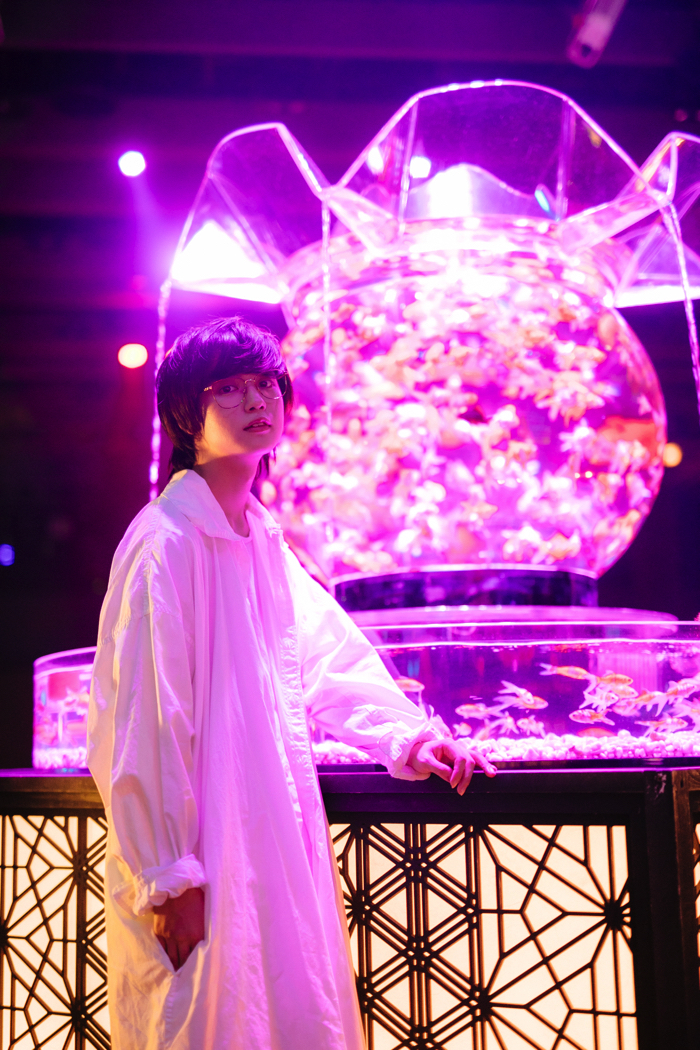
Super Oiran
“This is the biggest fish tank, apparently it has 3,000 fish swimming inside!”
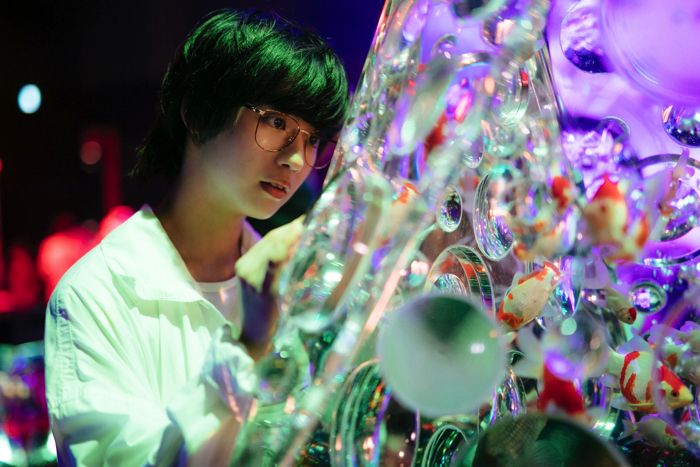
“Seeing the light reflect on the water from the illuminations lets you see the fish in a different light, doesn’t it?”
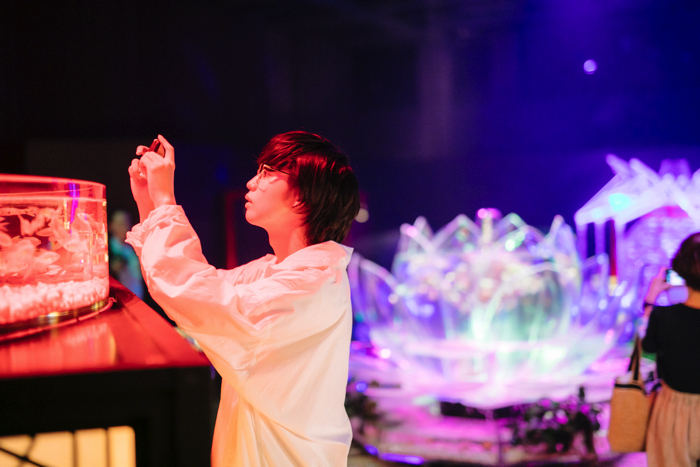
Looks like Yutaro-kun is having a lot of fun taking photos.
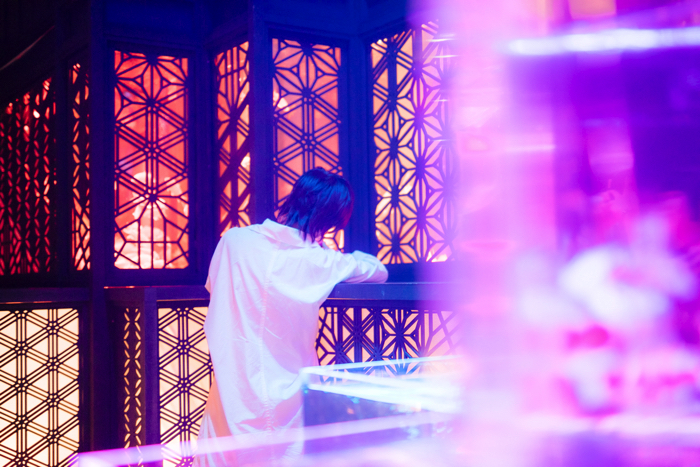
He’s equally interested in just about every fish tank!
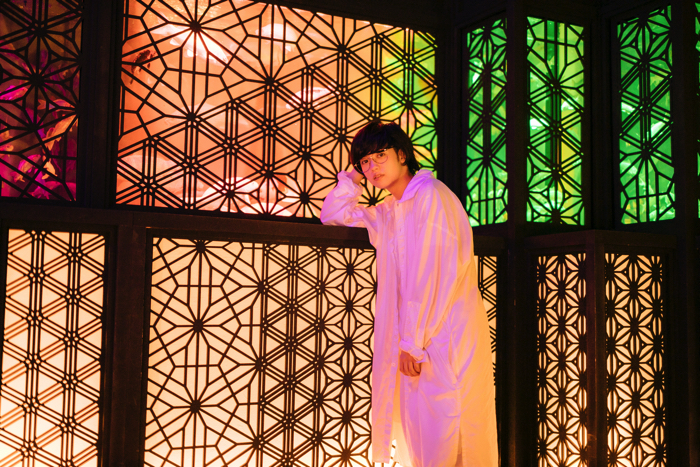
These other fish tanks have a different aesthetic to them. Their Japanese-style designs make for great photos.
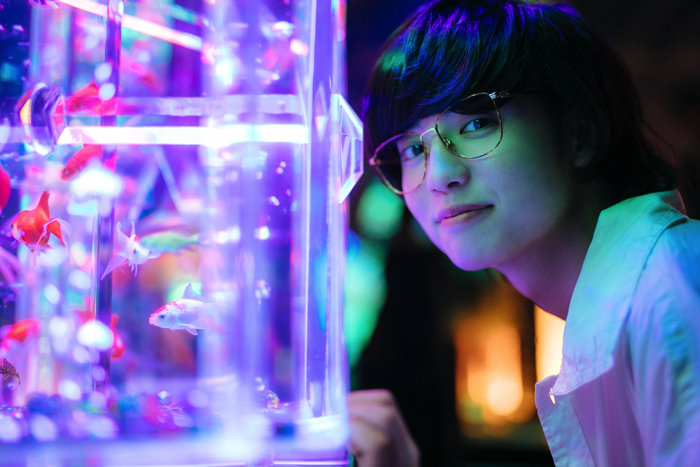
Kaleidorium 3D
“This one’s beautiful, it’s like a kaleidoscope.”
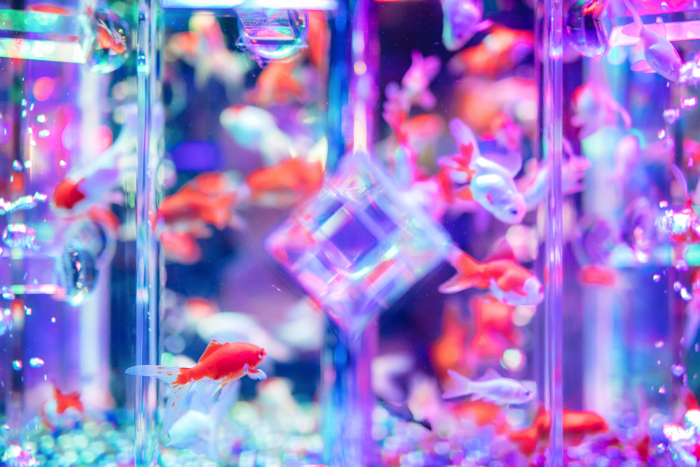
It really does look like one. When you take a peek instead you can glimpse all kinds of colourful fish gently swimming around.

Ceiling Kingyo
“There’re goldfish swimming on the ceiling too. So cool! This aquarium is incredible. It brings together the great culture of Edo and contemporary art.”
The Art Aquarium bustles every single year with visitors, but this year will mark its last run. It’s being held at Nihonbashi Mitsui Hall, so if you have the chance to go then please do.
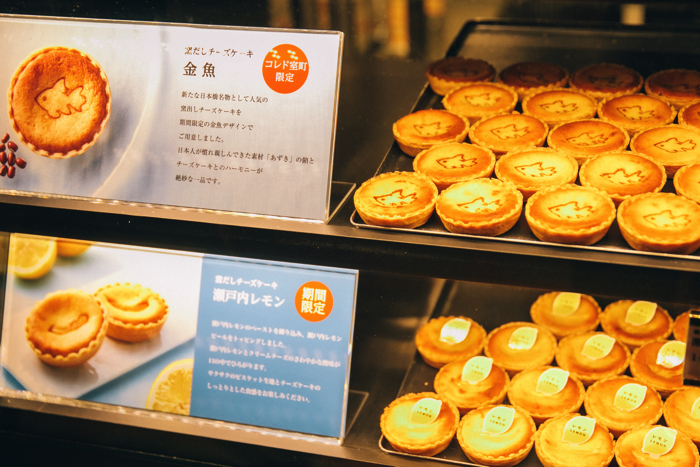
We of course checked out some local Nihonbashi treats too! We stopped by morozoff for some cheesecake after the aquarium.
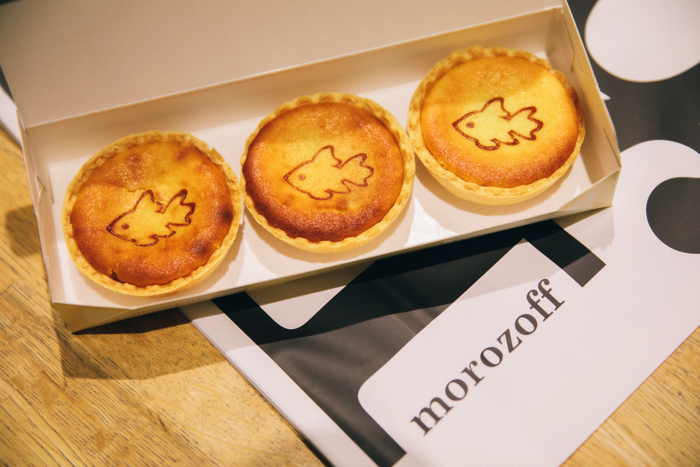
morozoff Kamadashi Cheesecake (Goldfish) – ¥270 Each (Tax Included)
These cute cheesecakes with their goldfish designs are available for a limited time only. They’re filled with sweet red bean paste. They perfect with iced tea.
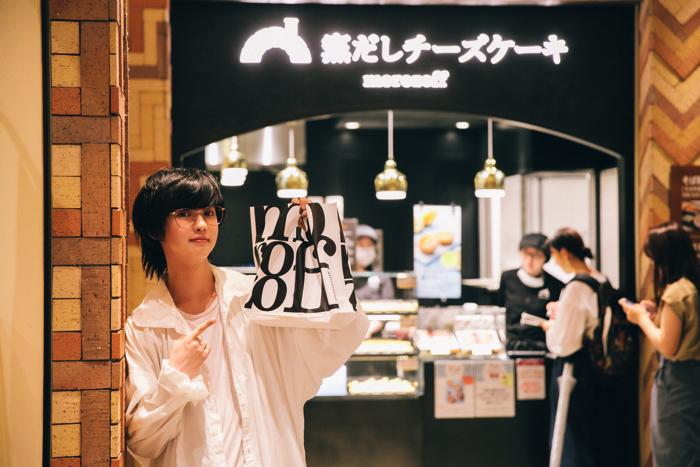
“Got some! Let’s eat them while we head back.”
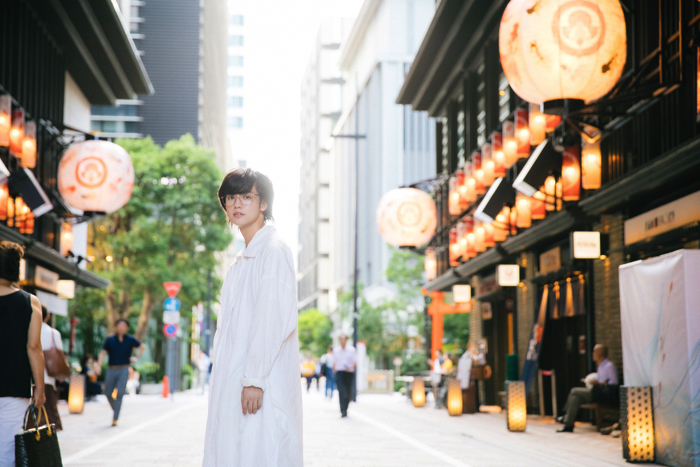
Goldfish Lantern Walkway
Our first date in Nihonbashi was so much fun. While on the date Yutaro-kun spoke about the new live-action film he’s in, Kaguya-sama: Love Is War.
“It’s a romance film with mind games to try and make the other person confess their love. I play the character Tsubasa. His number one highlight scene is the kabedon scene. That was my first day shooting, so I was super nervous, but I got along well with the other actors, and the atmosphere on set was harmonious, so I was able to relax for the shoots. Tsubasa is a genuine guy who will believe things that have been said to him in earnest. You’ve definitely gotta check out all his scenes throughout the film!”
“A lot of the cast are the same age as me, so we were all energetic together in the waiting room. There’s a scene at the end where all the cast get together. It took 3 days to shoot so we ended up getting along really well.”
“This film has made me realise that love comes in many shapes, and that mind games happen in a variety of ways between guys and girls. There’s cute scenes that express that small bit of pride that teenagers have, the embarassment they feel, when they get butterflies, scenes that will warm your heart. The film has various elements to it so I thoroughly enjoyed watching it myself. I hope that couples in love in their teens and twenties watch it, and I also hope that married couples watch it and crack up laughing too.”
“In the film it’s summer break, and they go and see fireworks and stuff. It’s definitely one to watch durnig the summer. You’re gonna come watch it too, right? Shall we go?”
An offer we cannot refuse! We’ll definitely go and see it with you, Yutaro-kun!
Model: Yutaro
Writer: Yuki Yokoo
Photographer: Kayo Sekiguchi
Information
ECO EDO Nihonbashi 2019 ~Enjoy Cool Edo With All Five Senses~
Running: July 5, 2019 – September 23, 2019
Location: Nihonbashi Area
TEL: 03-3242-0010 (Nihonbashi Information Center)
Event Page: https://www.nihonbashi-tokyo.jp/en/ecoedo2019/
ECO EDO Nihonbashi ART AQUARIUM 2019 ~Edo, Coolness of Kingyo~ & Night Aquarium
Running: July 5, 2019 – September 23, 2019
Location: Nihonbashi Mitsui Hall Floor 5F (Entrance at 4F), COREDO Muromachi 1, 2-2-1 Nihonbashimuromachi, Chuo Ward, Tokyo
Opening Hours: Art Aquarium 11:00-19:00 / Night Aquarium From 19:00
[Sun-Fri] 11:00-22:00 (Last Entries 22:00) [Sat & days prior to public hoiday] 11:00-23:30 (Last Entries 23:00)
Access: Directly connected to Exit A6 of Mitsukoshimae Station, accessible on the Tokyo Metro Ginza Line and Hanzomon Line / Directly connected to Shin-Nihombashi Station / 8-minutes on foot from East Exit of Kanda Station JR 8-minutes on foot from Nihonbashi Exit of Tokyo Station
TEL: 03-3270-2590
Event Page: https://www.nihonbashi-tokyo.jp/en/ecoedo2019/contents/005.html
Kaguya-sama: Love Is War Film
Release Date: September 6, 2019
Adapted from the manga of the same name by Aka Akasaka (Shueisha/Weekly Young Jump)
Cast: Sho Hirano (King & Prince), Kanna Hashimoto, Hayato Sano, Natsumi Ikema, Nana Asakawa, Mayu Hotta, YUTARO, Takashima Masahiro, Jiro Sato
Official Website: https://kaguyasama-movie.com/
TALENT PROFILE
Yutaro
Yutaro was born in Hiroshima on June 3rd 1998. His modeling career has earned him lots of attention as a fashion icon of the new generation. The famous model also works as a “charisma” shop assistant. Yutaro has gained his reputation as a “mysterious and handsome guy” from his appearance on Japanese variety shows. His debut was made on the show “Gyoretsu no Dekiru Horitsu Sodanjo” and has since then appeared on numerous different TV shows. He challenged himself to appear on stage for the very first time in March this year and is gaining popularity by the day for his diverse work.
-
Tokyo Stroll: The Café That You Want to Visit to See Someone #11 – ‘Hatoya’ in Asakusa
In this edition of The Café That You Want to Visit to See Someone, I visited Hatoya which is located in Asakusa Shin-Nakamise Arcade.
The streets of Tokyo’s historical district of Asakusa are packed to end with cafés. You can be spoiled for choice, but Hatoya stood out to me in particular as it’s an especially old café. Business there began back in 1927 but the actual building was built back in the Taisho period, meaning its history spans more than 90 years ago!
The outside appearance of the shop is smart and chic so it’s very easy to spot. I couldn’t tell by looking from the outside, but the inside is full of old decorations and odds and ends which make you feel the history of the café.
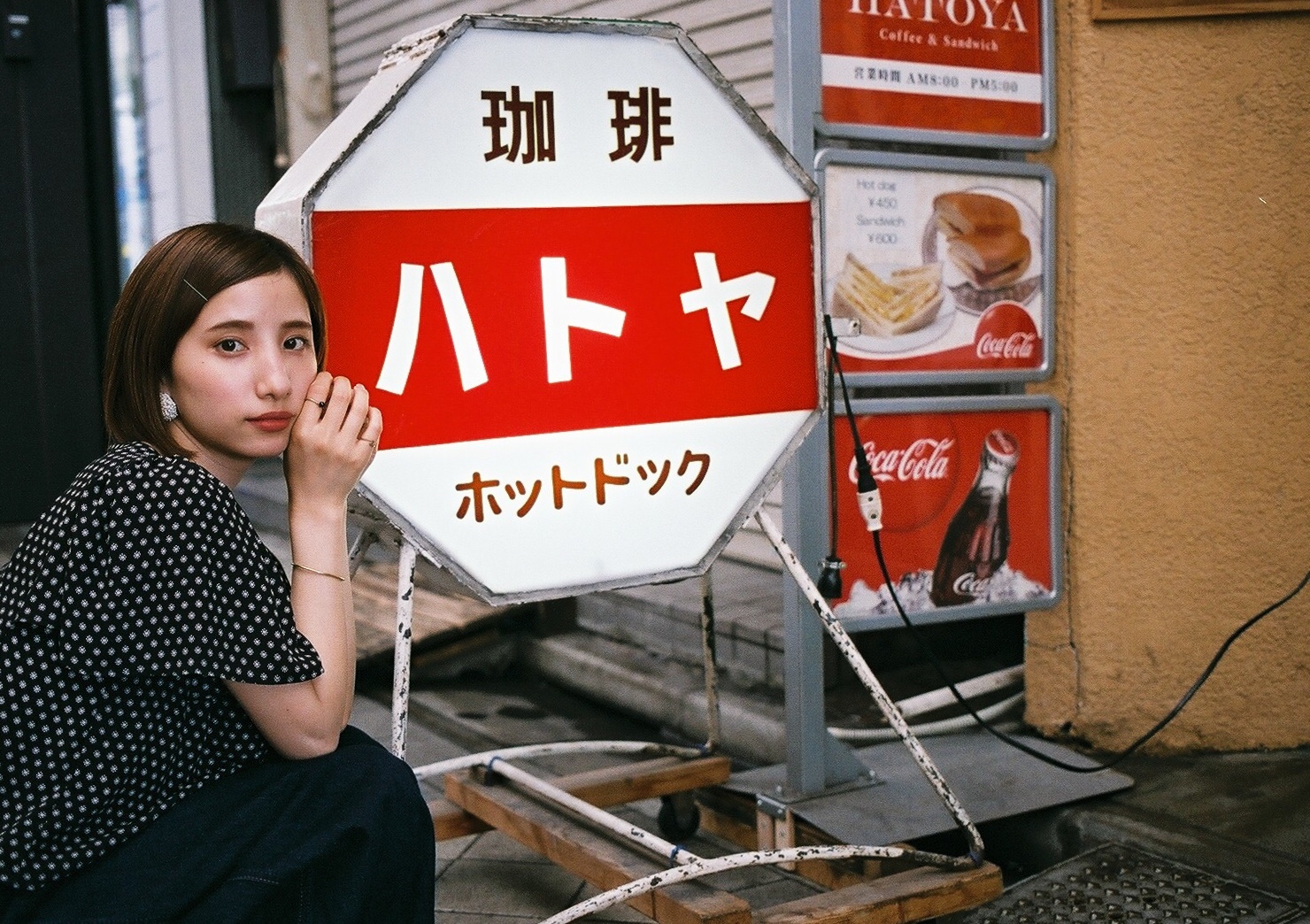
One reason why I wanted to visit this place so much is because I was drawn to their logo. It’s really retro-kawaii so I just couldn’t resist!
You should take some photos too if you visit.
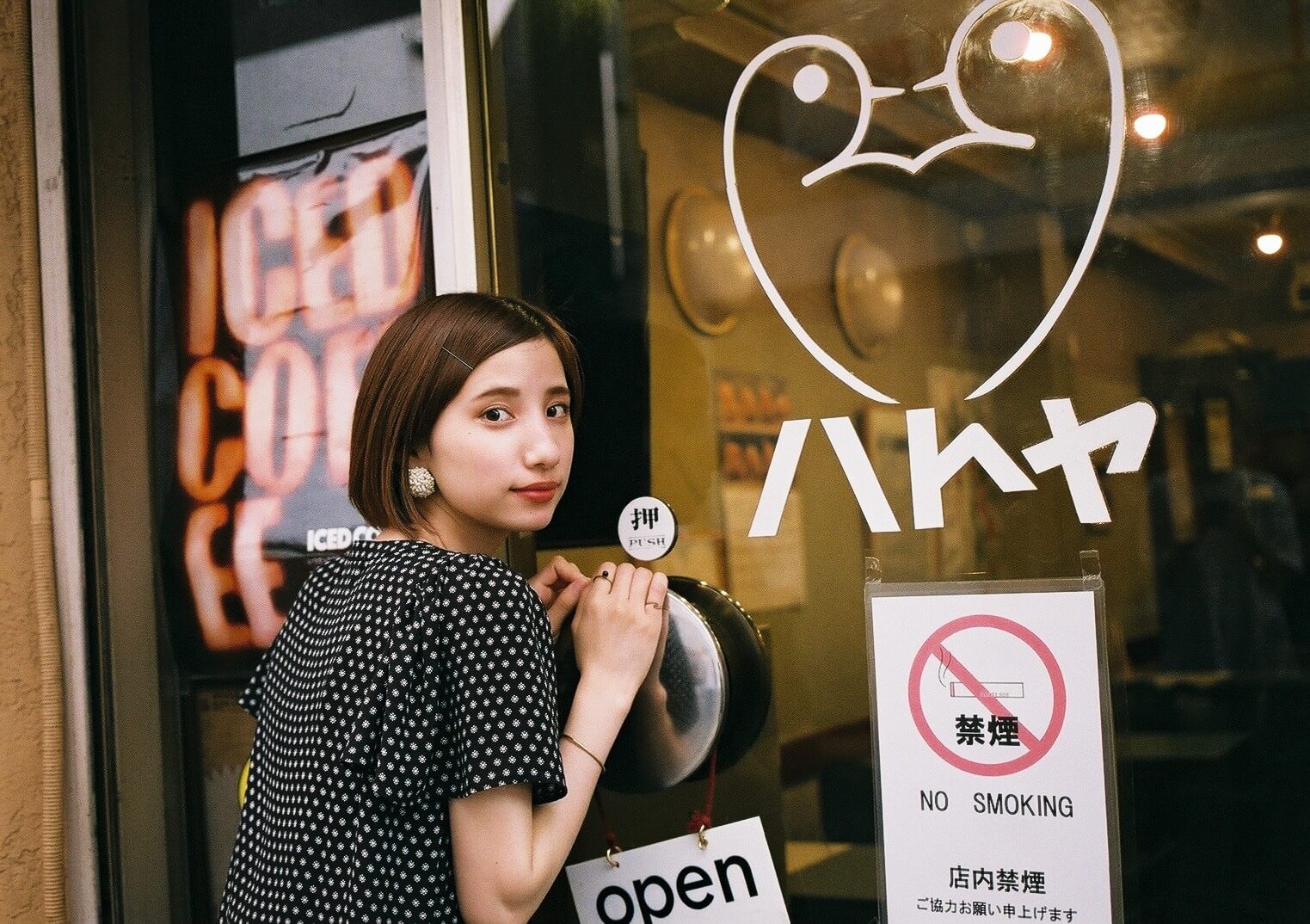
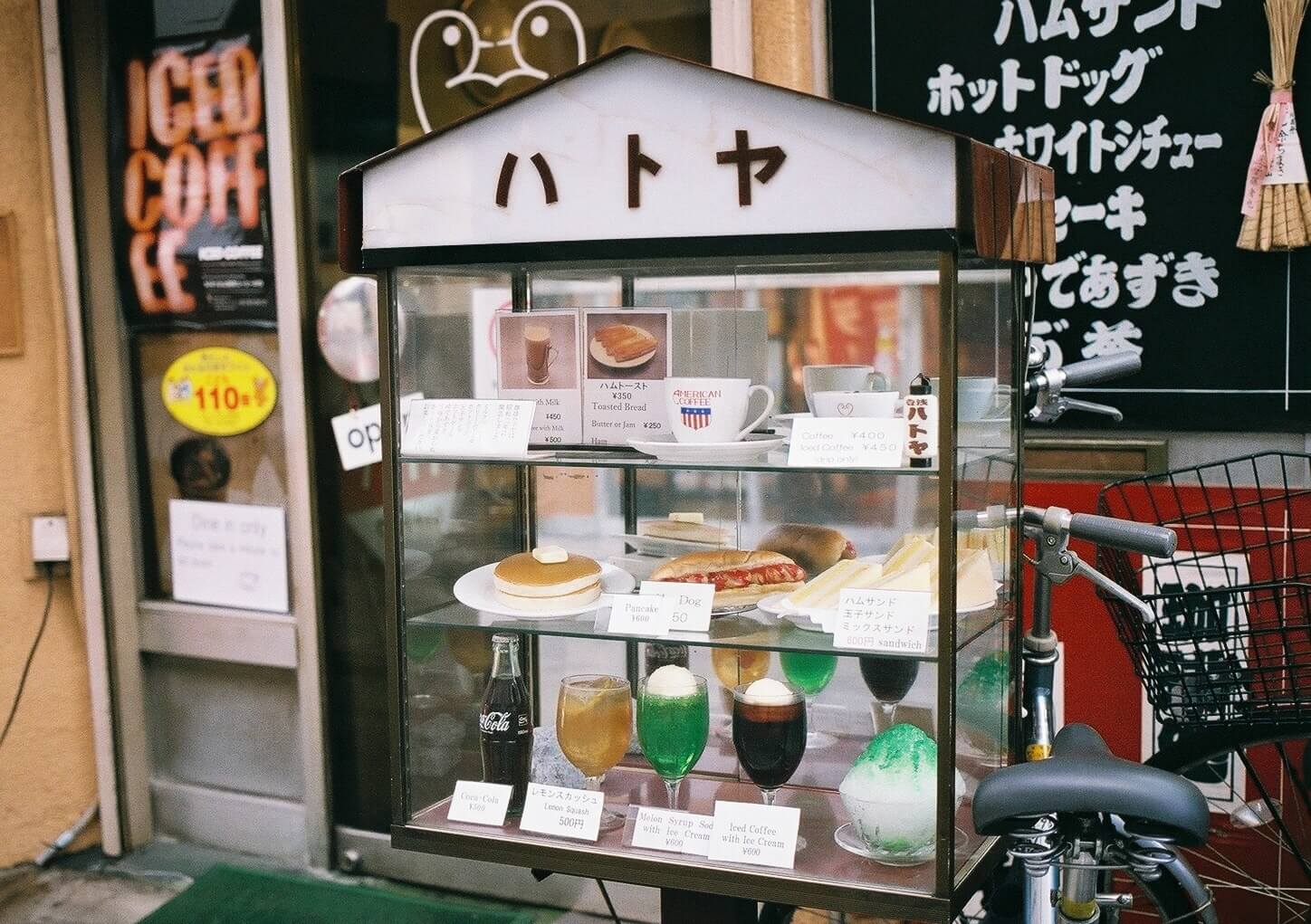
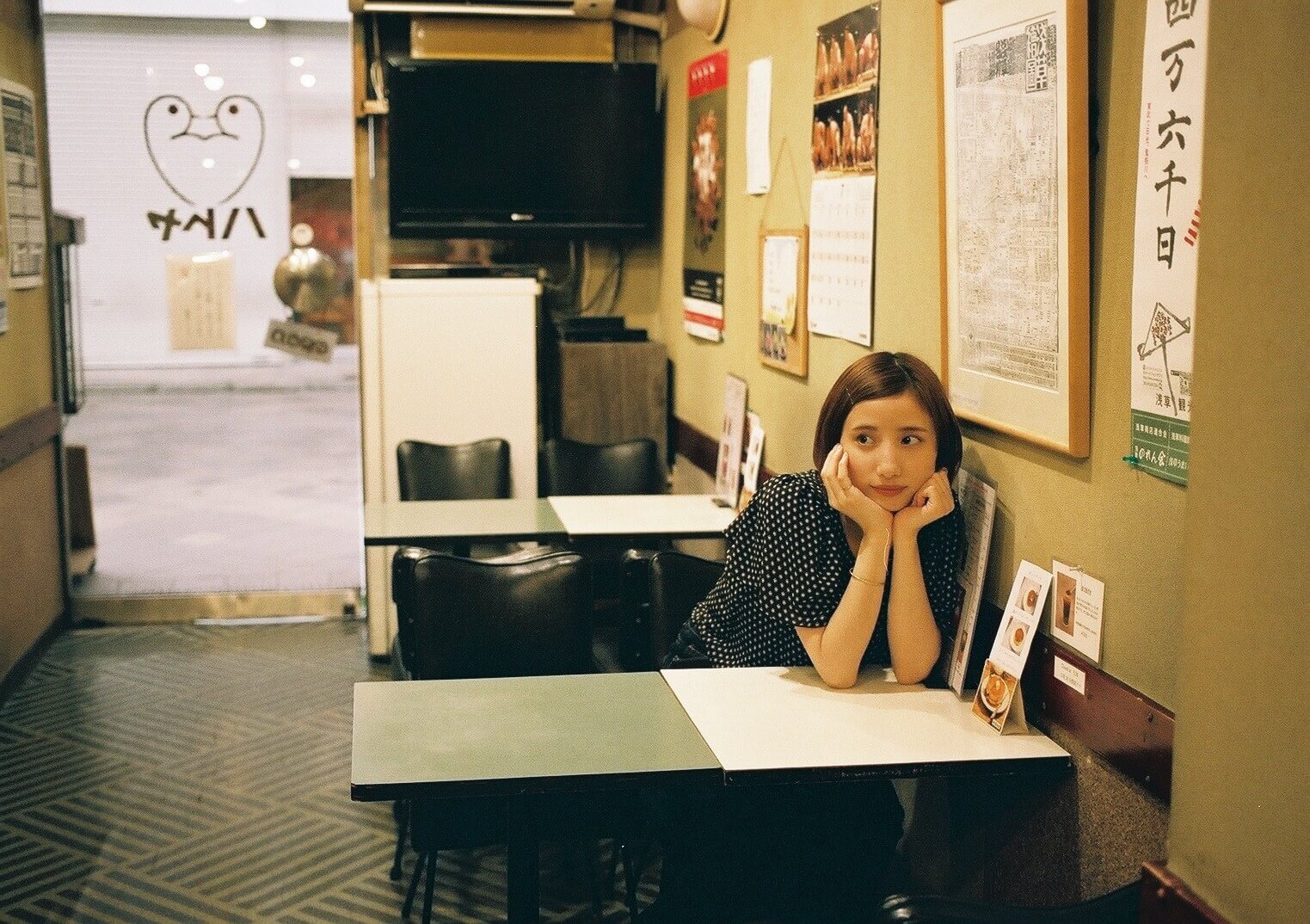
It was time to head inside. It’s really comfy and cozy in there; the atmosphere was nice and relaxed.
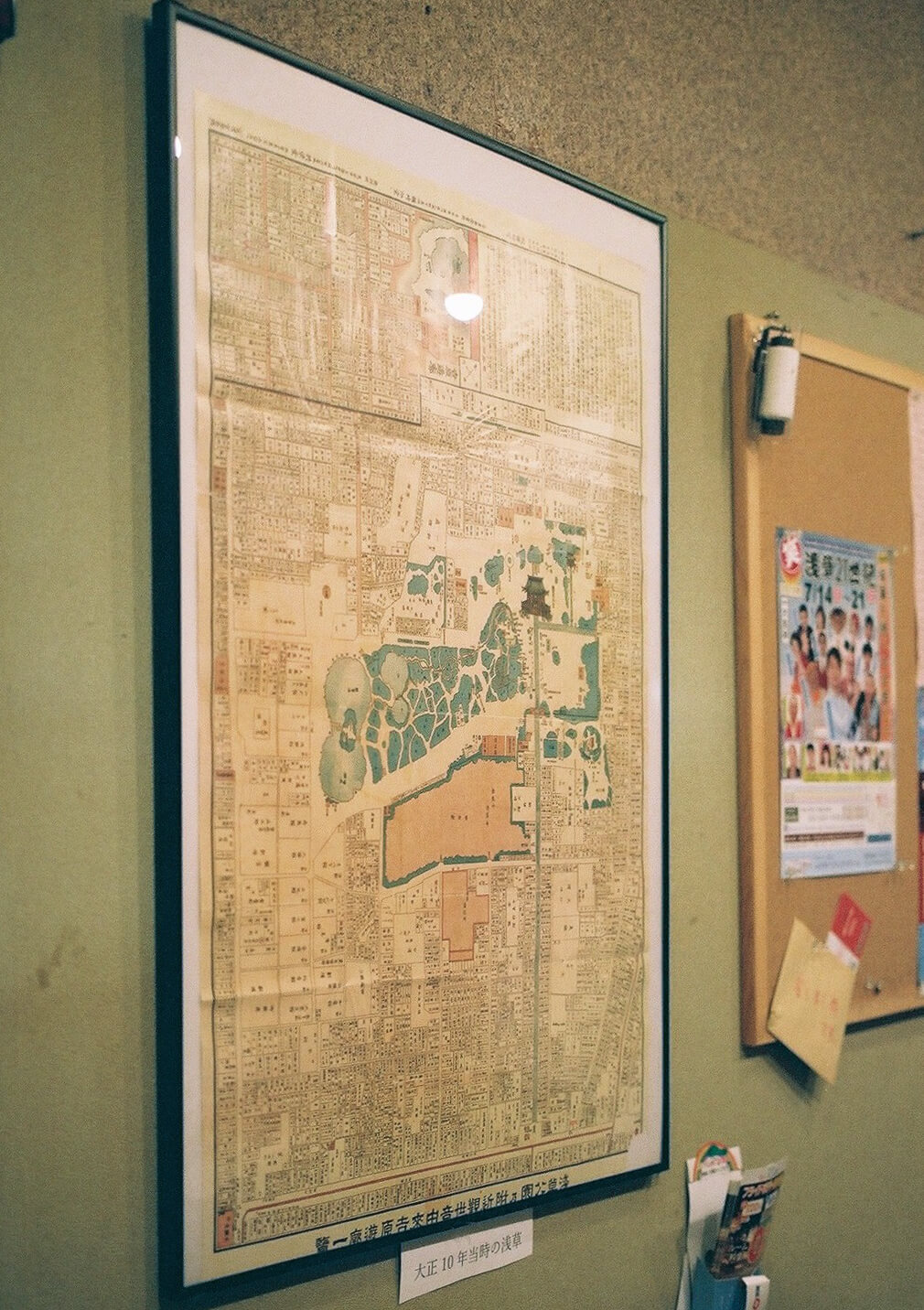
Framed on the wall is a map of the Asakusa area during the Taisho era. Hatoya became famous back then because people could buy coffee for a mere 5 sen (a single sen is one-hundredth of a yen).
When business first began at Hatoya, because the café was opposite the stage door of a theatre, all of the famous actors and actresses would pop in. Some include famous Japanese comedian Roppa Furukawa and film actor Kiyoshi Atsumi who played Tora-san in the film series Otoko wa Tsurai yo.
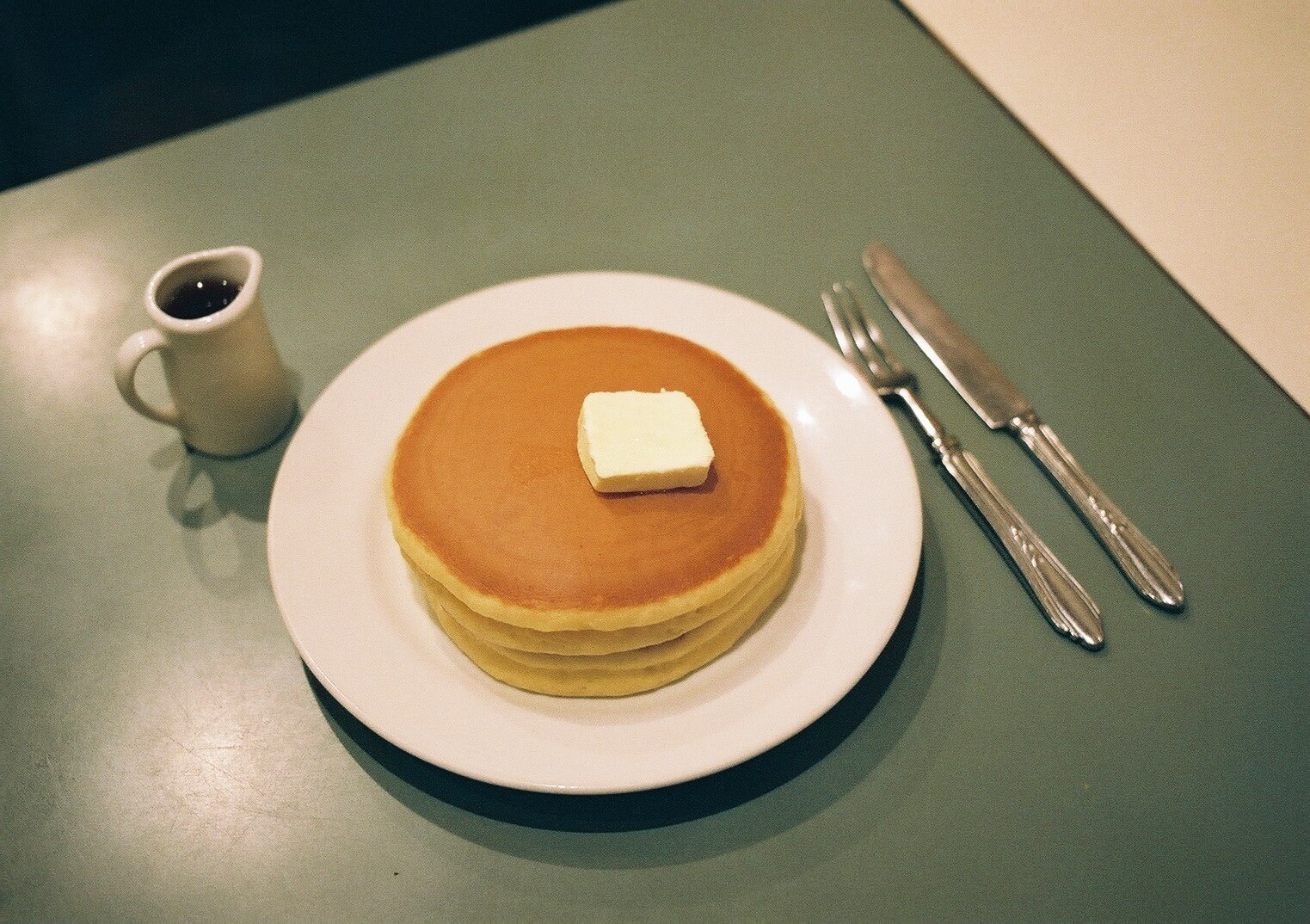
I ordered the café’s popular hotcakes which cost ¥600. They have been making these same hotcakes since before the war.
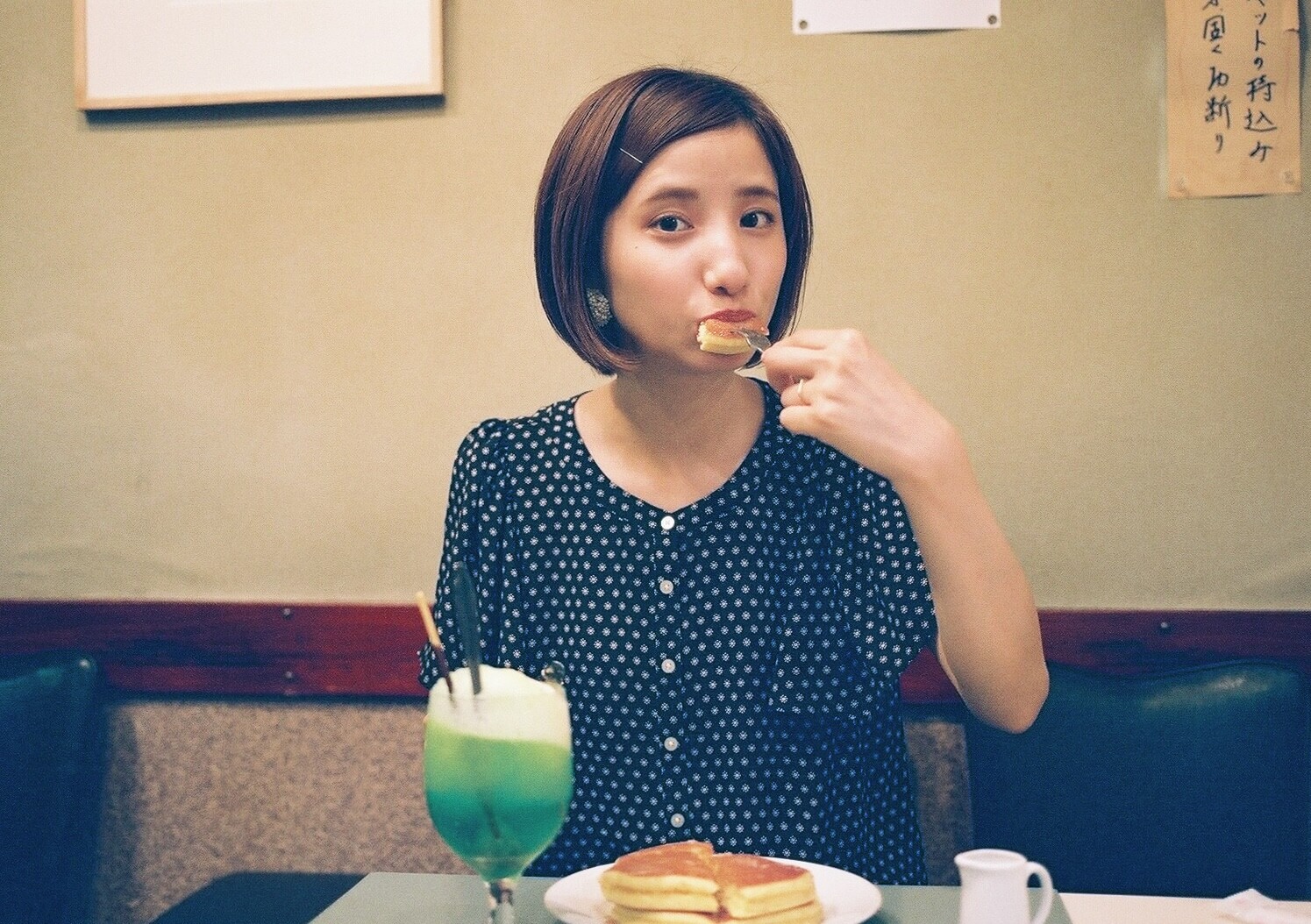
They were nice and fluffy and had a deliciously gorgeous brown colour. The flavour was out of this world when the butter melted from the heat of the hotcakes and mixed together with the syrup.
The portion might look like a lot but they are fluffy and have a light flavour so can be finished with no problem.
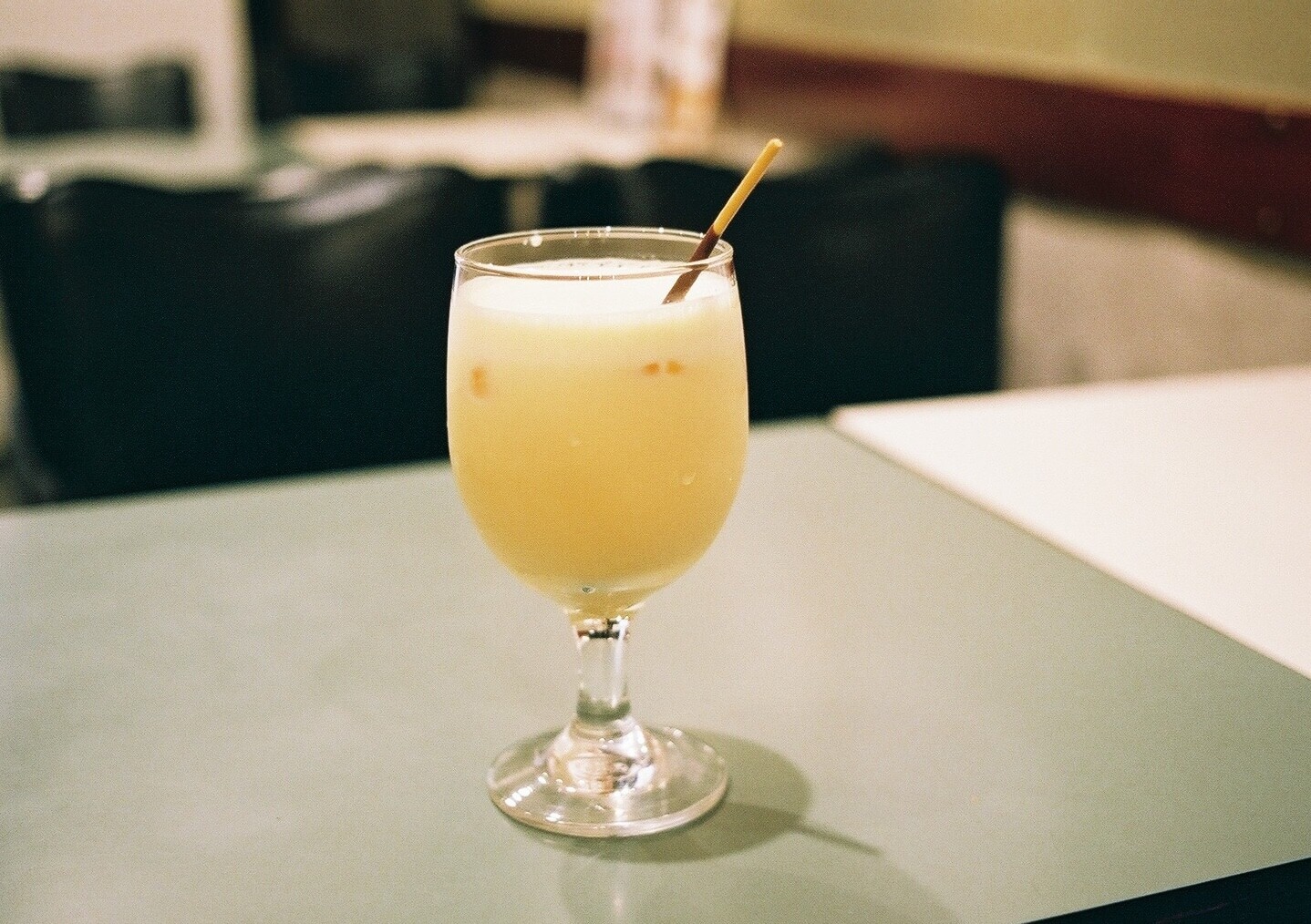
And is the café’s signature milkshake (¥500).
It’s so refreshing that you can knock it back all in one go. It has a simple flavour but it tasted so good!
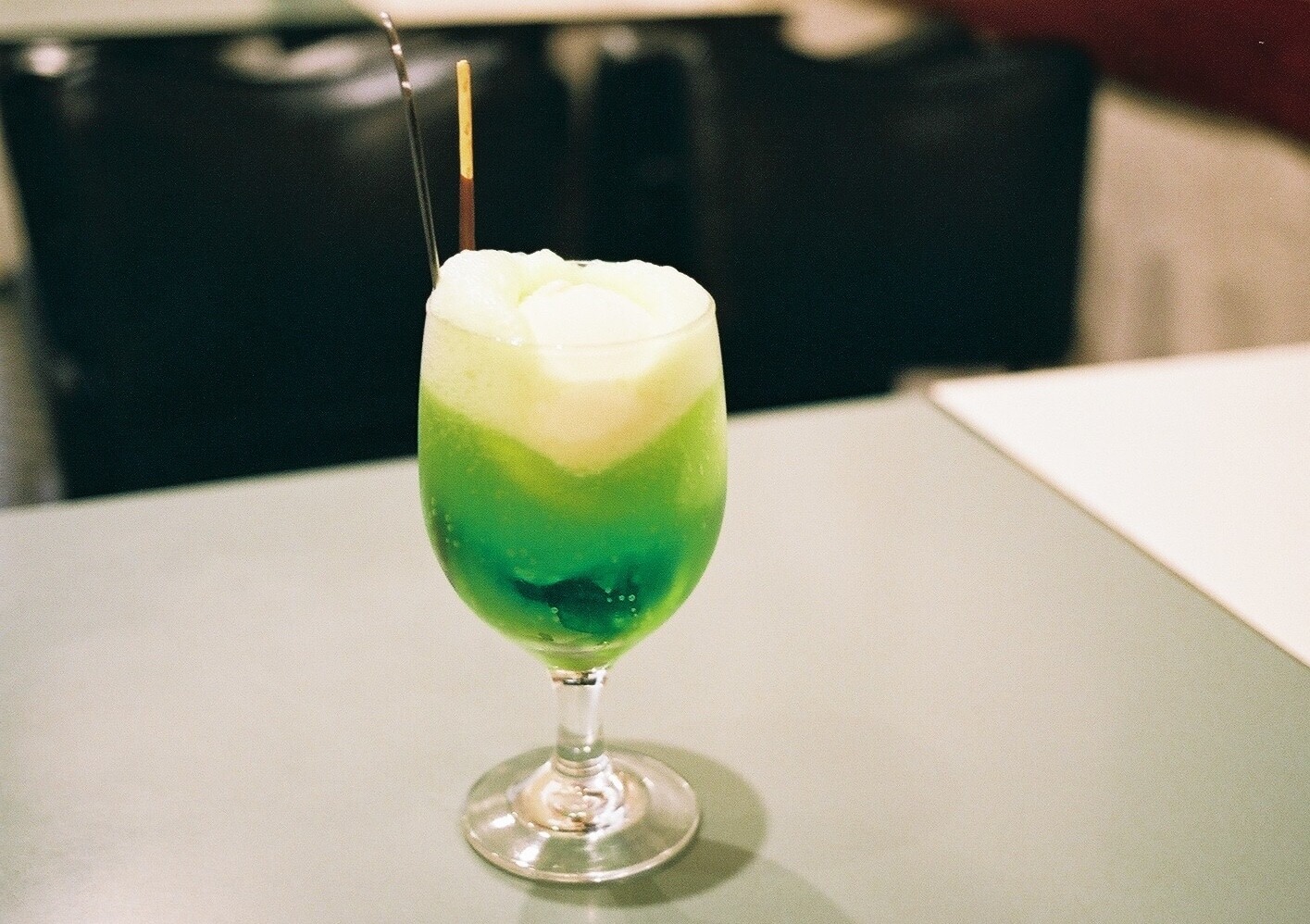
I also ordered the ¥600 cream soda, my favourite beverage.
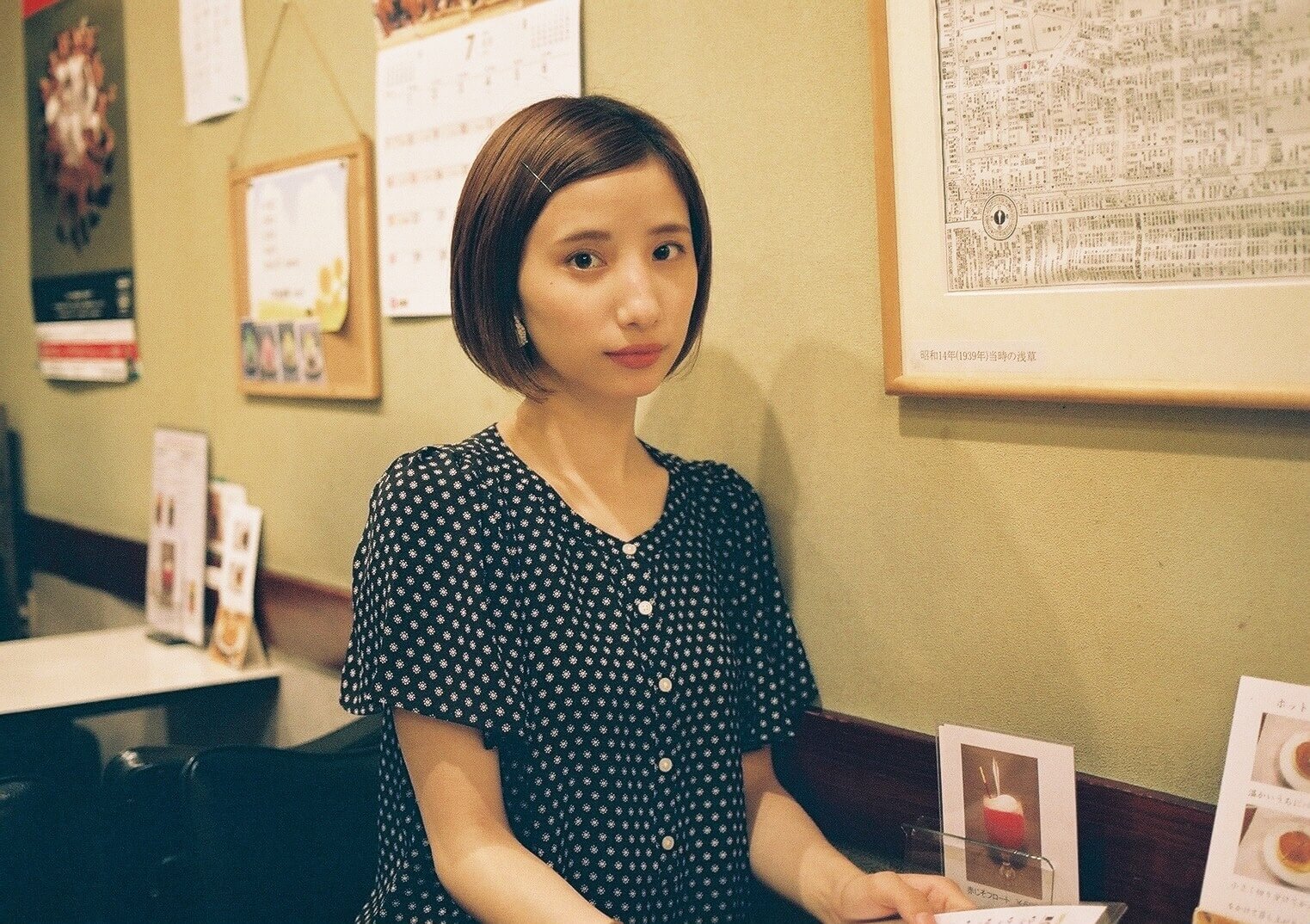
I’ve been to many cafés, and have covered many in this series, but this is the first I have dined at with such a deep history. I found myself enthralled by the stories of the owner who has continued to treasure the café and maintained it all the same since it opened. I feel like I have learned about a world I never knew about. The next time I go to Hatoya with a friend I’ll be sure to let them in on its history. I encourage you to visit too!
Writer/Model: Ema Tanioku
Photographer: Haruka Yamamoto
Design: Yuko Abe (ASOBISYSTEM)Information
Hatoya
Address: 1-23-8 Asakusa, Taito Ward, Tokyo
Business Hours: 10:00-17:30
No Fixed Holidays
Tabelog Page: https://tabelog.com/tokyo/A1311/A131102/13076130/
TALENT PROFILE
Ema Tanioku
“Emaeri” is the nickname for models Ema and Eri Tanioku, who are Aomoji fashion model twins. Ema and Eri Tanioku specialise in twin fashion coordination. Over the years their fanbase has increased due to their cute looks. Ema Tanioku spreads Harajuku culture within Japan as well as overseas and works as a Harajuku Tourism Ambassador. Starting off as a model, Ema has broadened her talent range from fashion magazines to TV, and from playing the lead role in dramas to movies.
-
Tokyo Stroll: Shopping & Sightseeing with Mozuku-kun the Dog #5 – Uzumako Ceramic Art School
It’s been a minute since we last ventured out with Japanese model Yuna Yabe and her beloved pet pup Mozuku. If you’re new to this feature, Yuna Yabe takes her trusty partner Mozuku to various hot spots in Japan that you can enjoy with your pet dog. Their relationship continues to deepen in this priceless experience.
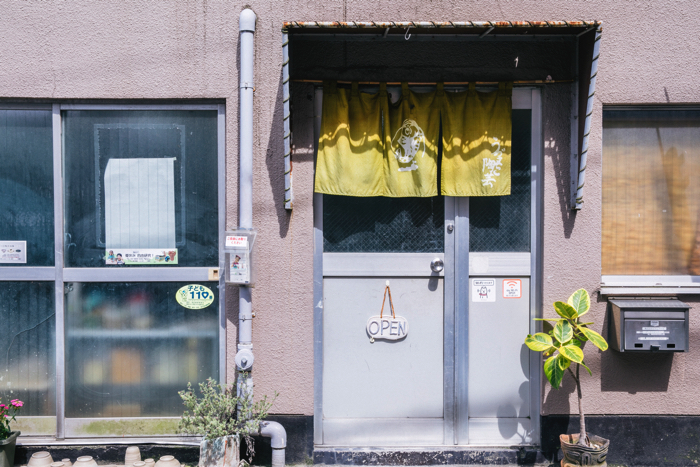
Today, Yuna and Mozuku head to Uzumako Ceramic Art School which is close to Shiba Park. You can get a good view of TokyoTower from this famous park.
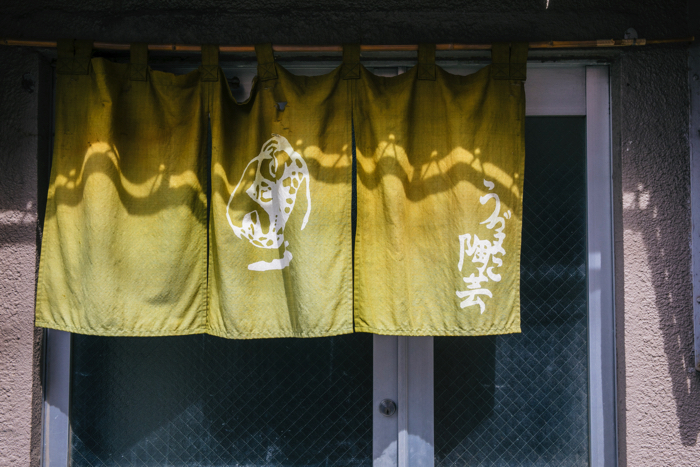
What’s unique about this art school is that visitors are allowed to take their pets with them. So this means you can take your dog with you to do some ceramics!
Yuna has always had an interest in ceramics. And what better way to experience creating something than with her partner in crime Mozuku! With him tottering beside her, she headed through the entrance curtain with a spring in her step.
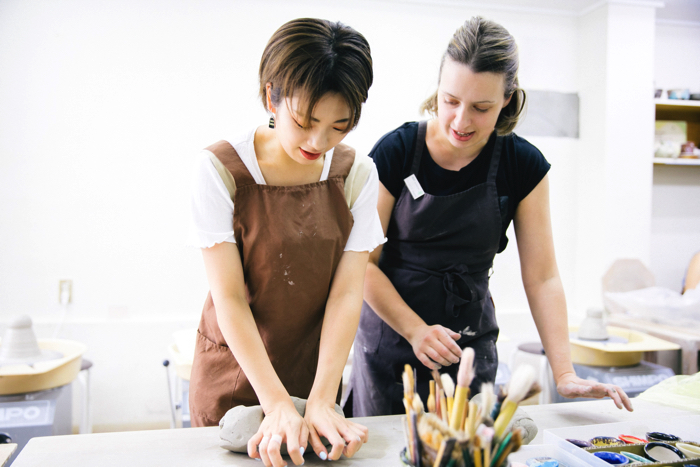
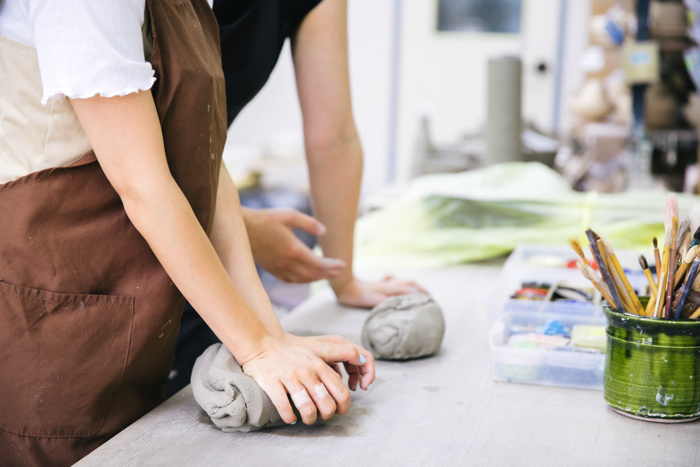
When you enter the classroom, there are lots of examples of pottery ware lining the shelves. The room has that smell of craftsmanship which lingers as you begin the class with a demonstration by the teacher. Once you have your apron on and are fired up to begin, it’s time to start.
The work begins with kneading the clay to make its firmness uniform. This step helps prevent air bubbles from forming.
Yuna asked the teacher many different questions as she enjoyed kneading her clay. “Where does ceramic work originate from?” “What kind of things to other dog owners make when they come here?”
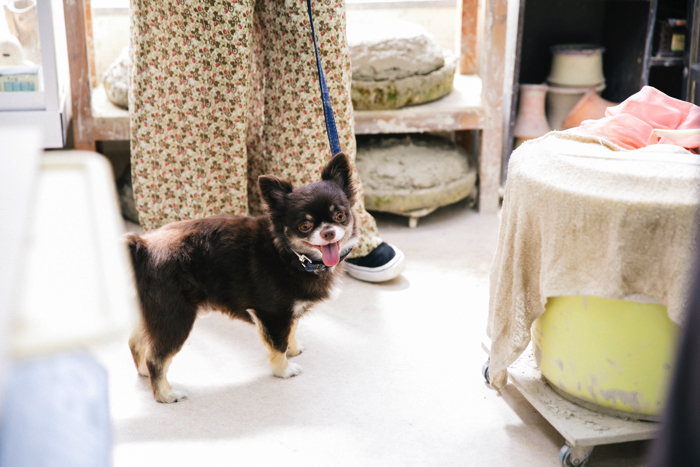
“What’s Yuna up to?” Mozuku’s puzzled face seemed to imply as he listened to Yuna and the teacher talk.
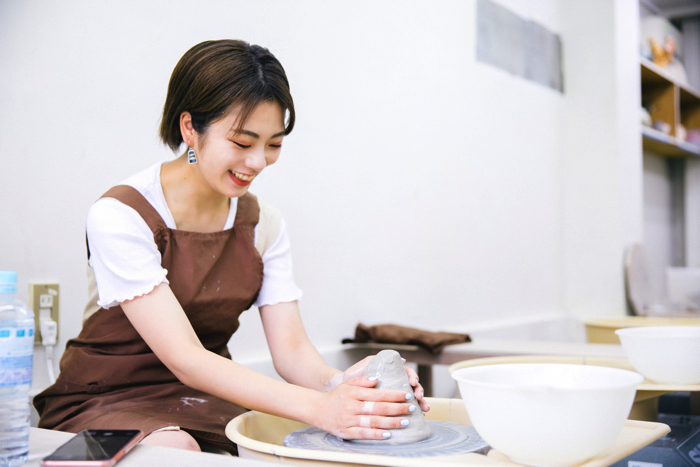
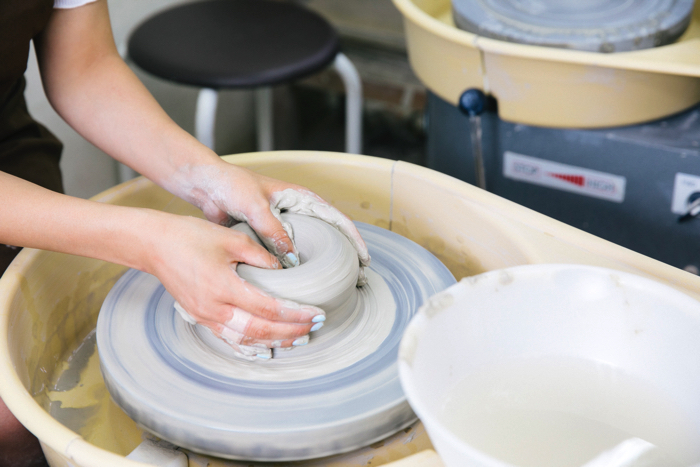
Yuna turned to Mozuku and said to him, “I’m going to make you a food bowl!” It seemed like the message got through as his face read, “Looks like my owner is making something just for me.”
Yuna wet her hands with some water and began forming a hole in the centre of her clay bundle. The hole forms and gets bigger as the pottery wheel spins.
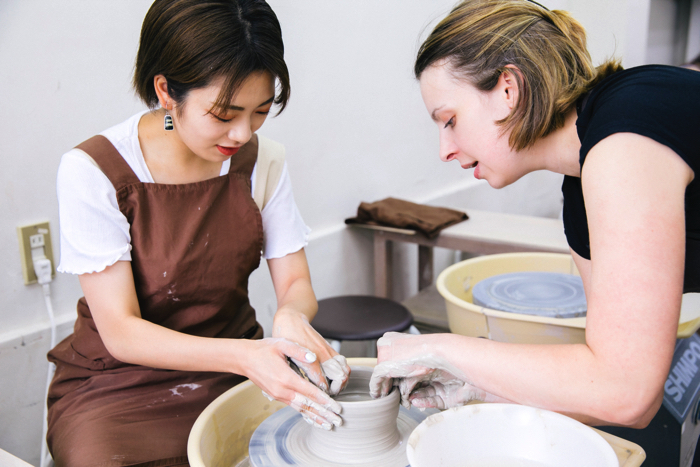
Next, she used both of her hands to ensure the thickness of the bowl was even all the way around.
“Amazing! The shape of the clay changes in an instant!”
By adding a little bit of pressure the pile of clay can change shape rapidly. It’s like a living thing.
“It’s like the clay is my own child. I wanna wrap it up!”
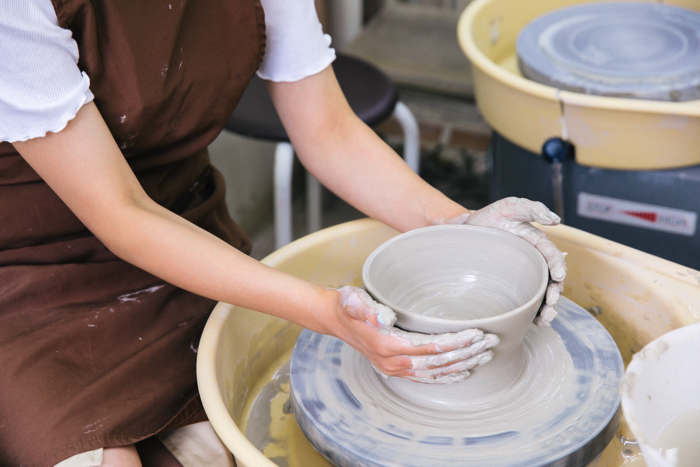
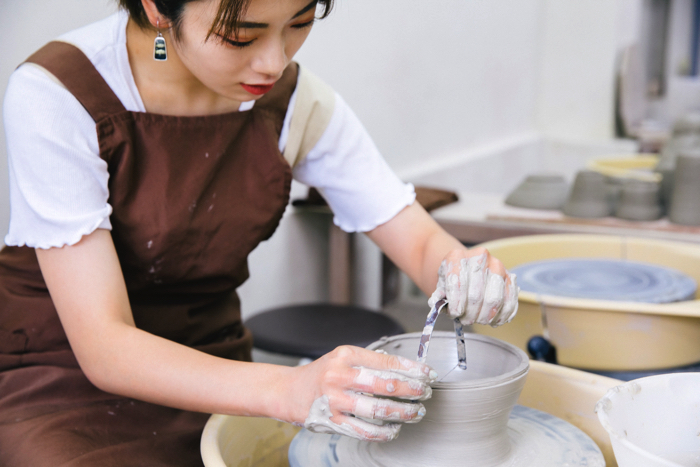
Once the shape is formed, Yuna cut around the edges. She is a skilled individual, she got the hang of it straight away.
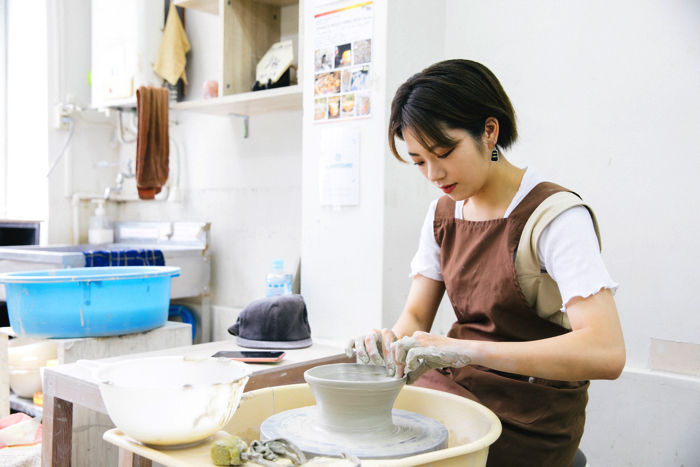
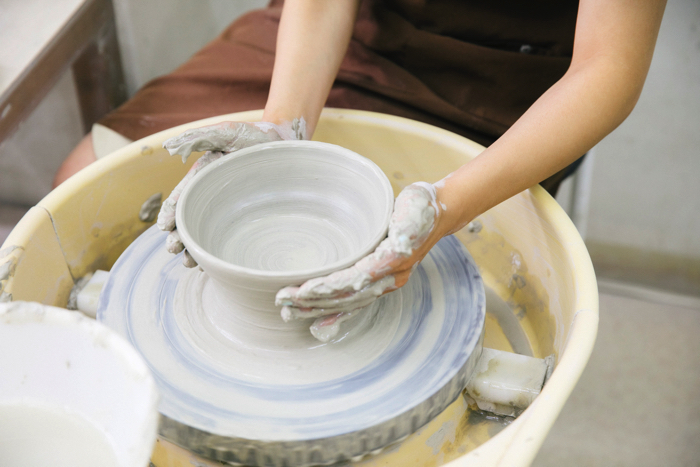
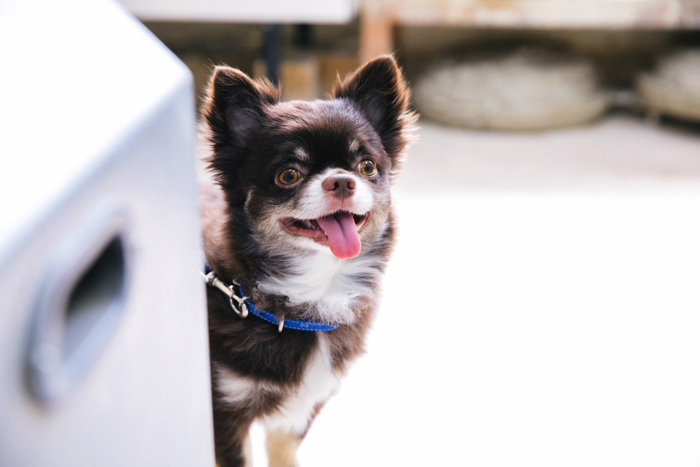
Mozuku sat right beside Yuna, quiet and curious.
“Is it my turn yet?”
He seemed itching to have a go at making something himself too.
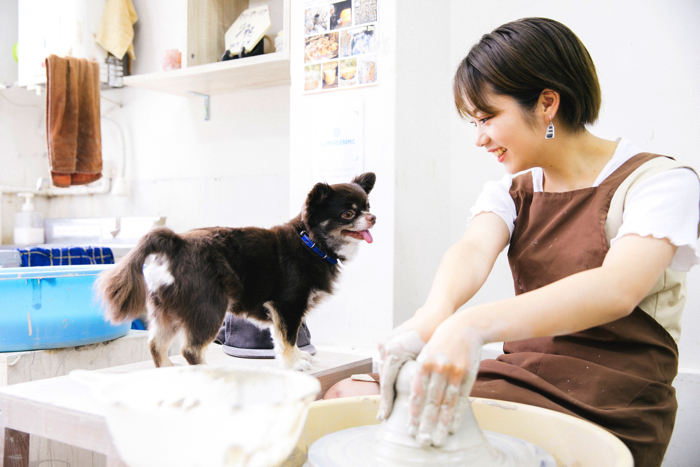
He watched over Yuna’s work from atop the table.
“I wanna try spinning the wheel too!”
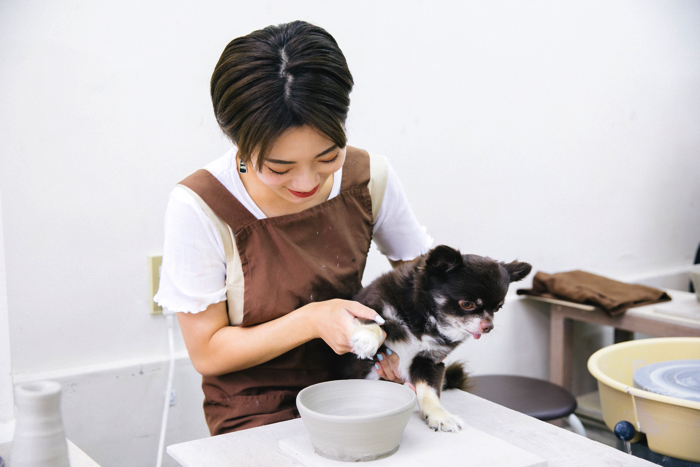
Mozuku in fact had the most important job of all. Yuna popped a wooden mould onto his paw and stamped a paw print into thebottom of the bowl.
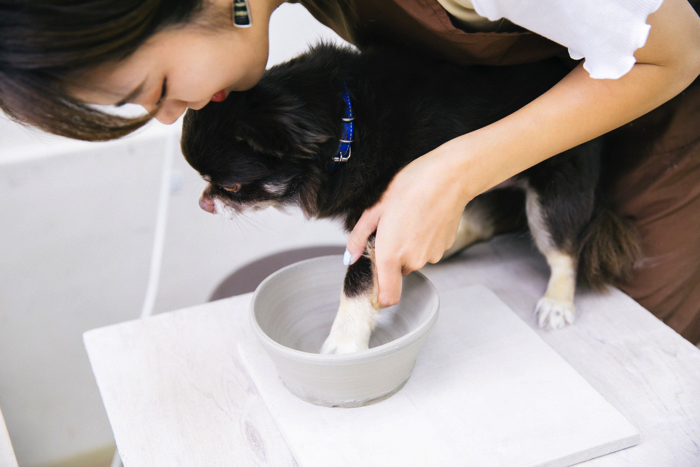
“There we go!” said Yuna
Mozuku mustered all of his strength to make his mark, his facial expression unusually serious as he carried out his big task.
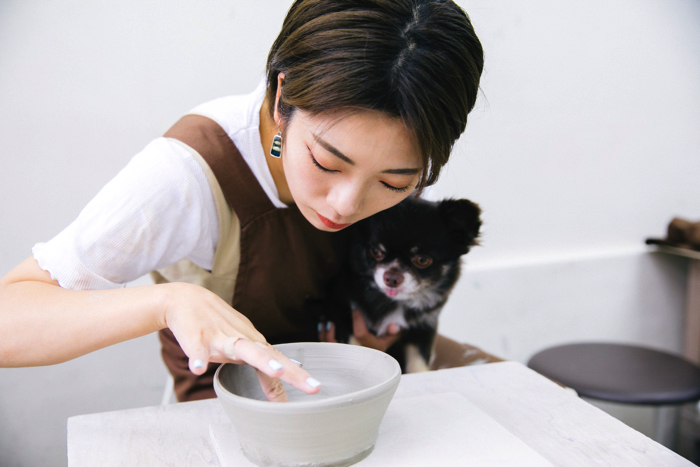
Time to check if the print was done properly!
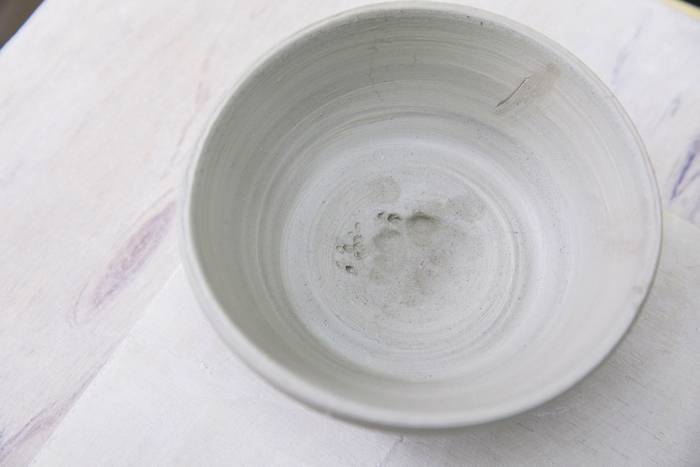
Here’s the final product―Mozuku did a great job!
Their teamwork paid off as they were able to create a really cute dog bowl. The tiny footprint is packed with pet love. The art school actually sells a lot of different cute and stylish pet items but the owner making their own makes it unique―the only one in the world.
If that love is able to get through to your pup, the food they eat from the bowl is sure to be even more delicious.
Thanks for your help, Mozuku.
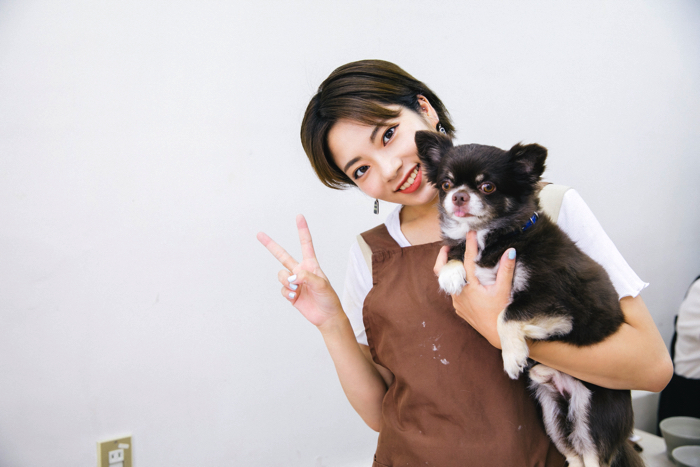
“I can’t wait to fire it!” Yuna’s excitement was peak from start to finish. She was very satisfied after the class finished.
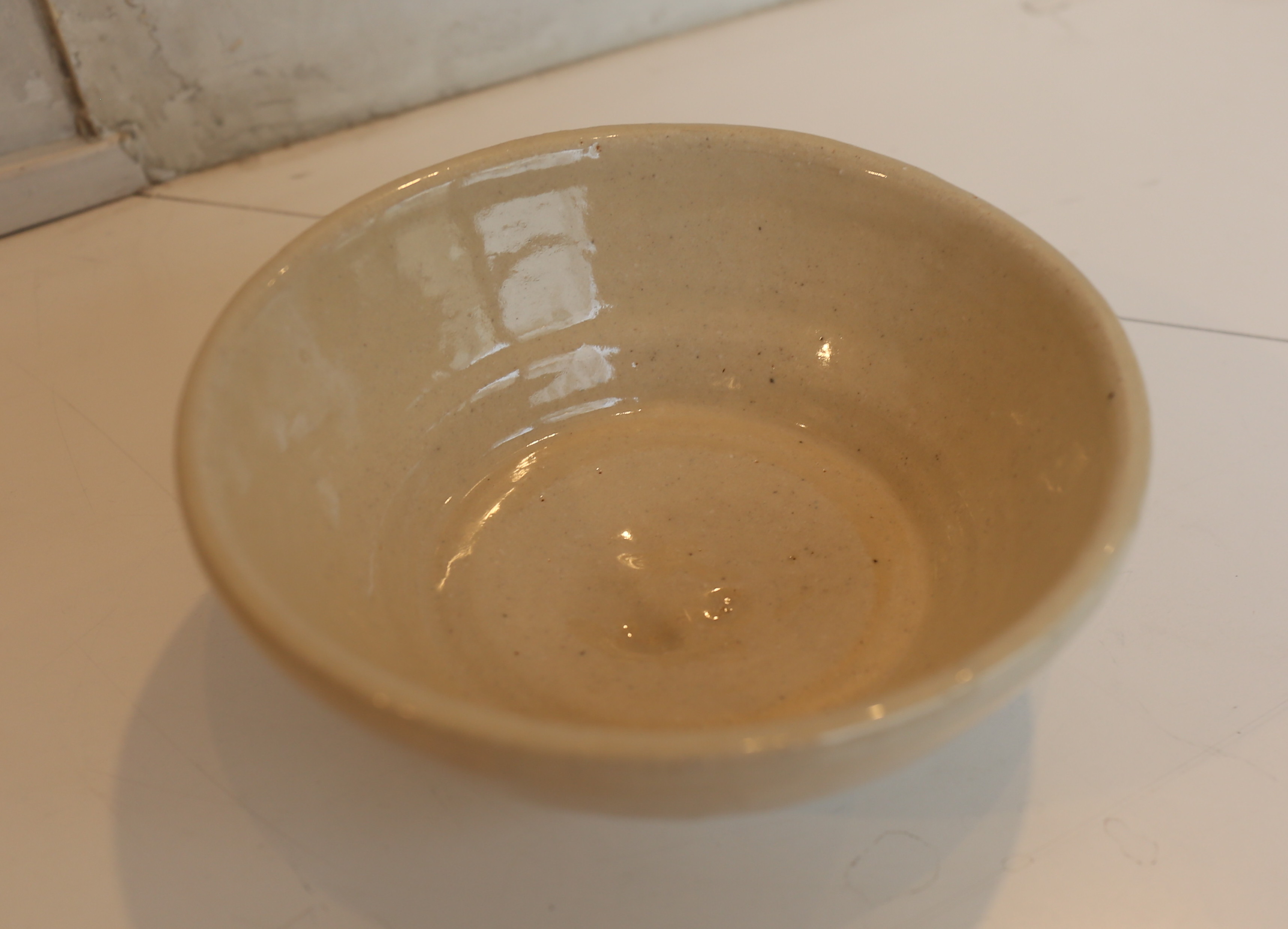
After two weeks of waiting, the bowl was completely finished.
Why not try creating something unique special for your own pet―together with them?
Model: Yuna Yabe/Mozuku @yunaaay1030
Text: Ai Watanabe
Photographer: Kayo Sekiguchi
Translator: Joshua Kitosi-Isanga
Information
Uzumako Ceramic Art School
Address: Sekisui House Floor 1F, 3-29-11 Shiba, Minato Ward, TokyoBusiness Hours: 10:00-19:00
Access: https://www.uzumakotougei.com/en/access.html
TEL: 03-6809-6363
Official Website: https://www.uzumakotougei.com/en/index.html
*The course Yuna took with Mozuku was the “Pet Ceramics Plan” where you can make 2-4 ceramic items and fire them. For your first try the staff will carve and glaze the final product to completion. This can be picked up one to one-and-a-half months after your course for ¥4,500. Please check the website for more details.
*Obedient dogs permitted. Please note that there are other participants so dogs who bark a lot or cannot relax are not permitted.
TALENT PROFILE
Yuna Yabe
Yuna Yabe won the grand prix prize at the “Zipper×ASOBISYSTEM Model Auditions” at the age of 15. She is an expert not only in fashion but make-up and video editing too. She’s an influential figure to the people in her generation. Recently, her work has expanded greatly, such as appearing in music videos. Her activity continues to grow and looks to be very promising indeed.
-
Tokyo Stroll: Walking Through Akasaka Palace, a European-Style Splendor
Akasaka Palace―a building that has welcomed emperors, presidents and prime ministers across the world into its architectural wonders. While it is mainly used for official purposes, did you know that it also offers a public viewing, one that doesn’t hinder on business affairs?
The palace is considered a national treasure of Japan. I paid a visit to this gorgeous edifice that looks just like a European-style palace. Photography is strictly forbidden when visiting, but I was able to receive special permission to cover the inner secrets of this exclusive wonder.
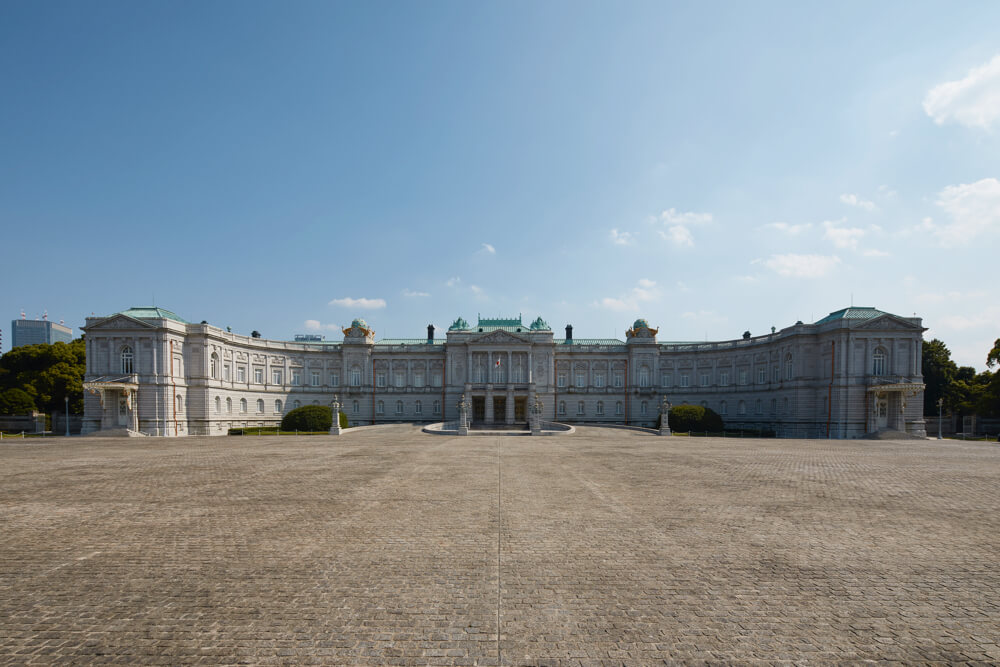
Akasaka Palace is open throughout the year. There is a daytime reception that lets you enter without having to book a spot in advance (though you’ll have to book if you want to visit the Japanese Style Annex). Visitation is restricted when international state officials are present, so when planning your trip be sure to check the palace’s schedule on the official website. Visitation through the daytime reception begins at the West Gate.
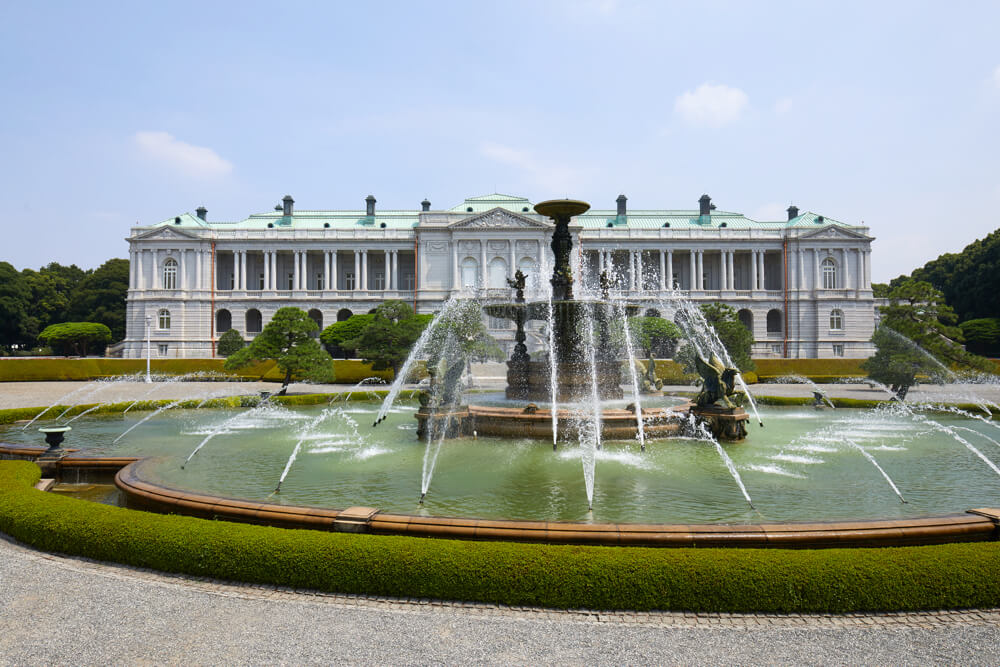
Originally built in 1909 as the Imperial Palace for the Crown Prince, the building is the only example of neo-Baroque architecture in Japan. It was built by Japanese imperial court architect Katayama Tōkuma. When planning the design for the building, he referenced various palaces across Europe which is why people liken it to Palace of Versailles in France.
Hagoromo no Ma – A reception hall for visitation welcomings
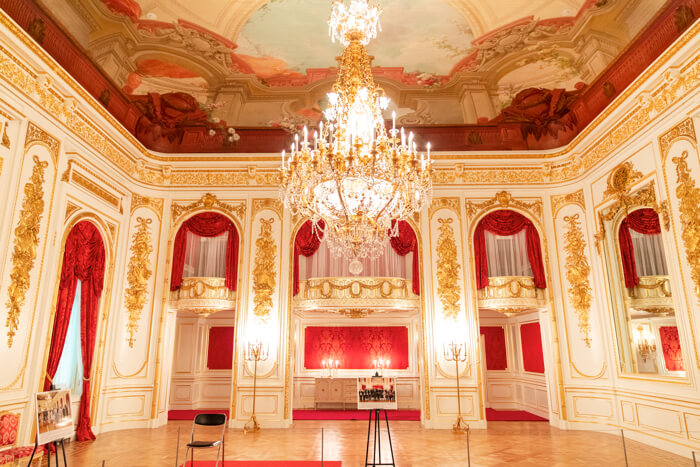
The first room you come to on the public viewing is “Hagoromo no Ma.” It was originally called a ball room which is why it houses orchestra boxes. Aperitifs dance around the room for invitees who may be there for send-offs, dinner parties or even musical performances.
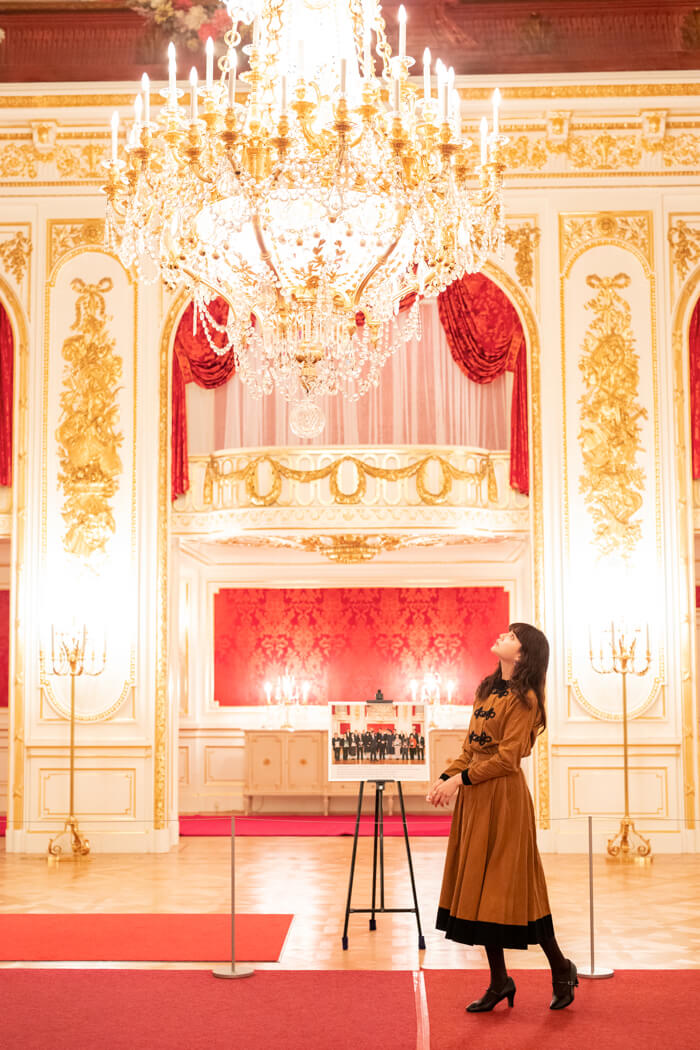
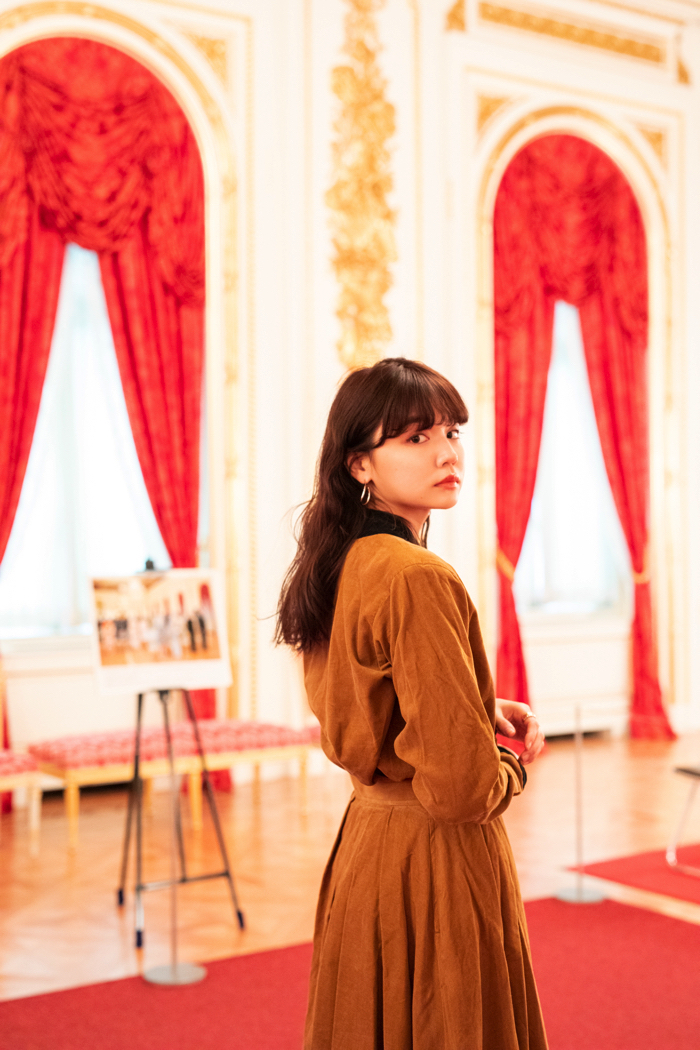
Overhead is a gorgeous chandelier which is made up of almost 7,000 separate parts, most of which is crystal. It is the biggest chandelier in the entire palace. The inner part of the mezzanine floor, which looks like a balcony, is used as an orchestra box when the room is used for orchestral concerts.
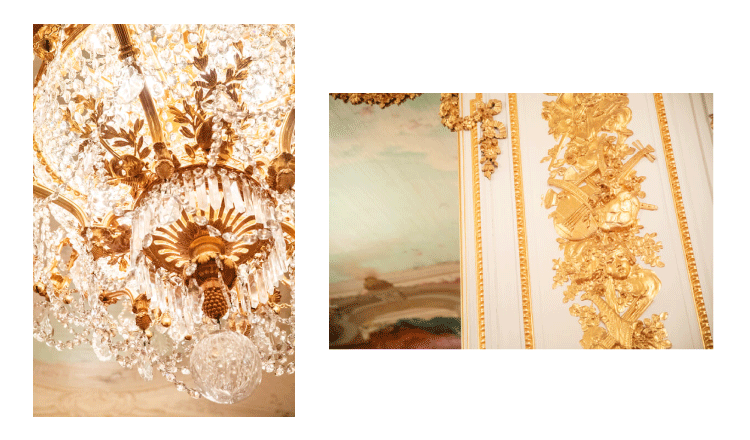
The intricate design of the chandelier includes masks inspired by a ball while the walls too are littered with relevant motifs such as instruments. The whole room is decorated in all things musical.
Asahi no Ma – The most high-class room of the palace
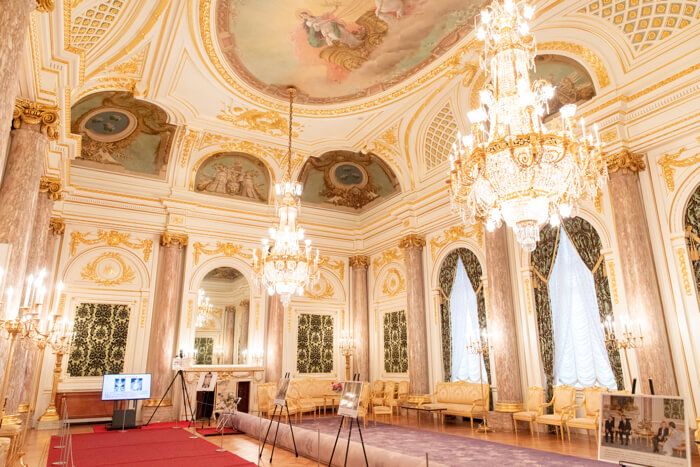
The next room you step into is “Asahi no Ma” which is used for courtesy calls of officials and important people as well as summit meetings. It is the most high-class room in all of Akasaka Palace and is where the state guests say their goodbyes to the Emperor and Empress. The room began reconstruction two years ago and reopened in April this year.
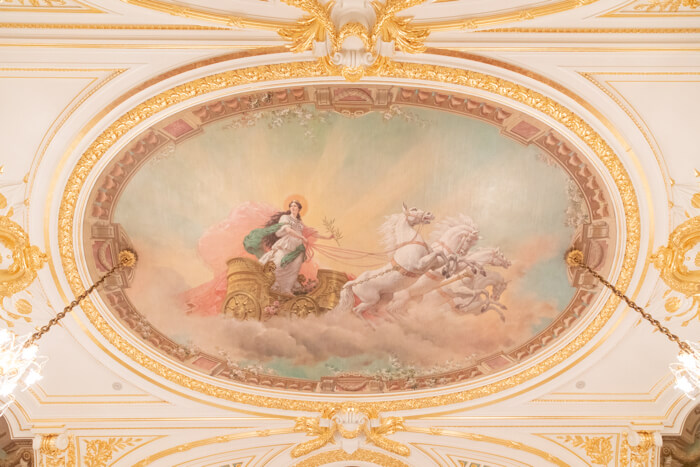
The room gets its name Asahi (“morning sun”) from the painting of Aurora, the Roman Goddess of dawn, that overlooks the room.
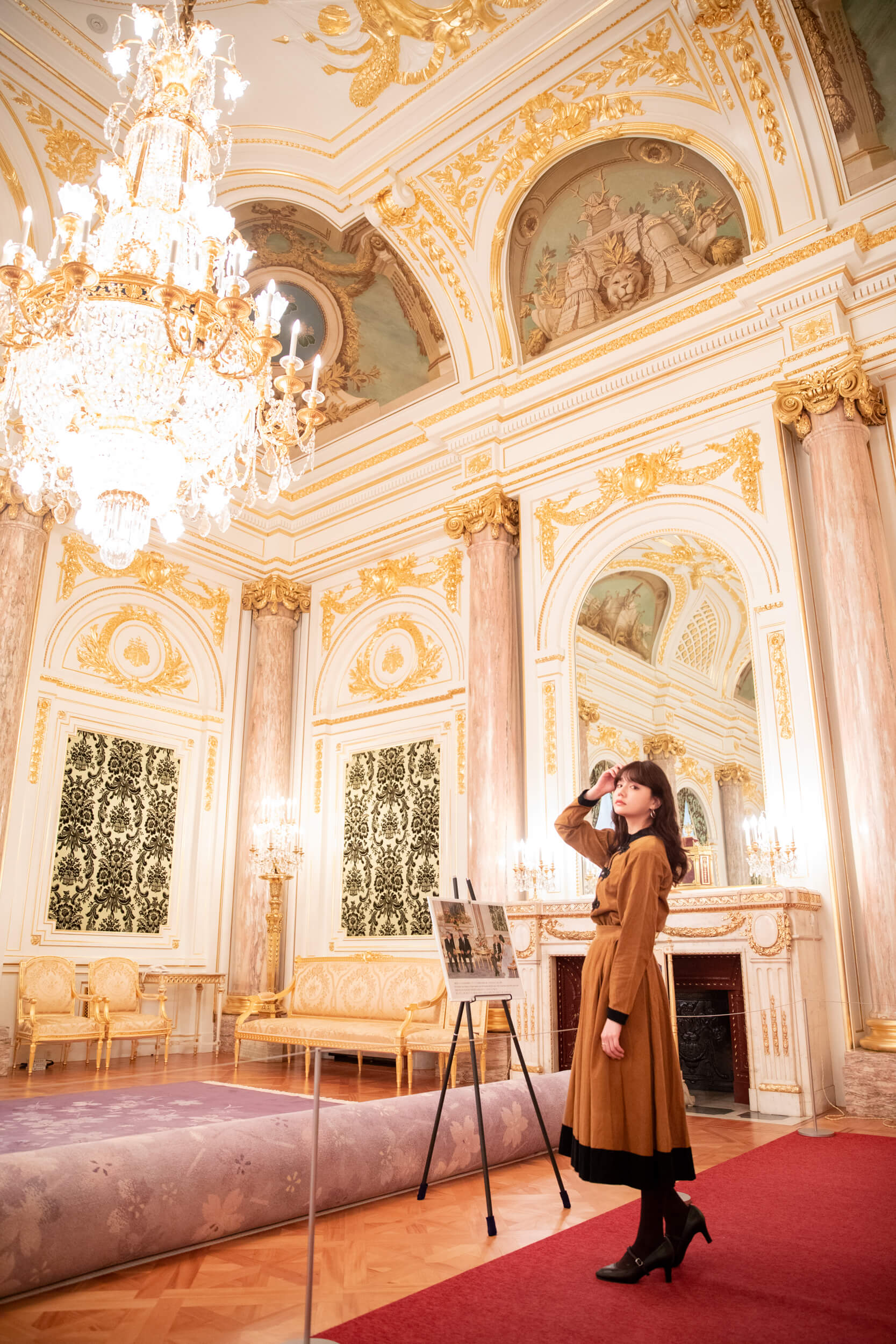
It is said that in the Meiji Period, when the palace was built, people painted pictures of helmets to symbolize the army and boats to symbolize the navy as the country declared the political measure known as Fukoku kyōhei, which meant to “Enrich the Country, Strengthen the Armed Forces.”
Shoumen Genkan/Large Hall – Welcoming guests of honour
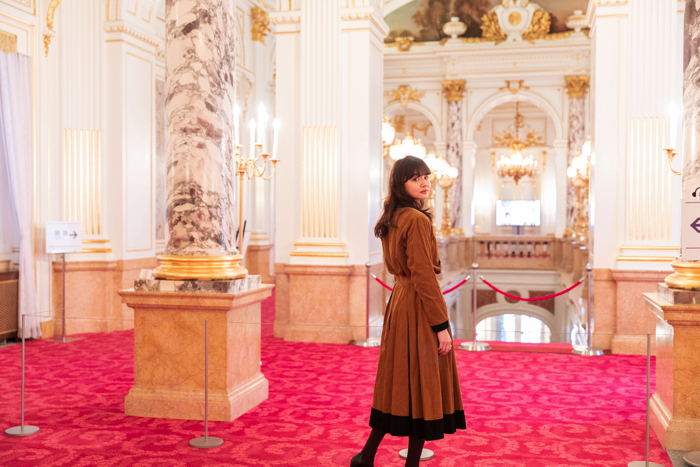
The “Shoumen Genkan,” or front entrance is where international guests of honour are welcomed. When visiting during public opening hours you don’t enter from this entrance but you are allowed inside. The large hall, which is located up the stairs from the hall that continues through the entrance room, has a striking and vivid deep crimson carpet. Together with the eight towering marble pillars, this hall makes for an overwhelming viewing. The room directly opposite down the stairs is Asahi no Ma.
Sairan no Ma – Where treaties are signed
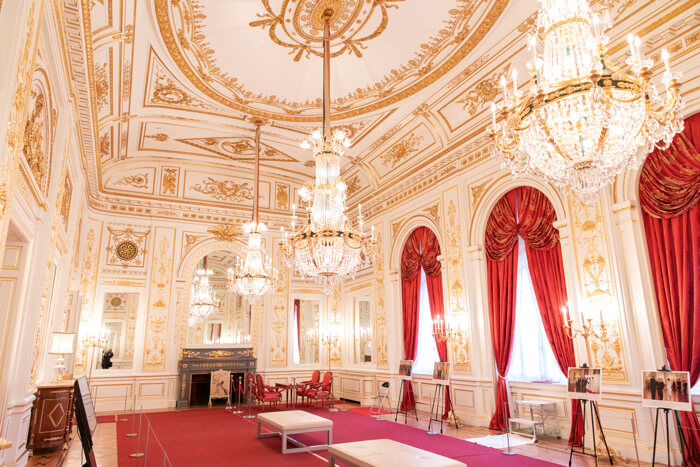
The next most high-class room from Asahi no Ma is “Sairan no Ma” which is primarily used for signing ceremonies of treaties. When Asahi no Ma was undergoing renovations, this room was used for informal talks carried out by the emperor and prime minister with foreign rulers.
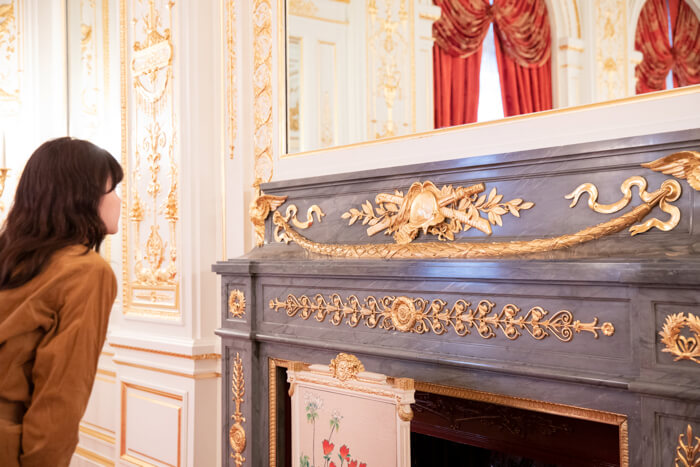
The entire room takes on the Empire style which was popular during the rule of Napoleon I. Scattered throughout the room are gold leaf designs of armour, helmets, swords and so on.
Kacho no Ma – Dinner parties with guests of honour
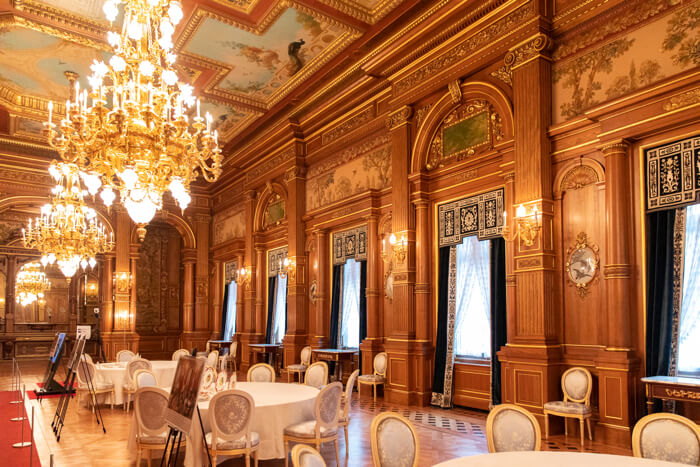
Kacho no Ma is used for dinner banquets with important official from countries around the world. The room has a more relaxed feeling from the others due to its interior wooden design. It’s also often used for press conferences so those who watch Japanese news may recognise it.
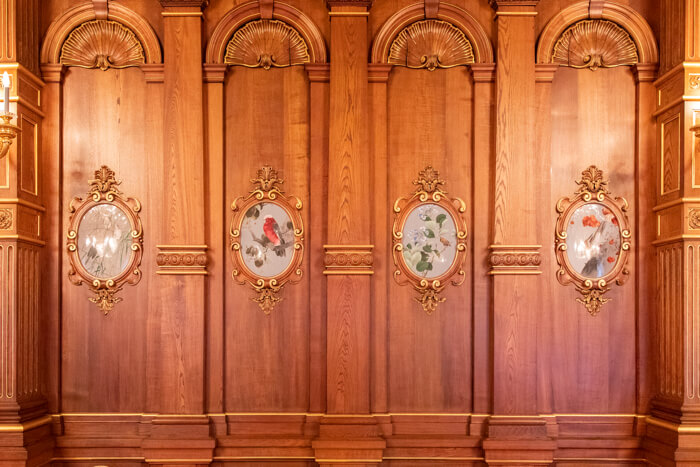
The room, with its mellow deep wooden design, houses 30 oval cloisonné medallions, depicting four seasons’ flowers and birds. The ceiling art, too, depicts images of birds and wildlife killed by hunting.
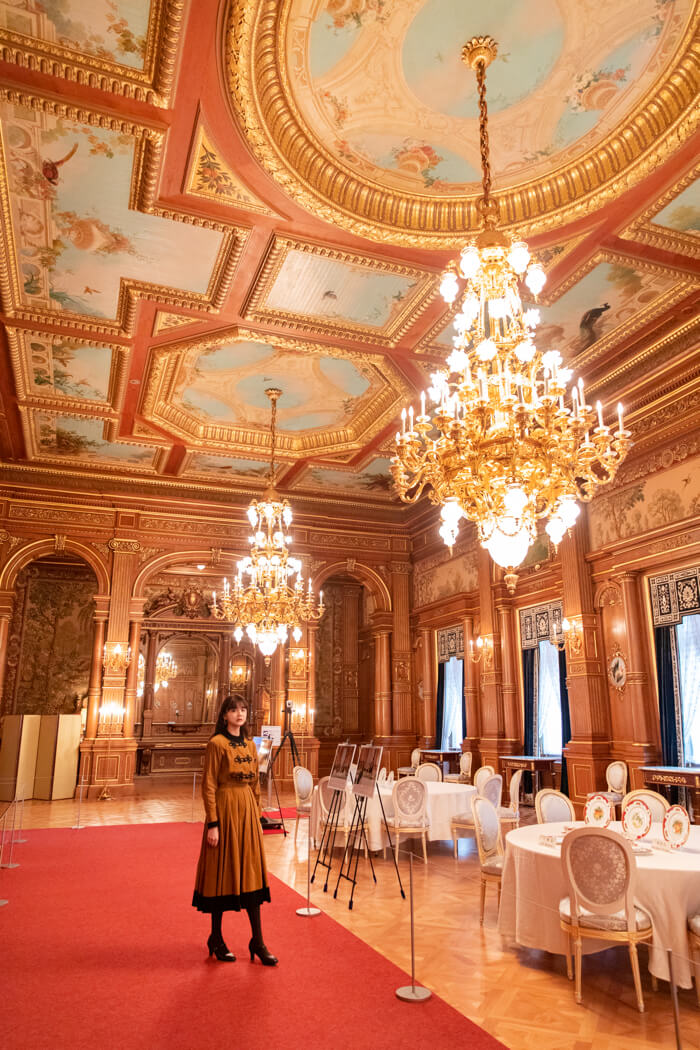
It also has the heaviest chandelier in the palace inside which is a globular speaker.
Yushintei – Japanese-style hospitality in the Japanese Style Annex
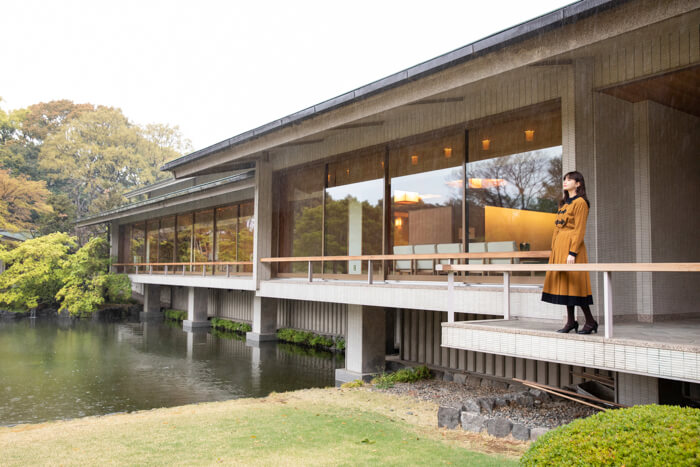
The Yushintei is located in the Japanese Style Annex on the west side of Akasaka Palace. It was built in 1974. Akasaka Palace carries out events and receptions in a western style but the Yushintei welcomes international guests of honour with Japanese-style hospitality. Those who wish to enter must book in advance. The booking comes with a tour.
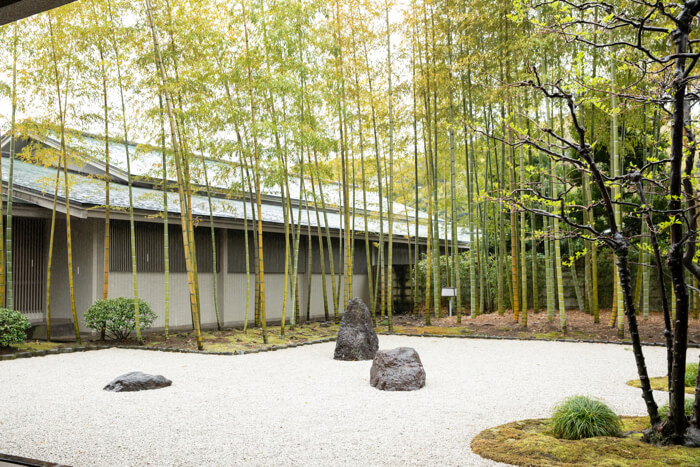
As you step through the entrance and into the inner garden through the passage, you will see moso bamboo. This area has a garden with shirakawa gravel and kibune stone from Kyoto.
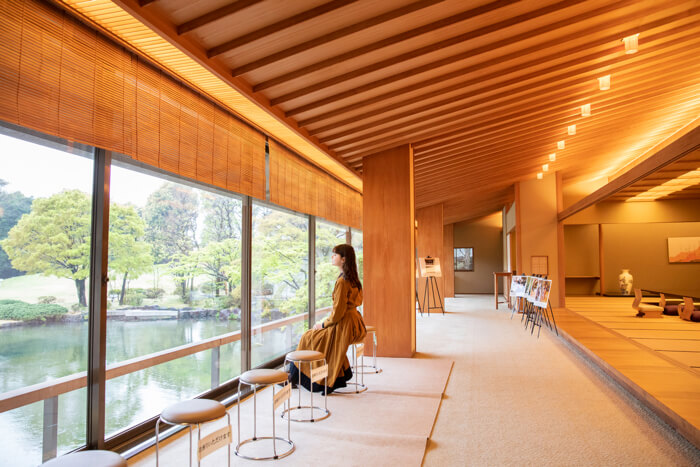
In the main Japanese-style room where guests are served Japanese food one can observe the pond from the window. You might recognise it as the place where Prime Minster Shinzo Abe and President Donald Trump fed the fish.
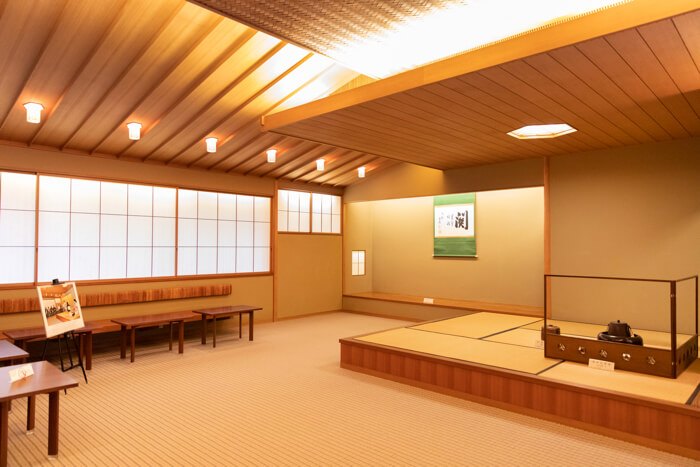
The tea room comes with chairs for foreign visitors who are unable to sit in the traditional Japanese seiza position. Tea is prepared on the upper step which is inspired by Noh theatre.
Afternoon tea in the extraordinary front garden
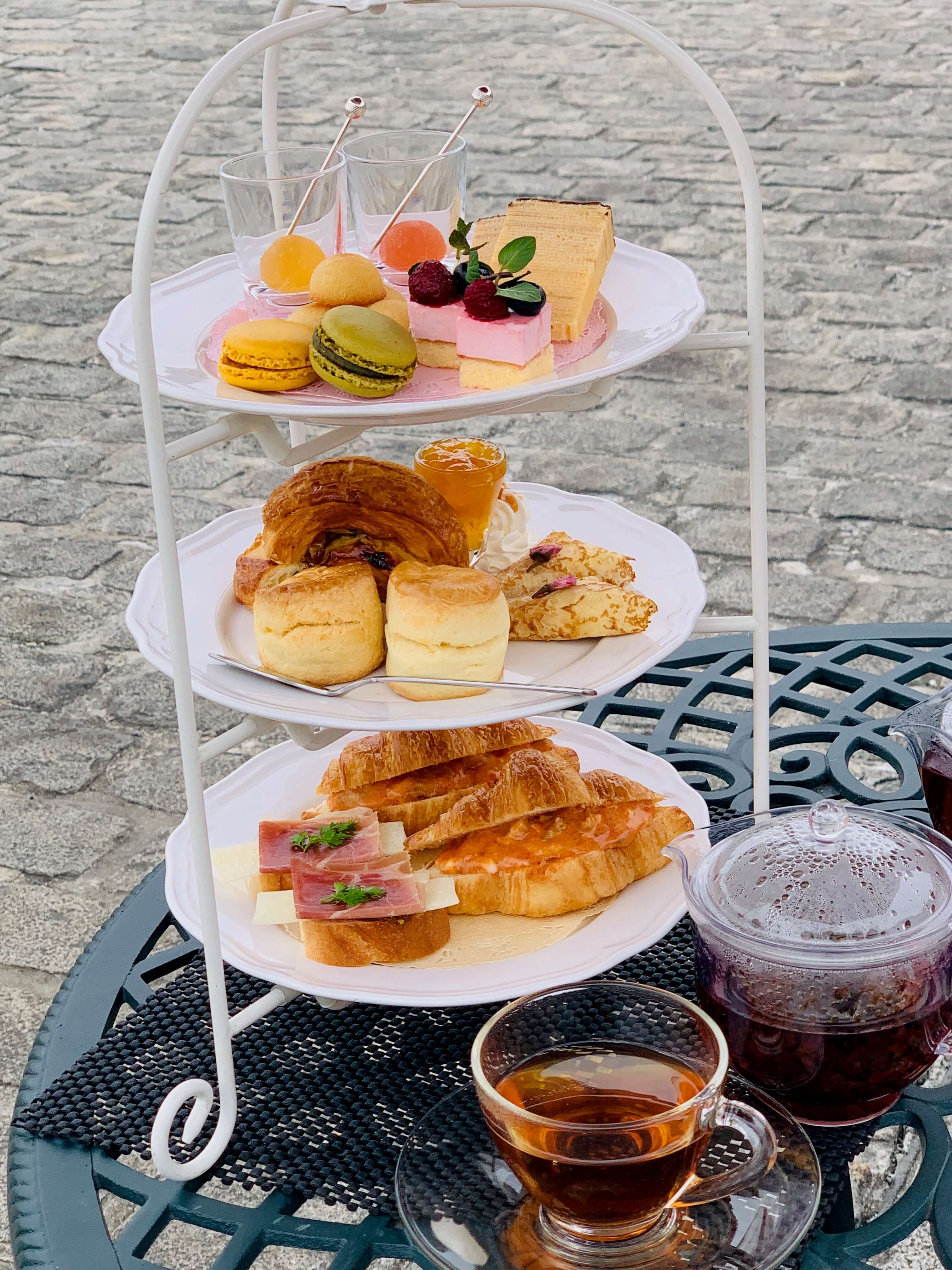
20 afternoon tea sets are prepared each day to be enjoyed in the front garden of Akasaka Palace. These cannot be reserved in advance so be sure to arrive early if you’d like to order one. As you enjoy your afternoon tea while gazing around you are filled with a gorgeous feeling you can’t experience anywhere else.
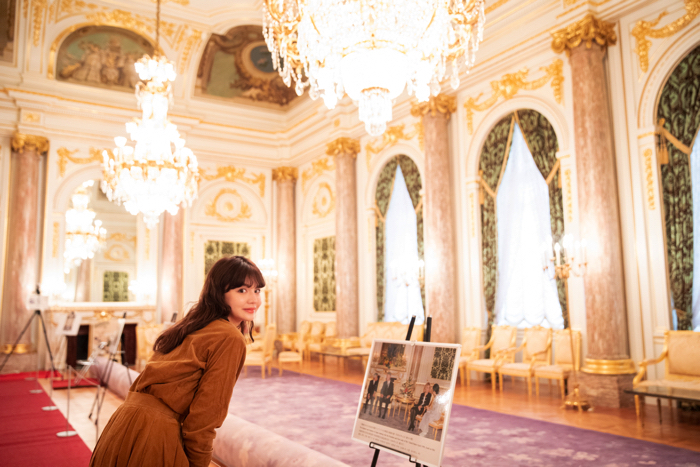
The general public viewing offers a chance to see numerous parts of the palace. We asked Rinko Murata, who’s pictured in the photos on the viewing, for her thoughts.
“With the first step you take in a gorgeous space unfolds before you. Its grand design made me feel as if I had been summoned to the palace. It was like visiting a foreign country. When you look closely there are lots of decorations that symbolize Japan. It was a fresh experience where you can feel both the Japanese spirit and culture of another country. I feel moved that Japan has such a place as beautiful as this. You all need to visit too.”
There is no requirement to book this viewing in advance, but during busy times (20+ people) those who do book online prior to visiting will be prioritized. Foreign visitors won’t miss out on anything either as they can purchase a voice guide machine for ¥200. These guides come in Japanese, English, Chinese, French and Spanish. A visit to the Japanese Style Annex Yushintei however requires booking prior to your visit. When doing so you can choose between either a Japanese or English-speaking guide. In the case of a sudden official reception, all scheduled public viewings for that day are cancelled, so be sure to check the calendar on the official website before heading there.
Model:Rinko Murata
Writer:Sayoko Ishi
Photographer:Kayo Sekiguchi
Translation: Joshua Kitosi-Isanga
Information
Akasaka Palace
Address: 2-1-1 Motoakasaka, Minato Ward, Tokyo
Access: 7-minutes on foot from Yotsuya Station via JR and Tokyo Metro
Visiting Prices
Main Building & Garden: Adult ¥1,500 / University Student ¥1,000 / High & Junior High School Student ¥500 / Elementary School Student – Free
Japanese Style Annex, Main Building & Garden: Adult ¥2,000 / University Student ¥1,500 / High & Junior High School Student ¥700 / Not open for elementary school students
Japanese Style Annex & Garden: Adult ¥1,500 / University Student ¥1,000 / High & Junior High School Student / Not open for elementary school students ¥500
Garden: Adult ¥300 / University Student & Below – Free
*The above listed prices are the general prices. Prices may change during special openings.
Official Website: https://www.geihinkan.go.jp/en/akasaka/
TALENT PROFILE
Rinko Murata
Rinko Murata works in fashion and is active on radio and TV. Sales of her first style book were so successful that it required extra printing during its first week. She also has a rapidly growing following on her social media. As well as modelling at big fashion events, she has her own column online at “She magazine,” and receives much attention for her work in the areas of culture and lifestyle.
-
Tokyo Stroll: The Café That You Want to Visit to See Someone #10 – ‘Donguriya’ in Nishi-Ogikubo
In this edition of The Café That You Want to Visit to See Someone, I visited Donguriya.
To get there I plodded along from the North Exit of JR Nishi-Ogikubo Station, and after about 3-minutes I saw it!
Various shops lined the street, but nature had almost reclaimed this single building which was wrapped in foliage. There’s no doubt that the people who pass by this way stop to take a look. Its inviting appearance elicits a peek as you’re left wondering what kind of place it is. I feel like a wonderful story is about to unfold!
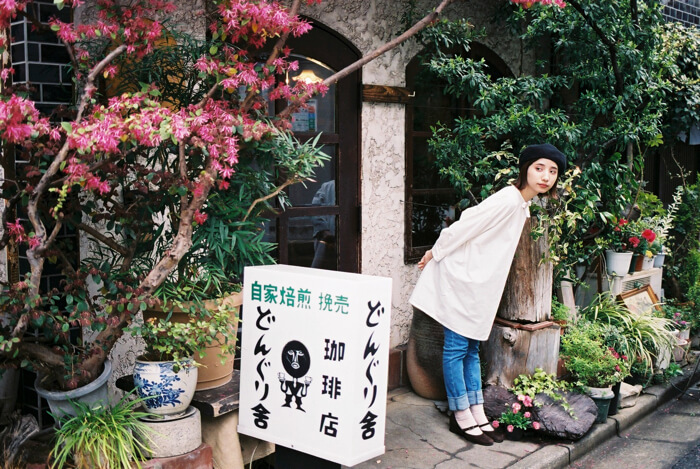
A sign sits at the front of the cafe with its mascot character waiting to greet you.
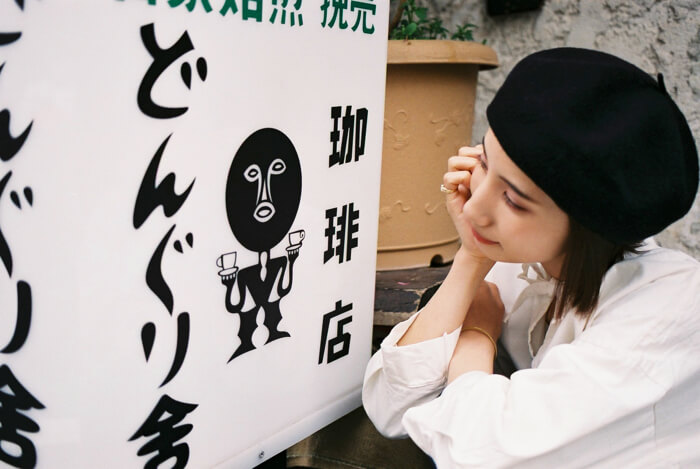
He’s cute in a way that I can’t describe♬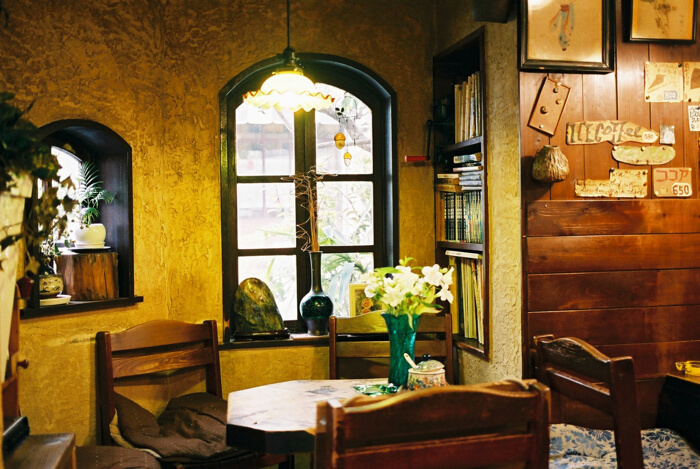
Time to head inside.
Most of the interior is made of wood, a perfect accompaniment to the cafe’s name Donguriya (“Acorn Hut”).
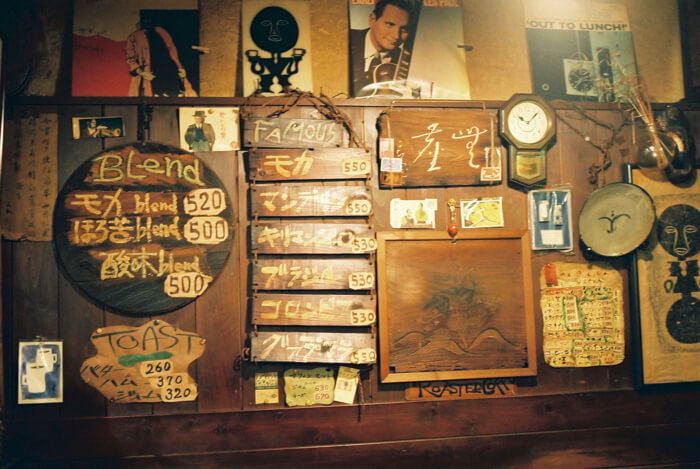
All of the signs as well as the menu on the wall are handwritten by the owner himself. It’s heartwarming just to look at♬Sipping coffee while enjoying the jazz music coming from the record player is nothing short of a luxury!
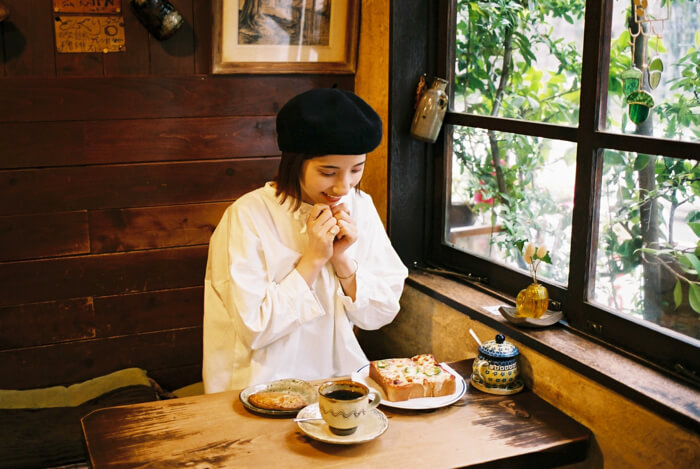
I ordered pizza toast (drink + pizza toast set is ¥800), a Donguri cookie and coffee (drink + Donguri cookie set is ¥650).
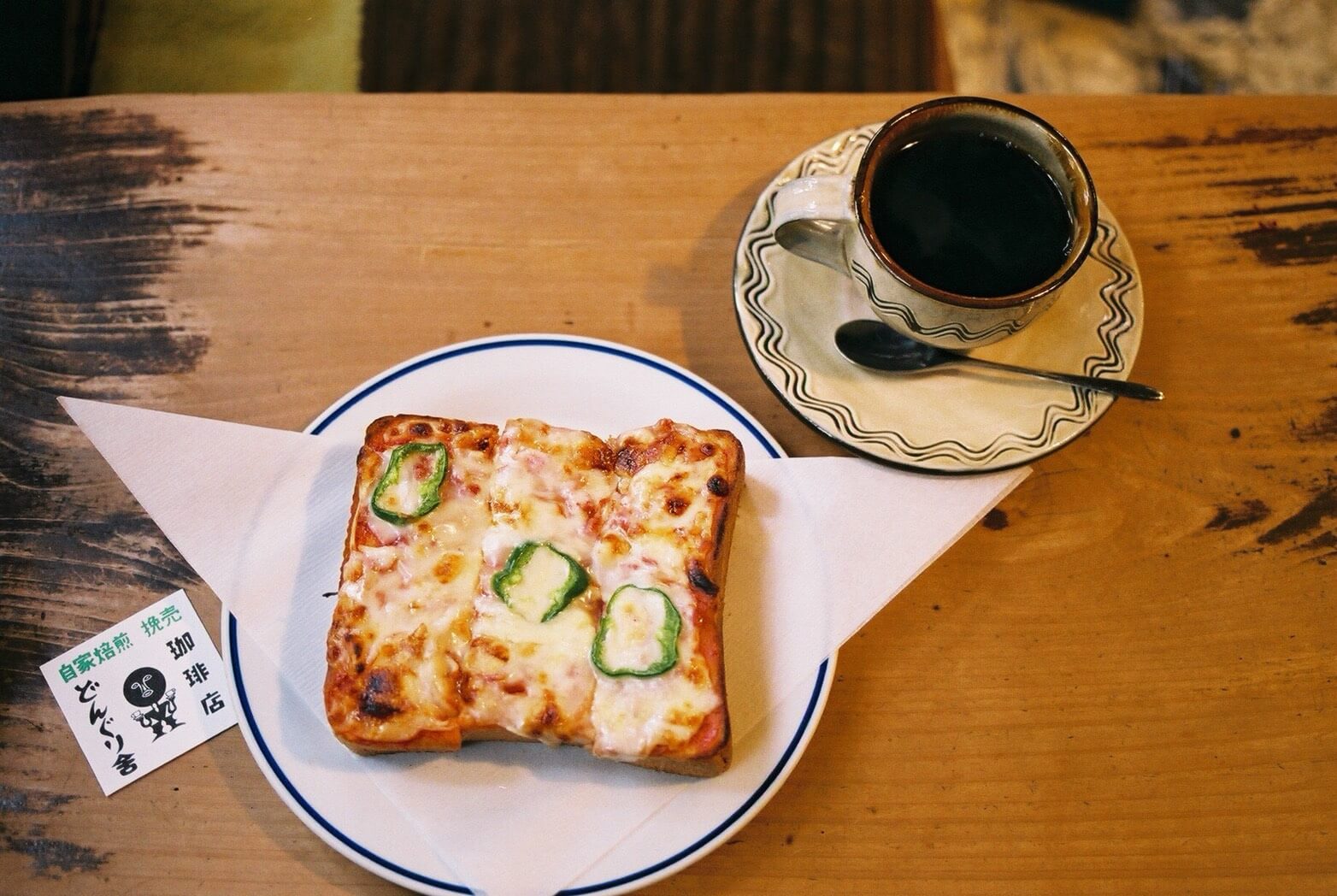
The toast is sliced thickly; the crusts are crunchy and the middle is soft. It was really tasty and had an old-fashioned taste to it.
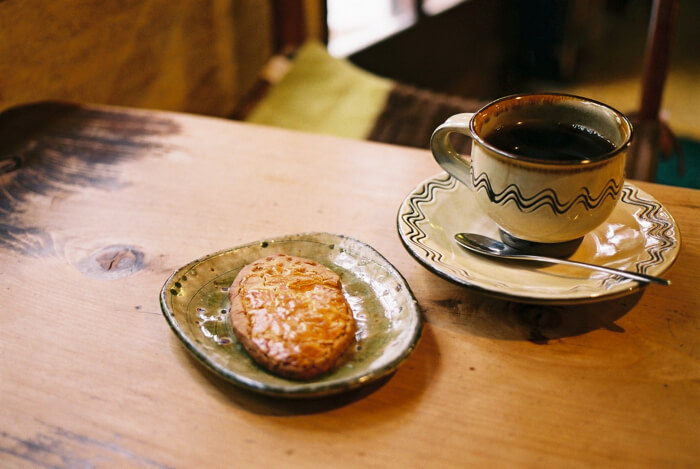
Donguri’s cookies are made by someone who has been a fan of the cafe since long ago. They have a simple sweetness and go perfectly with the coffee!Since the cookies are made by a regular who has always loved Donguri they are the perfect cookies for Donguriya! If you pay a visit then you should definitely order one.
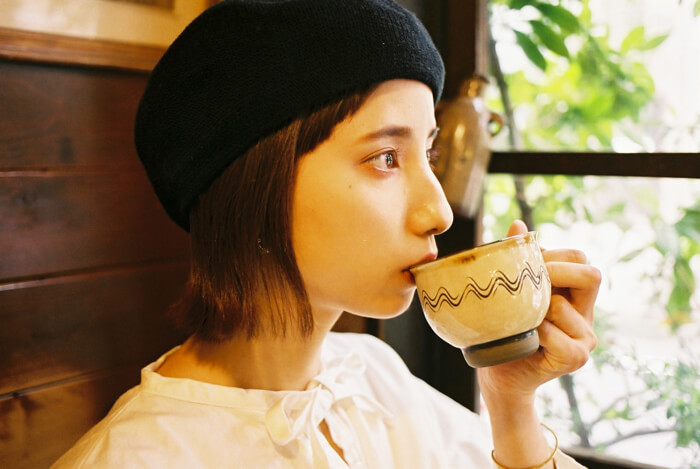
The blend coffee is full-bodied and has a rich aroma. There is a slightly bitter aftertaste too. The coffee beans are also roasted in-house! It was really tasty and easy to drink even for someone like me who doesn’t know a lot about coffee.
The owner and his older brother went to numerous cafes with their friends to try various different coffees before coming up with their own blend. It’s the real deal.
It really felt as if I had been sucked into the world of a story with the warm light filtering through the windows and illuminating the tableware and furniture.
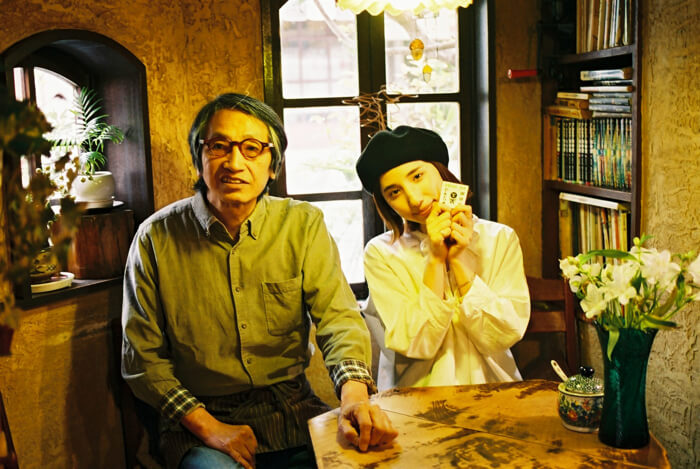
Finally, a photo with the owner himself!
He told me wonderful stories about the coffee and food at Donguriya which made me fall in love with the cafe even more.
I want to bring my friends here next time♬
Writer: Ema Tanioku
Photographer: Haruka Yamamoto
Design: Yuko Abe (ASOBISYSTEM)Translator: Joshua Kitosi-Isanga
Information
Donguriya
Address: 3-30-1 Nishiogikita, Suginami Ward, Tokyo
Business Hours: [Mon-Thur] 10:30-22:00 / [Fri-Sun] 10:30-22:30
Access: 3-minutes on foot from JR Nishi-Ogikubo StationTALENT PROFILE
Ema Tanioku
“Emaeri” is the nickname for models Ema and Eri Tanioku, who are Aomoji fashion model twins. Ema and Eri Tanioku specialise in twin fashion coordination. Over the years their fanbase has increased due to their cute looks. Ema Tanioku spreads Harajuku culture within Japan as well as overseas and works as a Harajuku Tourism Ambassador. Starting off as a model, Ema has broadened her talent range from fashion magazines to TV, and from playing the lead role in dramas to movies.
-
Tokyo Dinner: HEIJITSU HIRU DAKE’s Curry in Kōenji is Served With Japanese Stock
Rinko Murata loves all types of curry. In this edition of Tokyo Dinner, she invites the person she wants to meet up with the most to eat the curry she’s been wanting to eat the most.
This month’s notable restaurant she stopped by was HEIJITSU HIRU DAKE in Kōenji, Tokyo. Their curry portions are generous and are good for the stomach and satiety center. They serve a curry flavoured with Japanese dashi, or ‘stock.’
How do you spend your early afternoons when you have time off? Lounging around at home with quality time to yourself sounds like a good plan. Definitely appealing.
But this is a rare opportunity. How about going on a little adventure to try something you can get a kick out of because it’s midday and a weekday?
I know the perfect curry house for your hungry selves. HEIJITSU HIRU DAKE.
As the Japanese name suggests, it’s a curry that can only be eaten at lunchtime, a mysterious dish that doesn’t appear on regular days off.
I land in Kōenji, a place I love the most. Even though iKōenji is Kōenji, the closest station to the restaurant is Higashi-Kōenji Station.
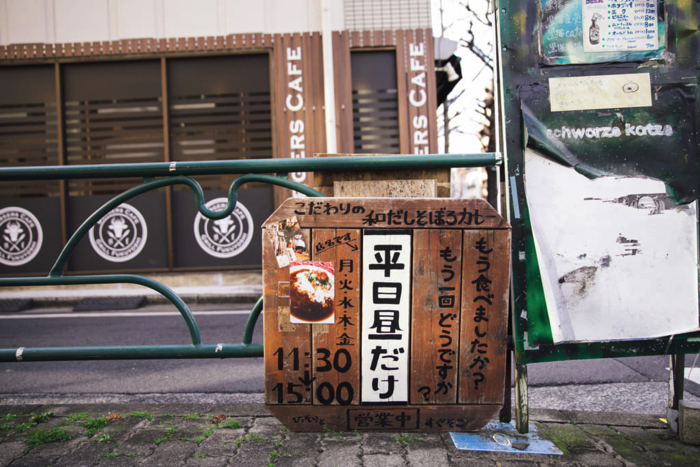
My vision is filled with all kinds of sights.
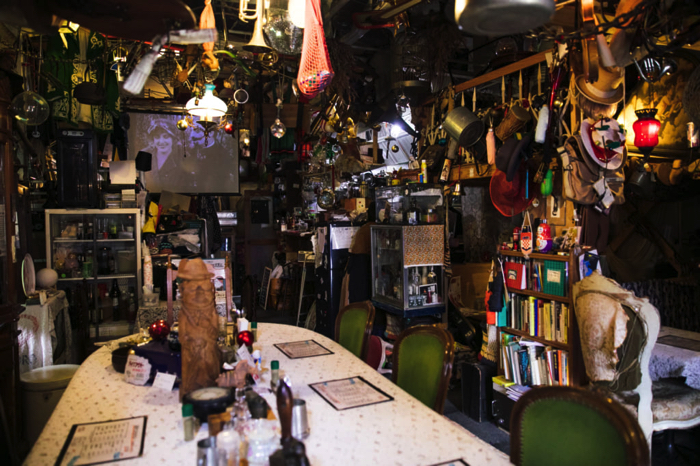
It’s like being lost in a treasure chest.
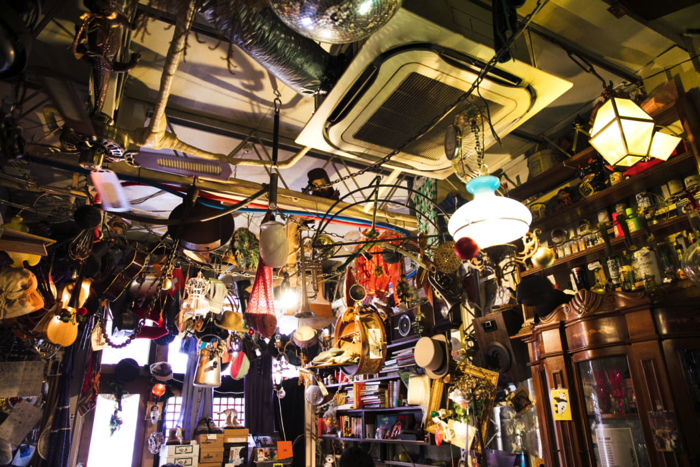
This place is actually normally a café and goes by the name Schwarze Katze. It’s open mainly on Friday night, weekends and holidays. “HEIJITSU HIRU DAKE” runs in a rented room in the café and and is open when the café is. It’s kind of luxurious to have the chance to eat my favourite food (curry!) in a place like this.
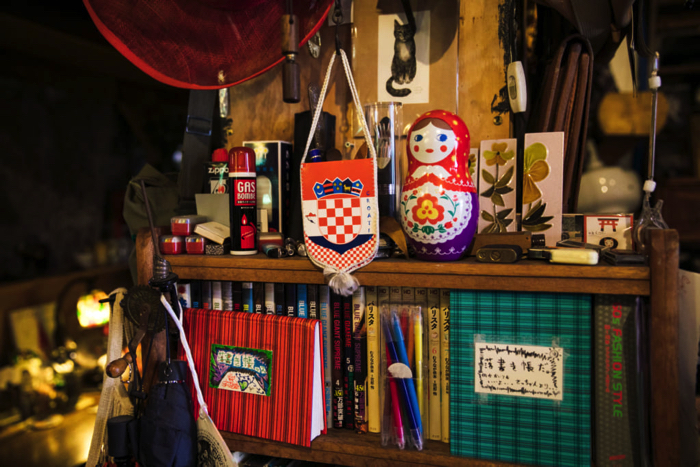
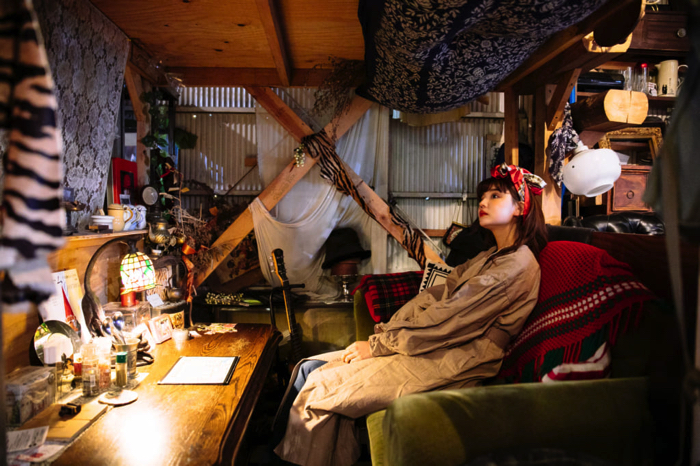
My heart desires the Wadashi Soboro Curry (¥980) that I mentioned earlier. It also comes with self-service coffee for after your meal. For toppings you can choose whatever you like. Since I was there and didn’t want to get lost on what to pick, I went for all the toppings (¥300).
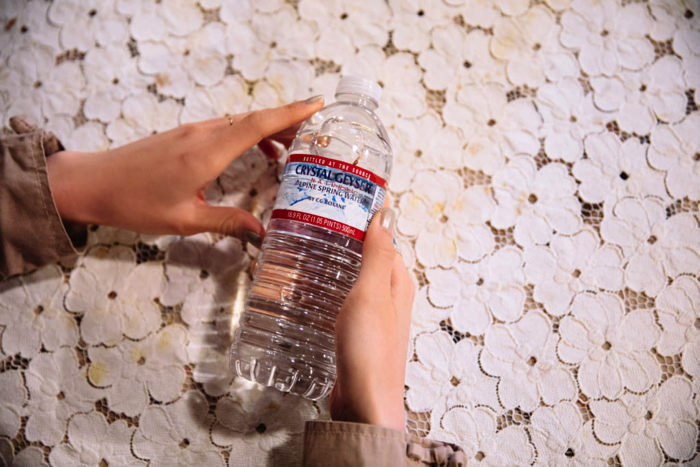
The water I ordered comes in a plastic bottle. The tables have antique displays. Everything on them was wonderful.
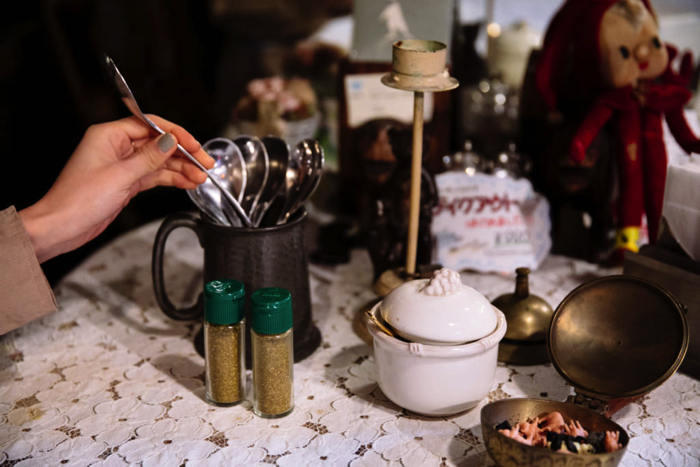
The air was clad in that rich, familiar scent of curry, a special one that I would never get to eat had I not come here.
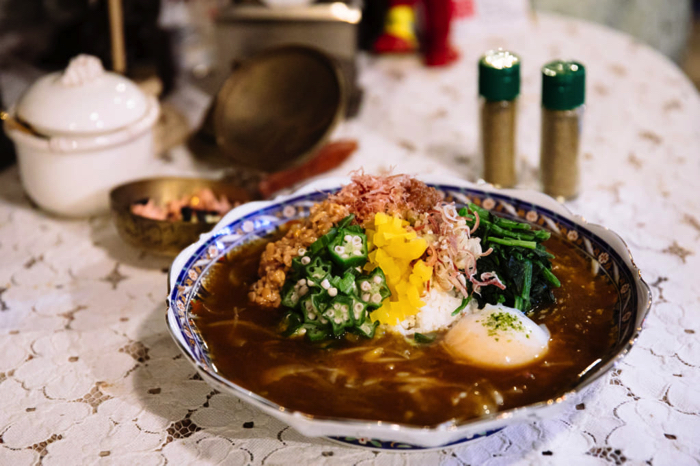
The instant I hold the curry in my mouth the delicious flavour of the dashi sparks in my mouth like fireworks. The broth has a slight thickness to it and a strong, deep flavour that fades into a soft aftertaste on the tip of your tongue. It’s not at all spicy, and the goodness of the dashi is luxurious like being escorted by a gentleman. And I can’t forget the smell.
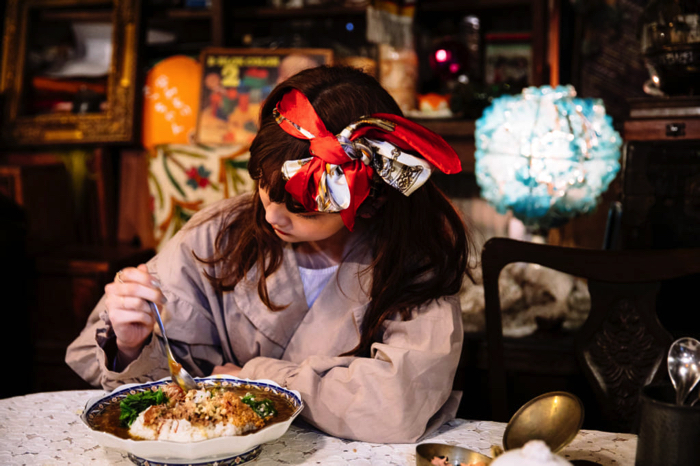
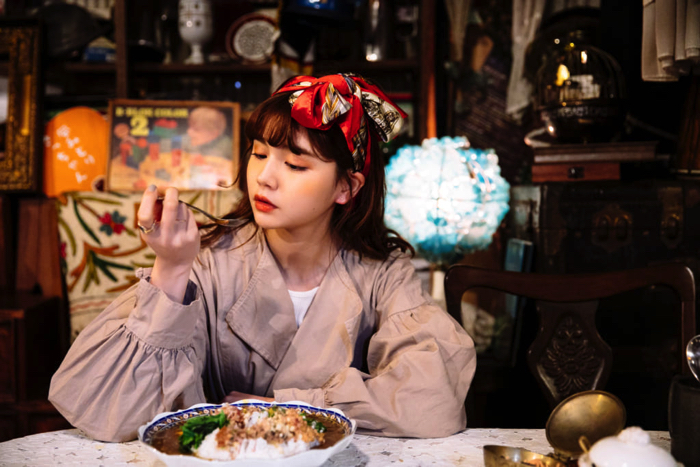
My taste buds throb at this new sensation.
Like its name suggests, this is a dish where the Japanese dashi stands out above the ingredient crowd. The restaurant owner has gathered much experience in the kitchen from traditional Japanese cuisine to sushi, ramen, yakiniku, izakaya style and so on. He encountered this place by chance, and with one look he said to himself, “I want to try doing curry.” The Wadashi Soboro Curry came about through his gained culinary experience combined with the aesthetics of the café.
To bring out the full flavour of the dashi so it isn’t drowned out by the curry spices, the owner uses two types of skipjack tuna, kombu, dark sleeper, and dried sea slug, as well as a type of soy sauce called Kaeshi. 15 more ingredients are blended together to create the spices, creating deep and delicate flavours.
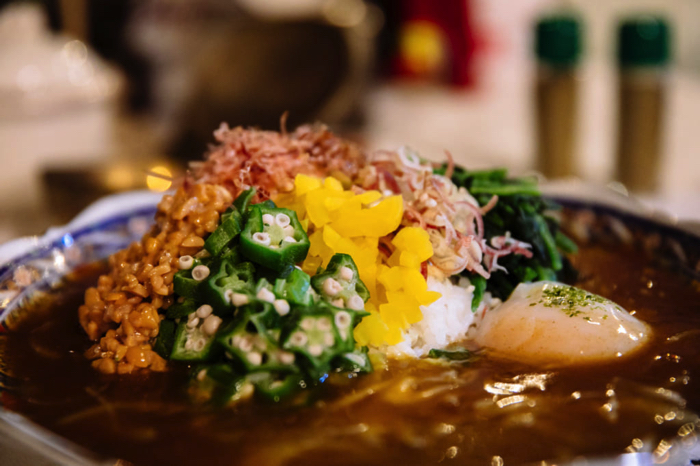
Now it’s time for a session with the mountain of ingredients I greedily asked for. It’s enshrined with classics like meat soboro, beefsteak, agedama, bonito flakes, and dried plum in addition to pickled daikon radish, crushed natto, Japanese ginger, and okra. The spinach and onsen tamago egg sit at the foot of the mountain and create a new culinary sight.
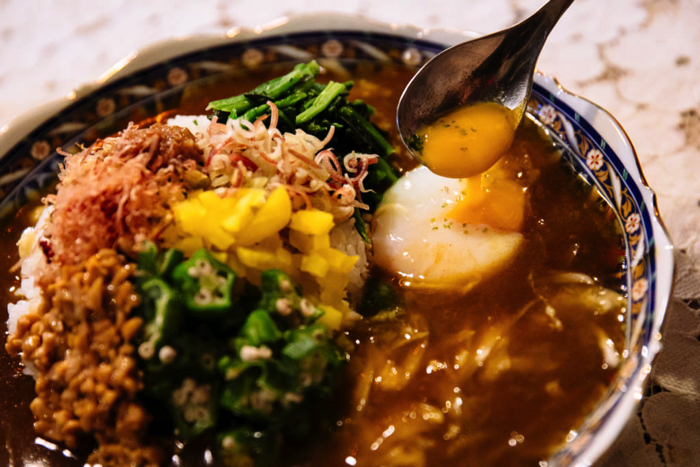
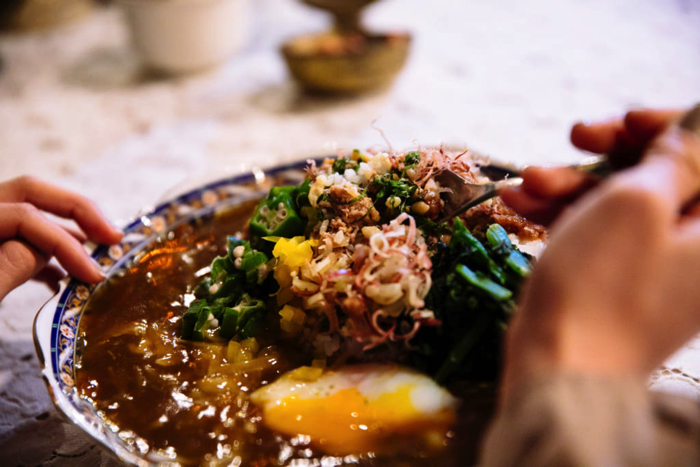
The base of the dashi is mobilized with a force of Japanese ingredients with a smell and flavour and that comes together harmoniously in your mouth. I’m spellbound by the flavours that stand out coupled with the pleasant textures of the agedama, daikon and ginger.

Hey, I must have hit every ingredient in there. All correct.
I added a sprinkle of pepper that was on the table and create yet another refreshing aromatic veil.
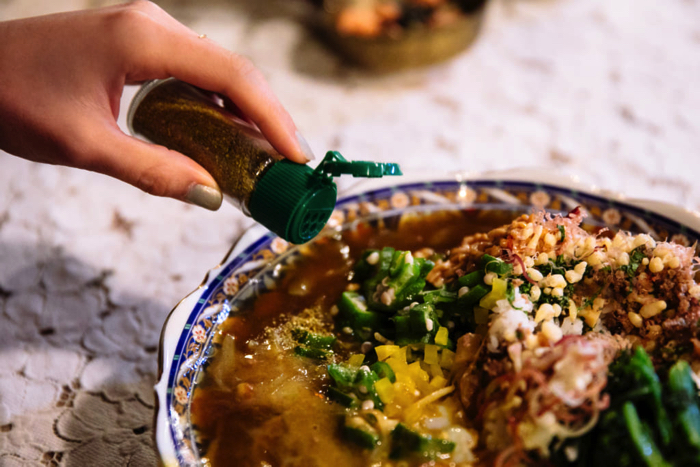
The compatibility of the pepper with the dish works so well precisely because it uses a Japanese dashi. Wadashi, or Japanese broth, is a staple of Japanese cuisine. The curry and Japanese soul carved into this dish resonates with me. It’s my first time eating it, yet I’m still filled with a sort of nostalgia―a warm embrace.
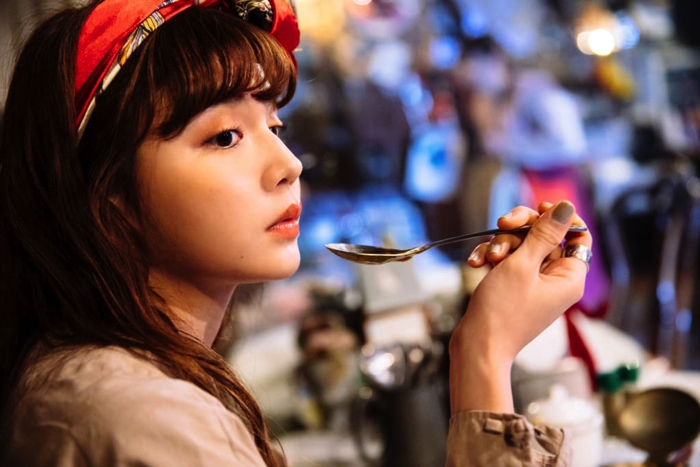
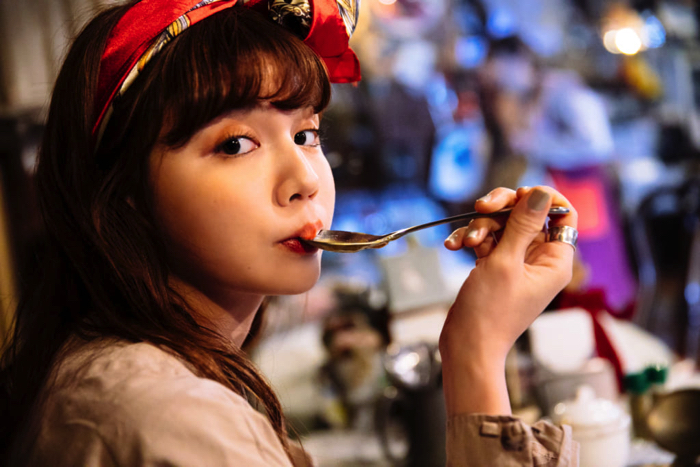
I also understand why when the shop opens, the customers in the café stand up and change with the next line of customers. The owner has a wonderful sensitivity, and has worked out a way to put his own matchless warmth into each and every bowl. I caught sight of his gentle smile as he was cooking in the kitchen. It left an impression on me.
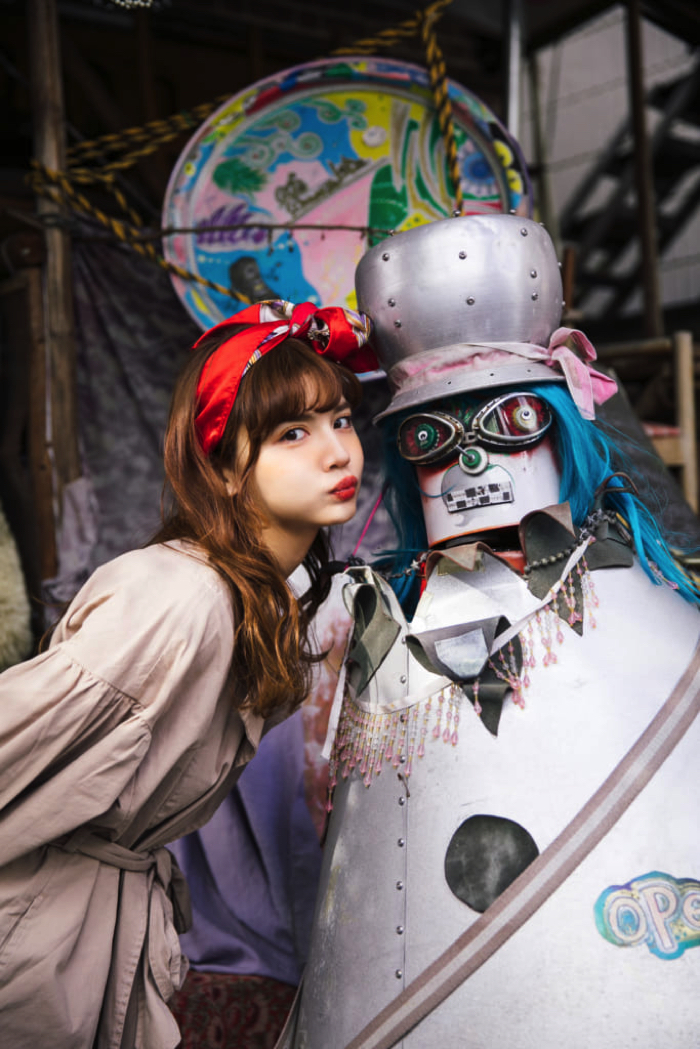
What a delicious curry to enjoy in such a wonderful place. All five of my senses have reached peak happiness. I grab my post-meal coffee and head onto the streets of Kōenji.
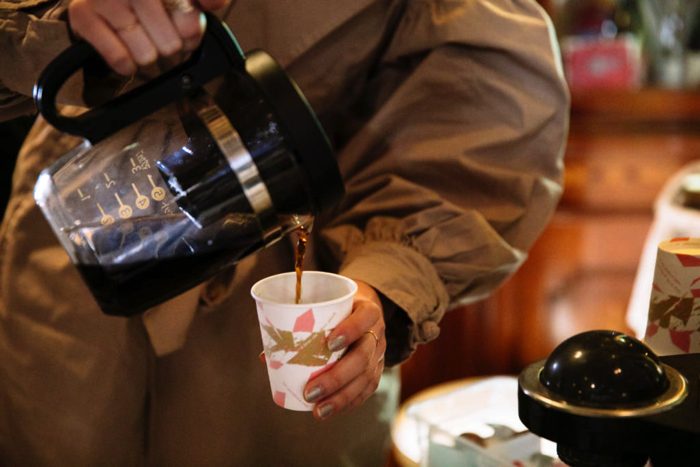
What a wonderful weekday afternoon.
Text:Rinko Murata
Photo:Kayo Sekiguchi
Edit:Miiki SugitaTranslator: Joshua Kitosi-Isanga
Information
HEIJITSU HIRU DAKE
Address: 1-21-21 Umezato, Suginami, Tokyo
Opening Hours: 11:30-15:00 (Weekdays Only)Official Twitter: @Heijitsuhirudake
-
Tokyo Stroll: The Café That You Want to Visit to See Someone #9 – ‘Cafe Ace’ in Kanda
In this edition of The Café That You Want to Visit to See Someone, I visited Cafe Ace in Kanda.
Being a cafe specialising in coffee it’s no surprise they have 40 different varieties of coffee! They even have 15 kinds of tea. Being able to pick out your favourite coffee before the morning rush every morning is really wonderful.
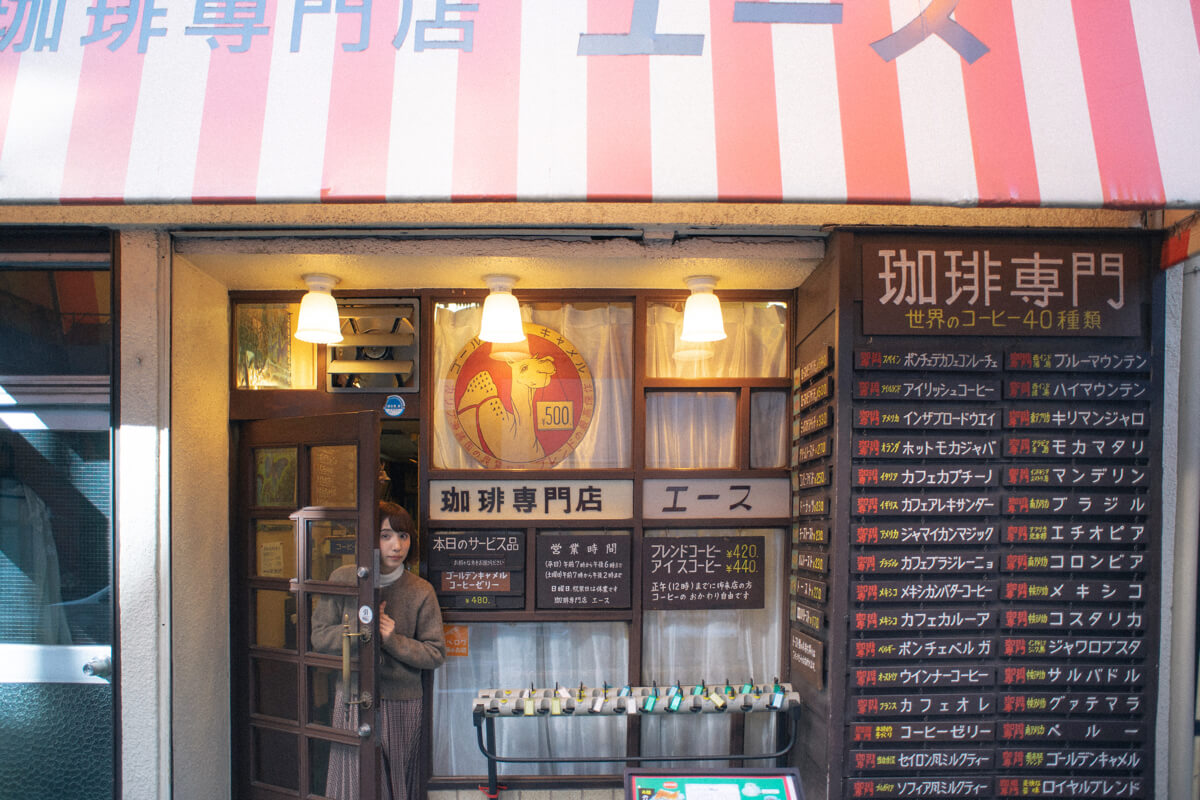
Cafe Ace is one of the places I’ve wanted to cover for a long time in this series. I was excited to get inside!
Its striped roof gives it quite a retro atmosphere. The warm colour scheme of the decor inside is that from old times – it’s very relaxed. It hasn’t changed since it opened way back when. It has continued to maintain its ways in spite of times changing. I think that’s wonderful.
The cafe carries all kinds of magazines that have been published over the years. They range from 3 to 40 years old. The owner showed me his collection as we spoke about the cafe and conveyed his sentiment for Ace. I feel I have learnt much about its history!
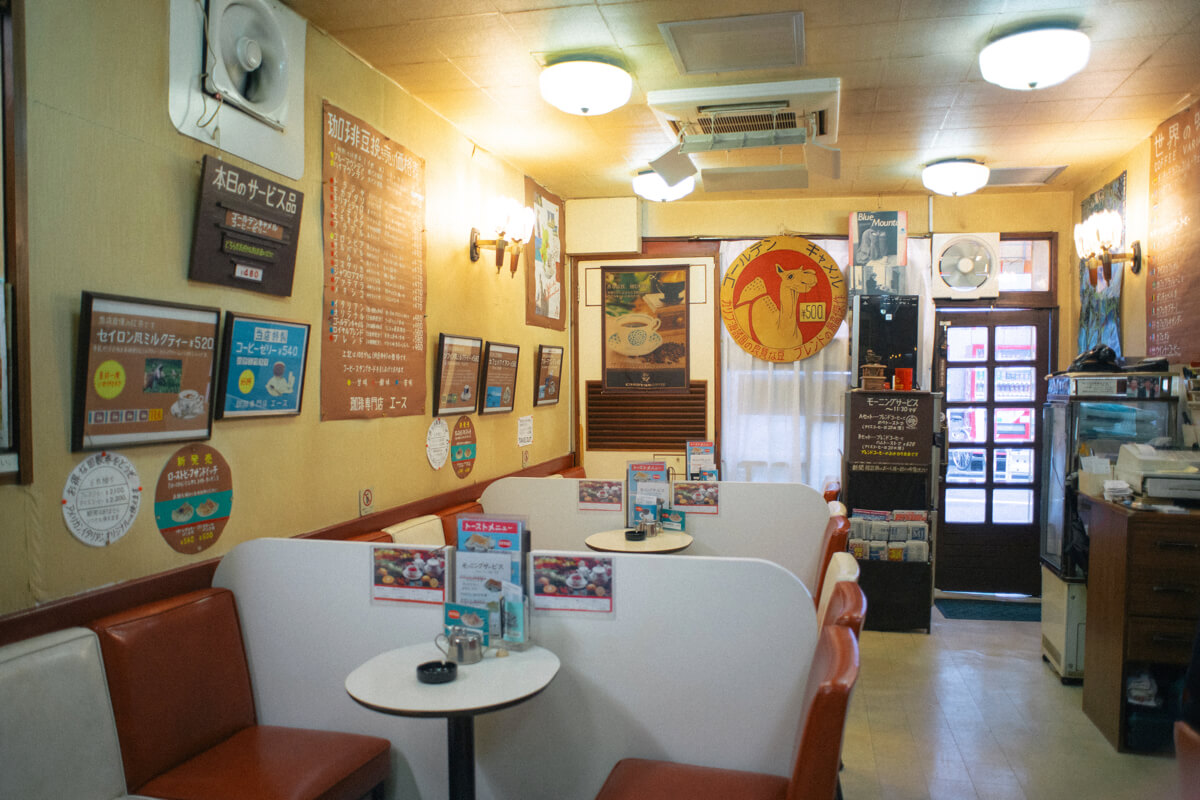
The menu plaques attached to the wall are all handwritten by the owner (he even wrote on the camel artwork above!)
Simply amazing. His handwritten work spreads across the entire wall of Ace.
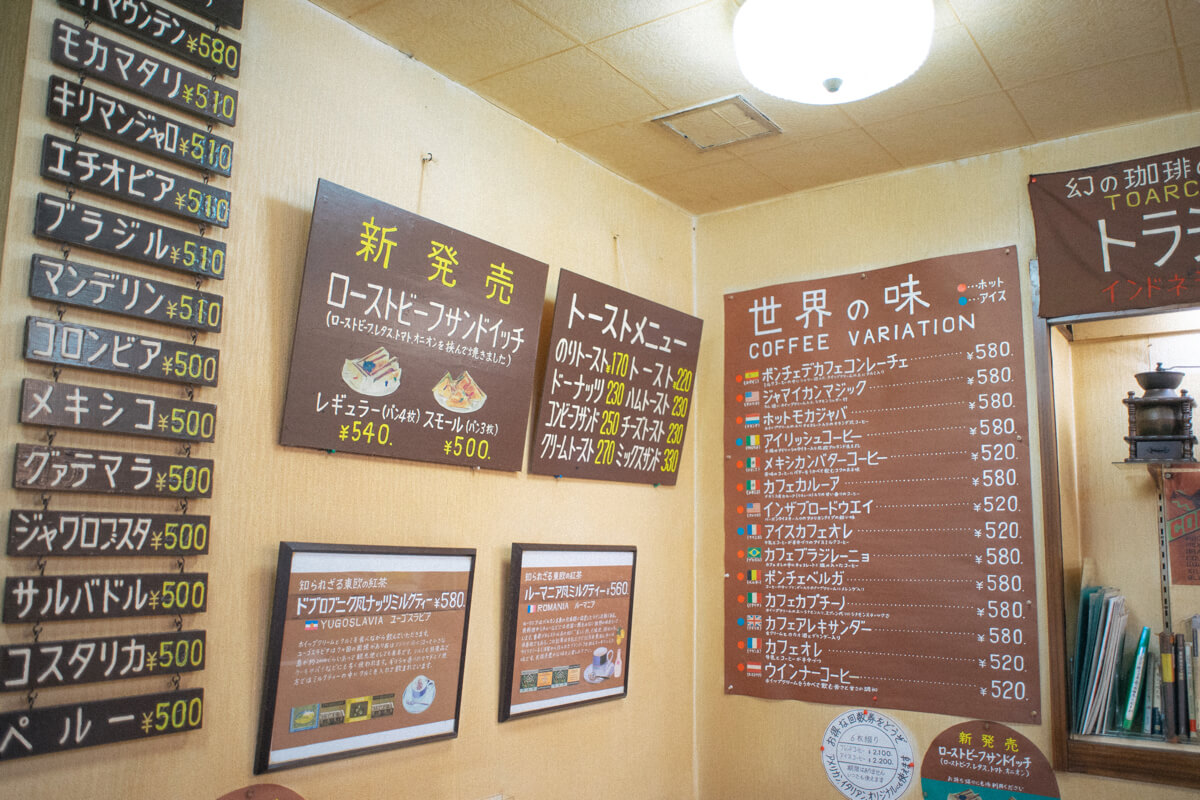
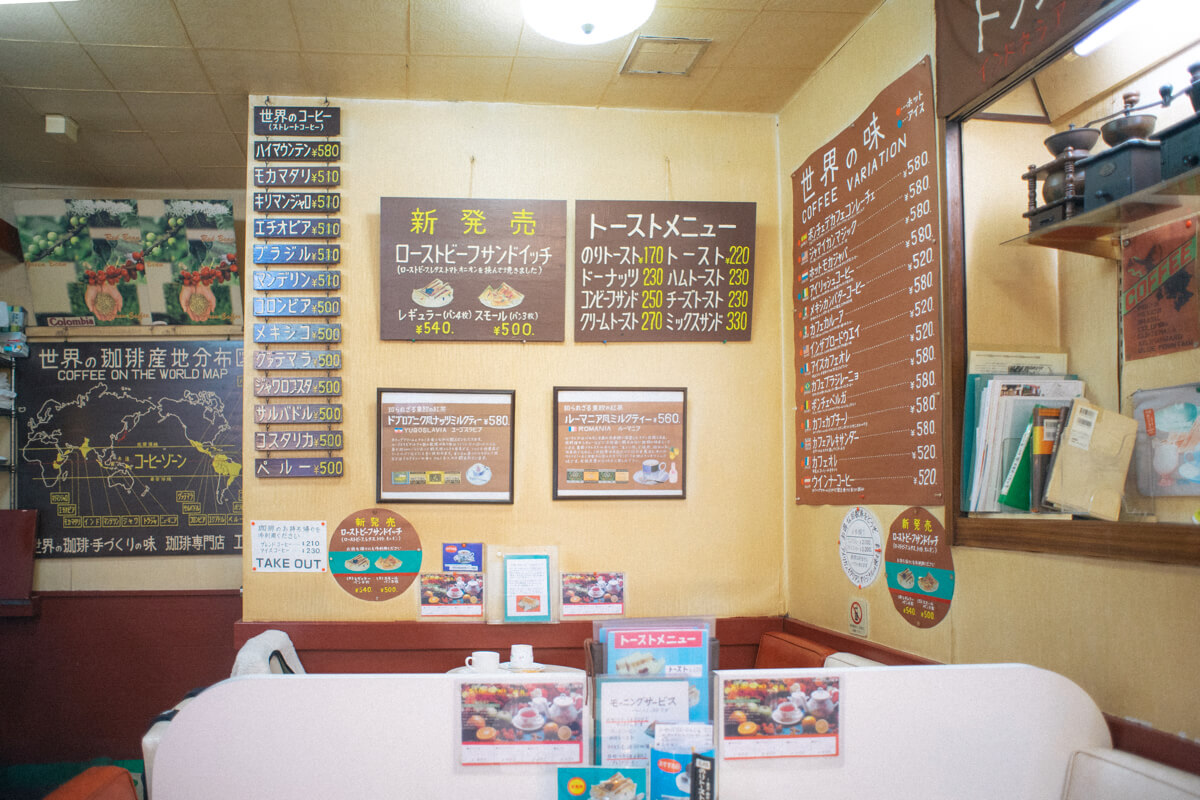
I have come here on my before but I had no idea he had written all of this out so in learning more about it I have come to love Cafe Ace even more.
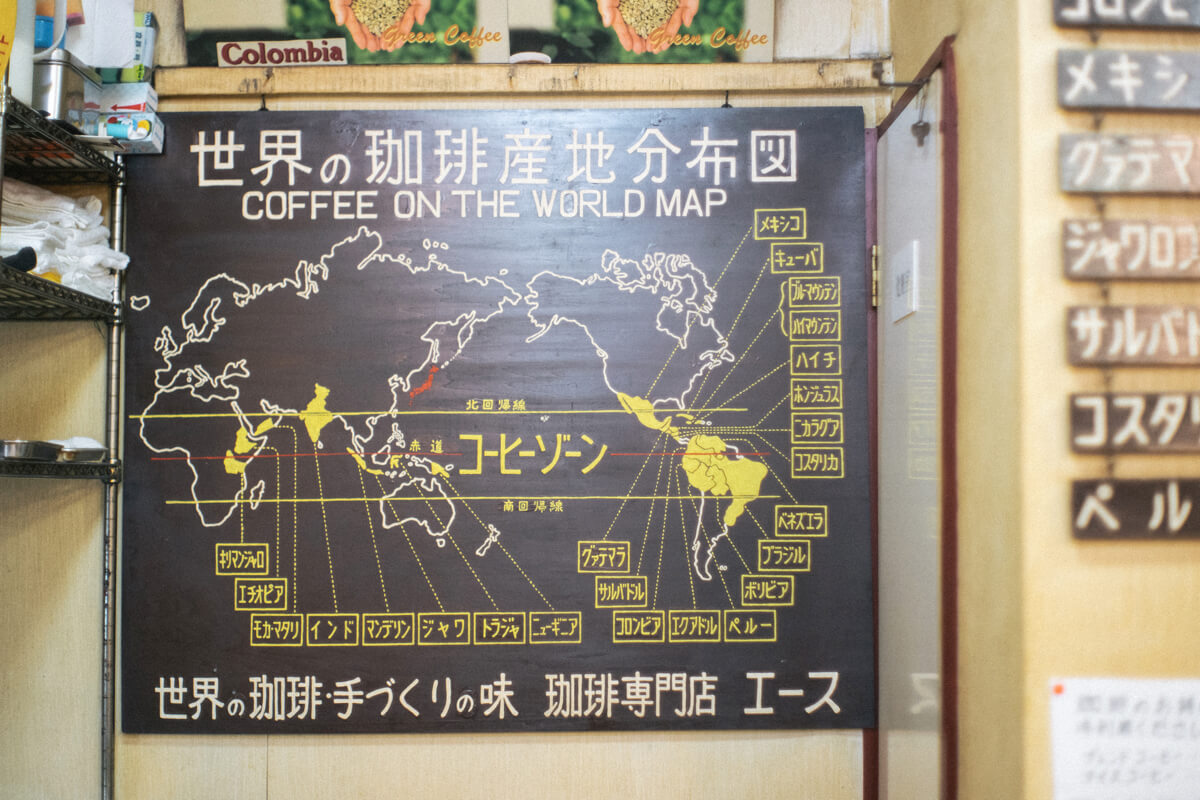
His love and warmth can be felt throughout the whole room.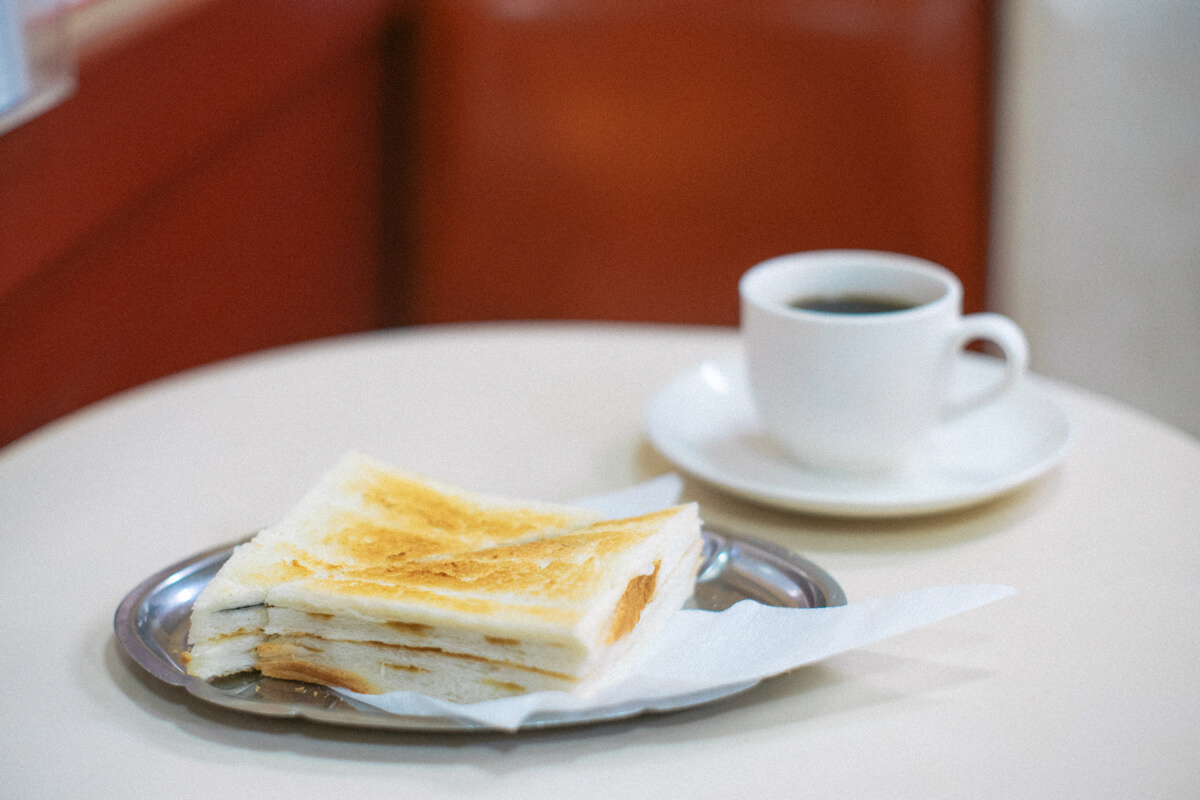
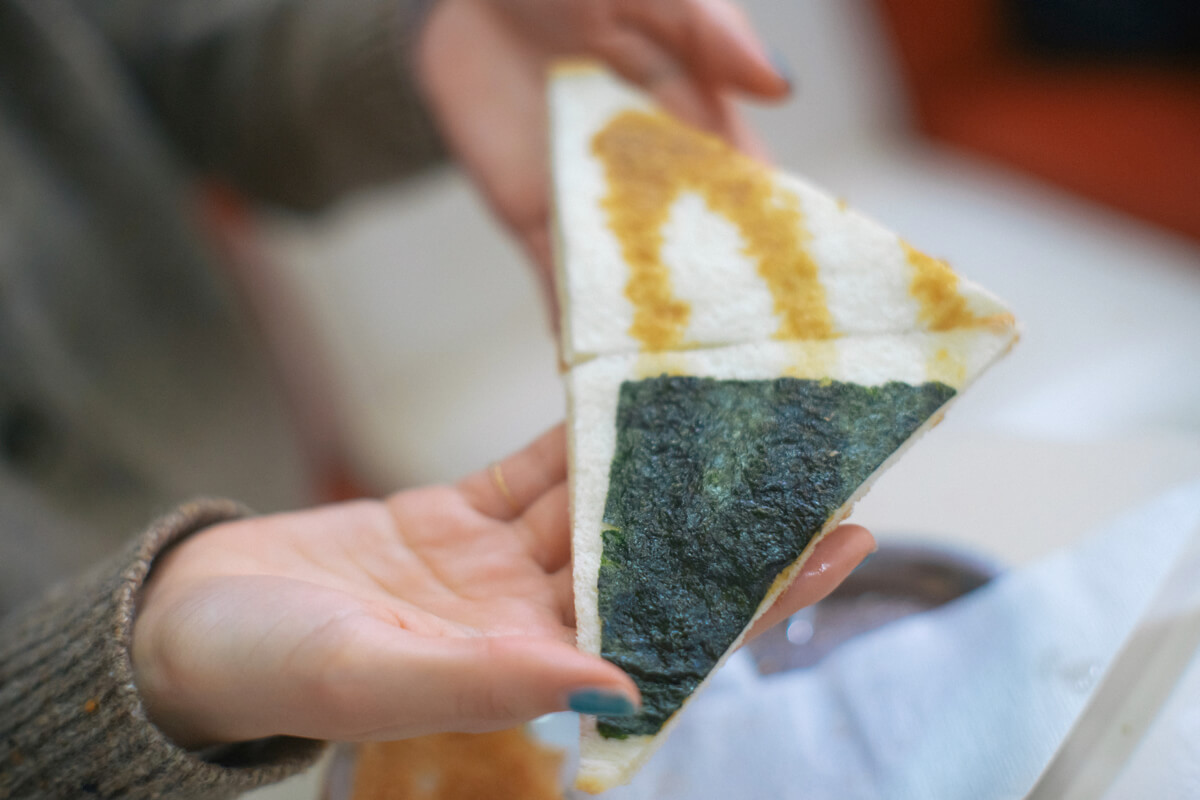
And this―this is Cafe Ace’s famous seaweed toast! It’s made with seaweed, butter and soy sauce.
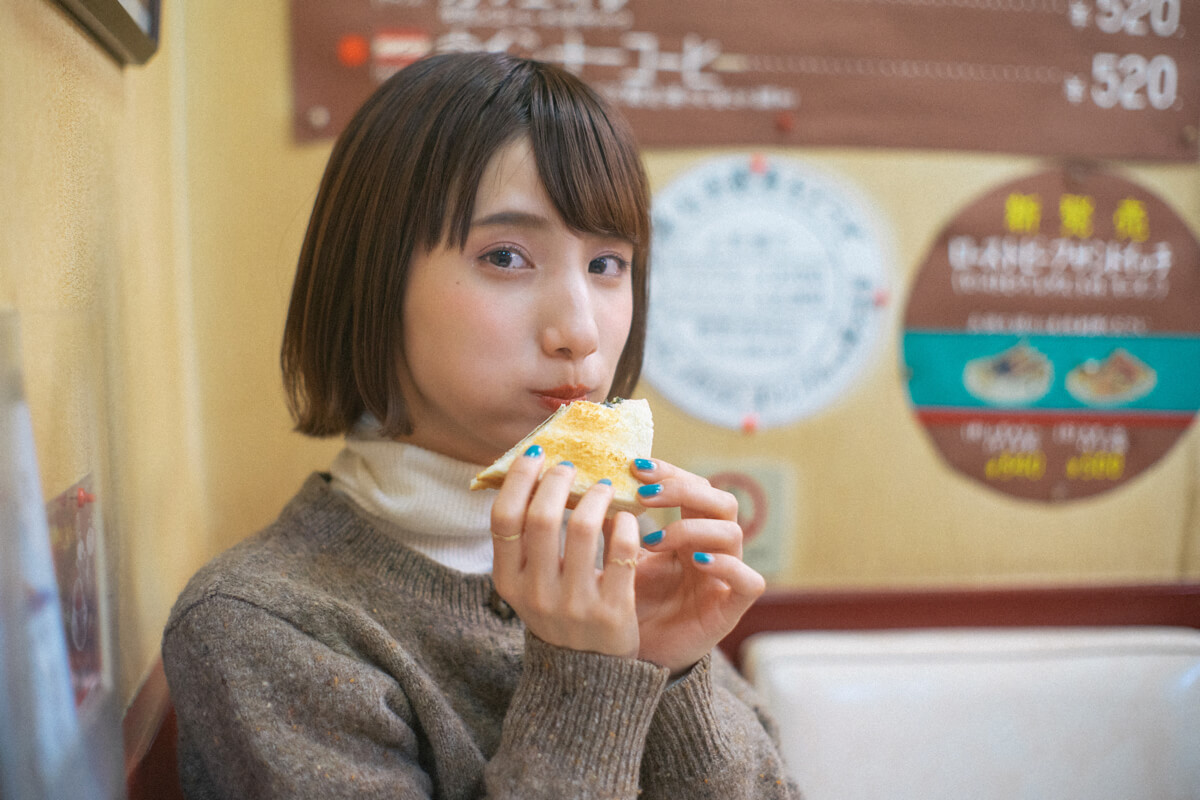
The ingredients are simple but the flavour of the seaweed complements the butter perfectly. It’s super delicious, I want to eat it everyday! And it only costs ¥170.In the morning you can have it with blend coffee for ¥500 (+¥20 for iced coffee). You even get free refills on the blend coffee up until noon!
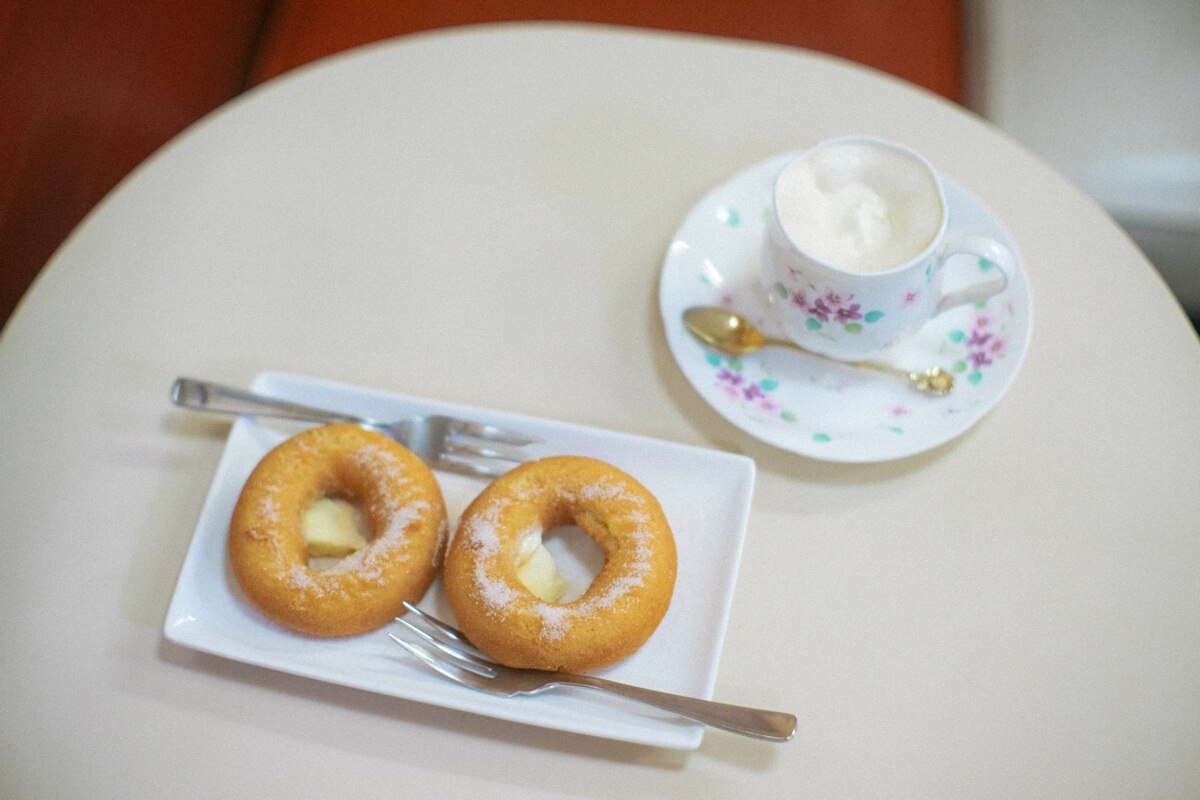
American doughnuts, too. You can enjoy these at the small price of ¥230. They are sprinkled with cinnamon sugar and serve with a knob of butter in the ring. The heat of the doughnuts helps the butter to melt so you can lather it all over.
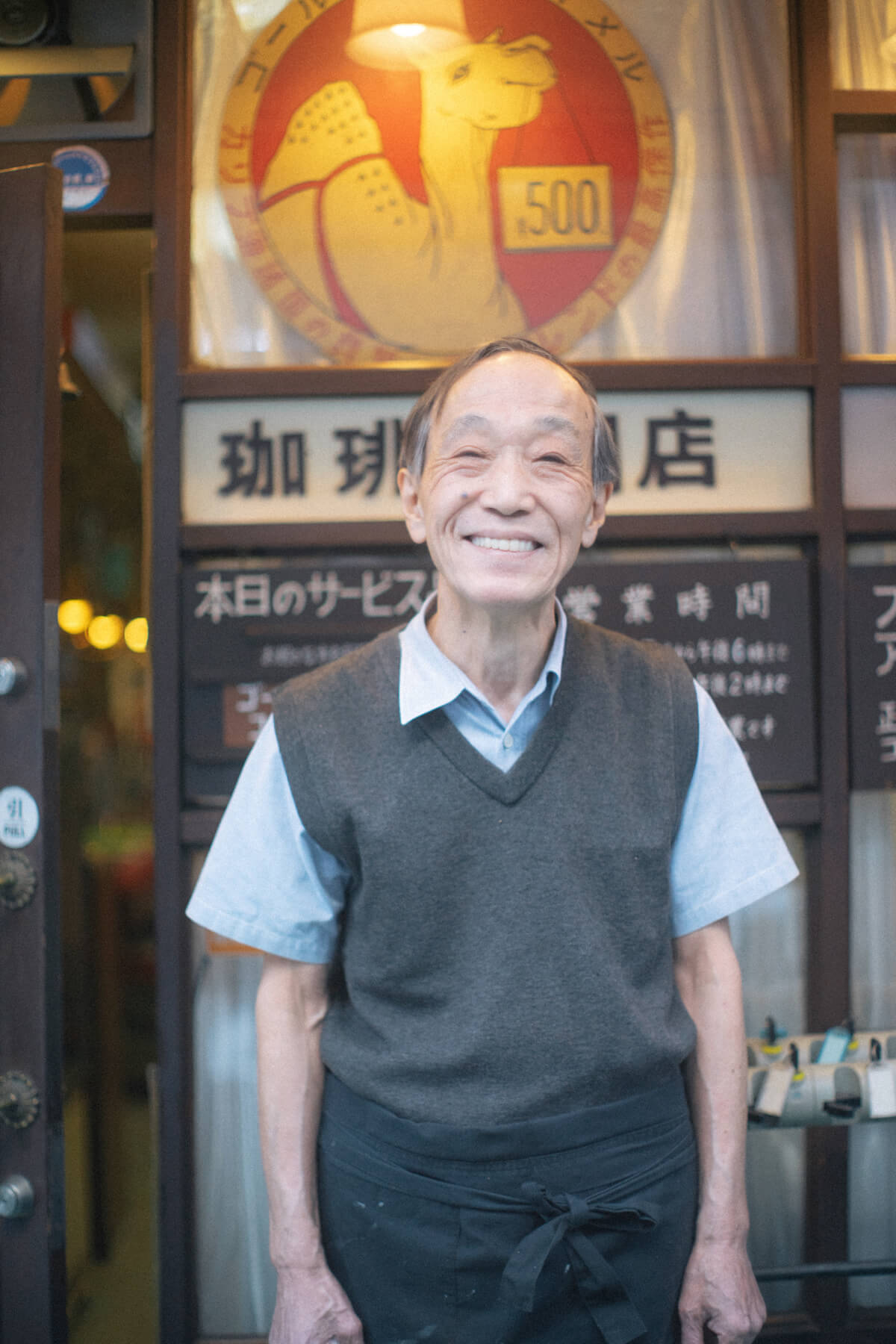
Finally, a photo of the owner himself. Even in the photo I feel like his smile gives his customers strength. Seeing his lively energy gave me energy too.
He holds his valuable feelings close, doing what he loves in the place he loves. I want to keep on seeing his radiating smile.
Information
Cafe Ace
Address: 3-10-6 Kanda, Chiyoda Ward, Tokyo
Opening Hours: Weekdays 7:00-18:00 / Saturday 7:00-14:00
Closed: Sundays & National Holidays
Access: 3-minutes on foot from Kanda Station via the JR Line and Tokyo Metro Ginza LineWriter: Ema Tanioku
Photographer: Haruka Yamamoto
Design: Yuko Abe (ASOBISYSTEM)Translation: Joshua Kitosi-Isanga

